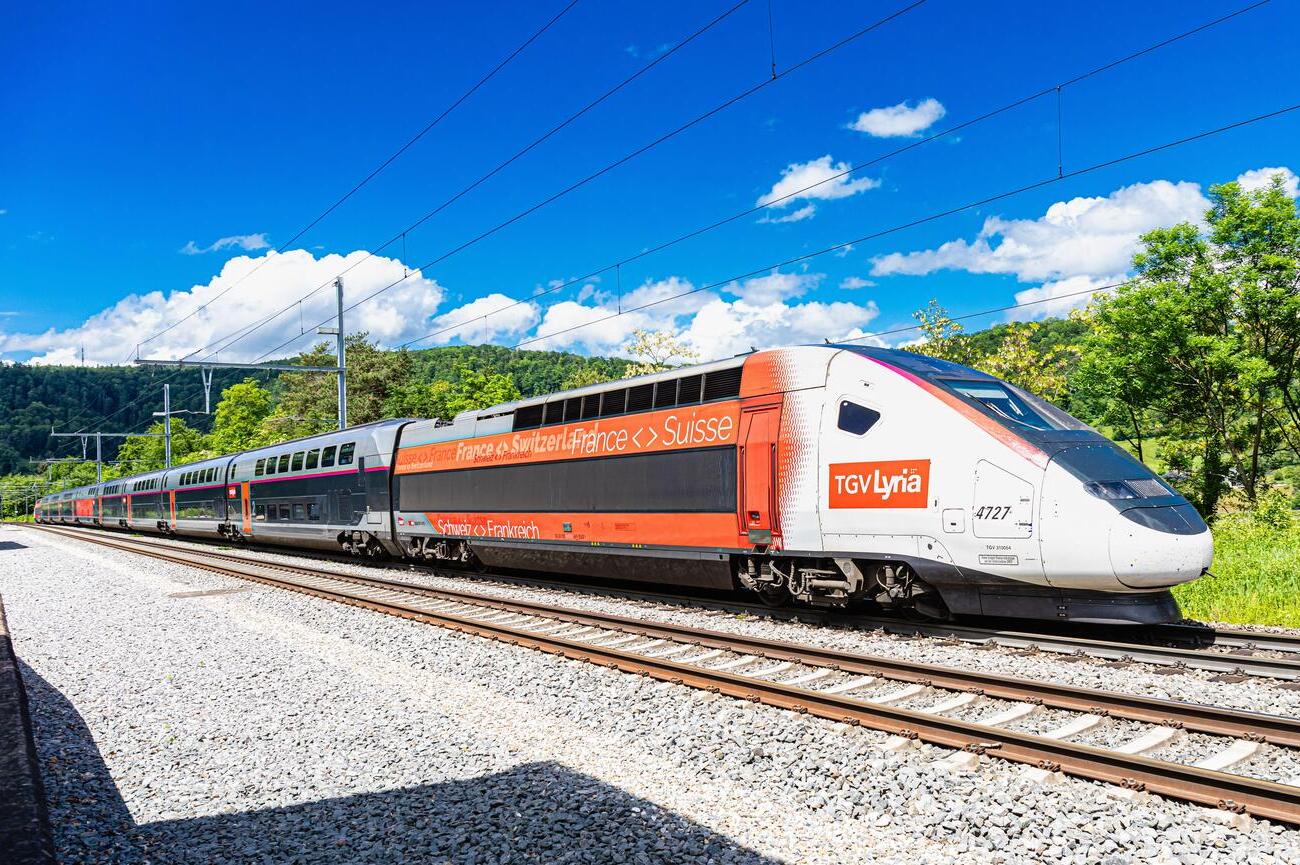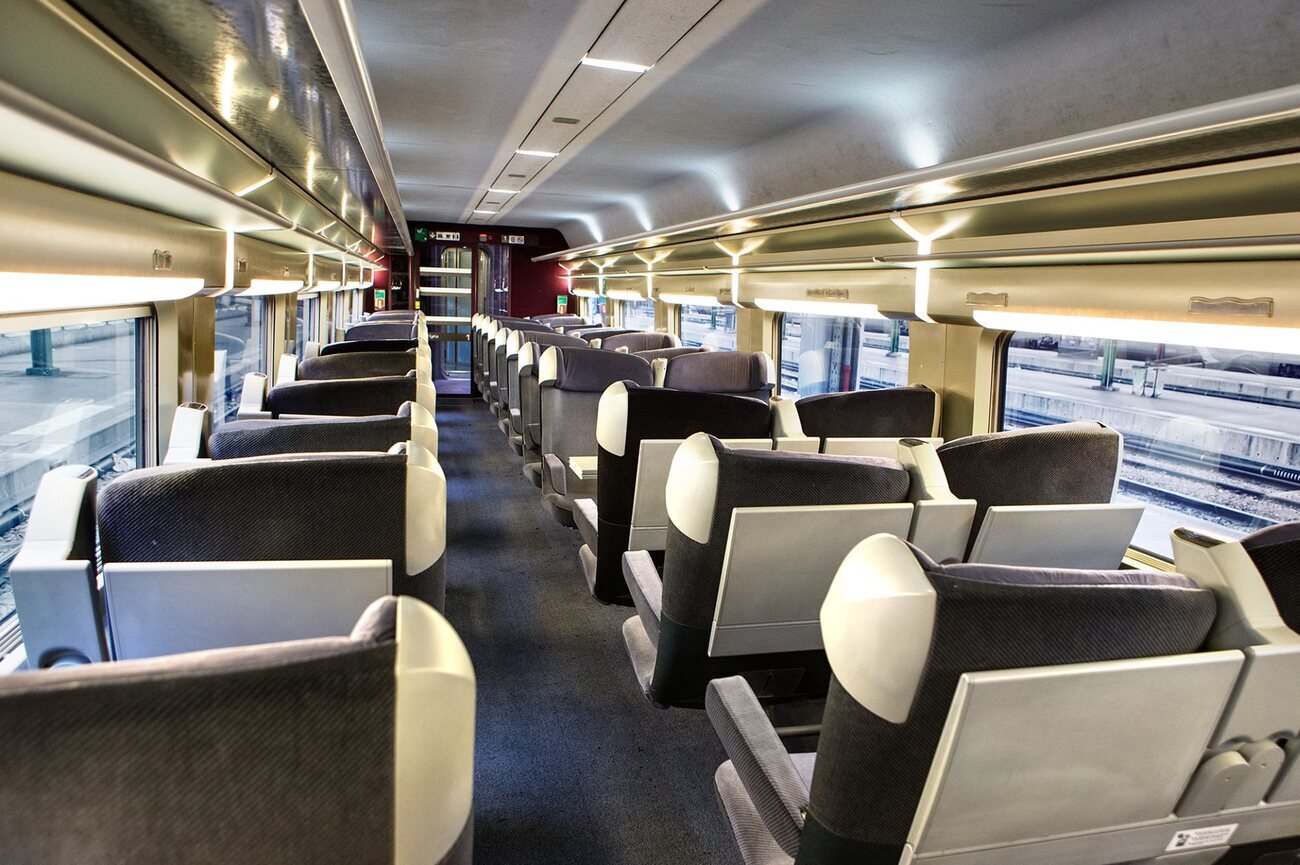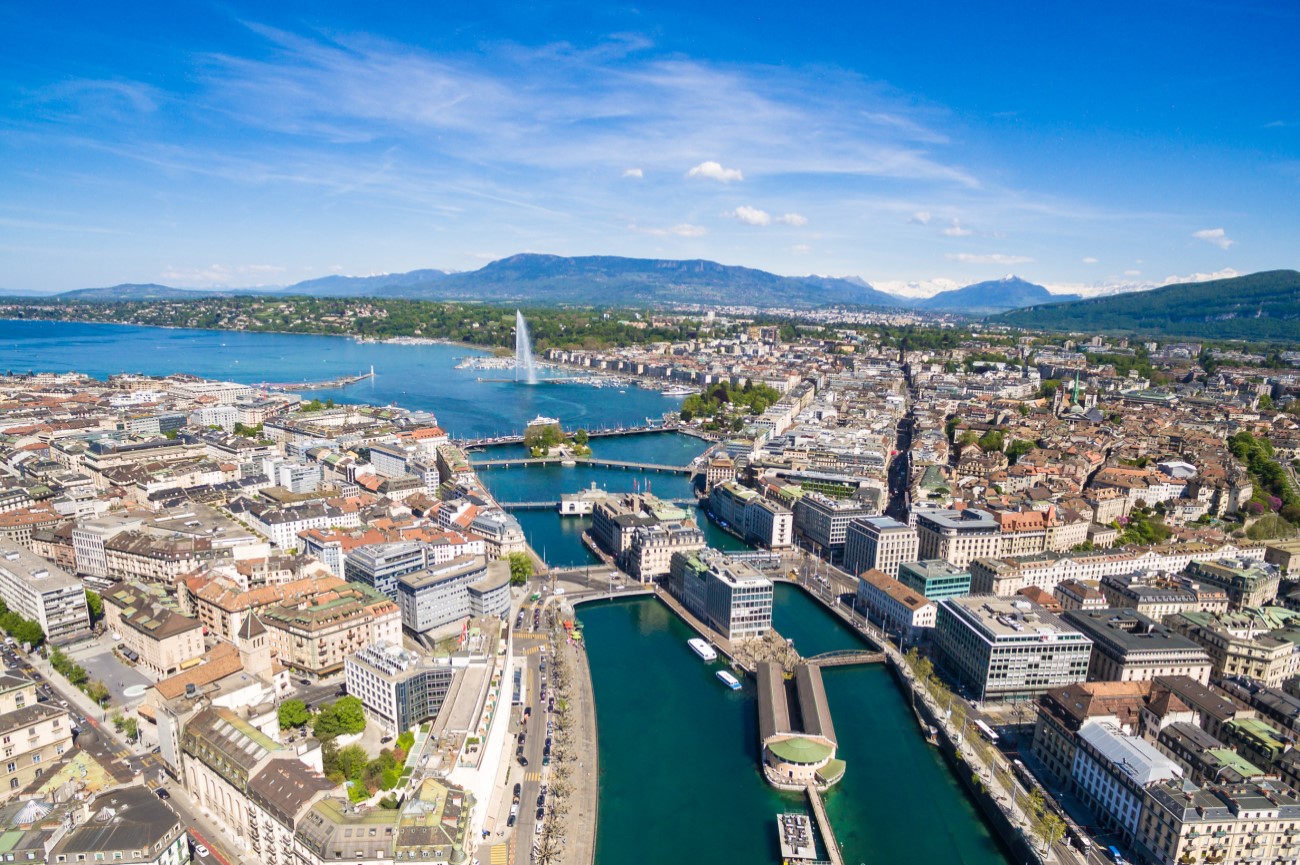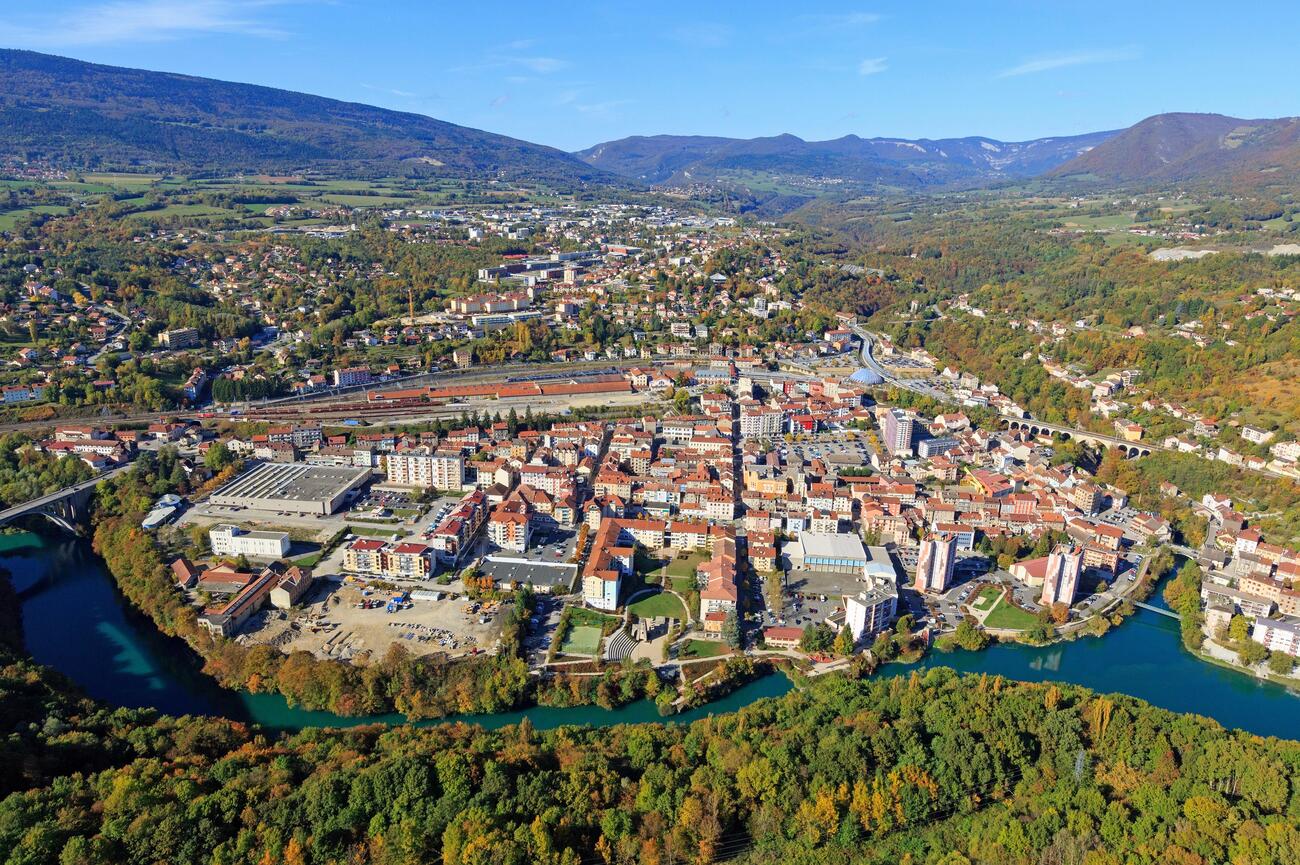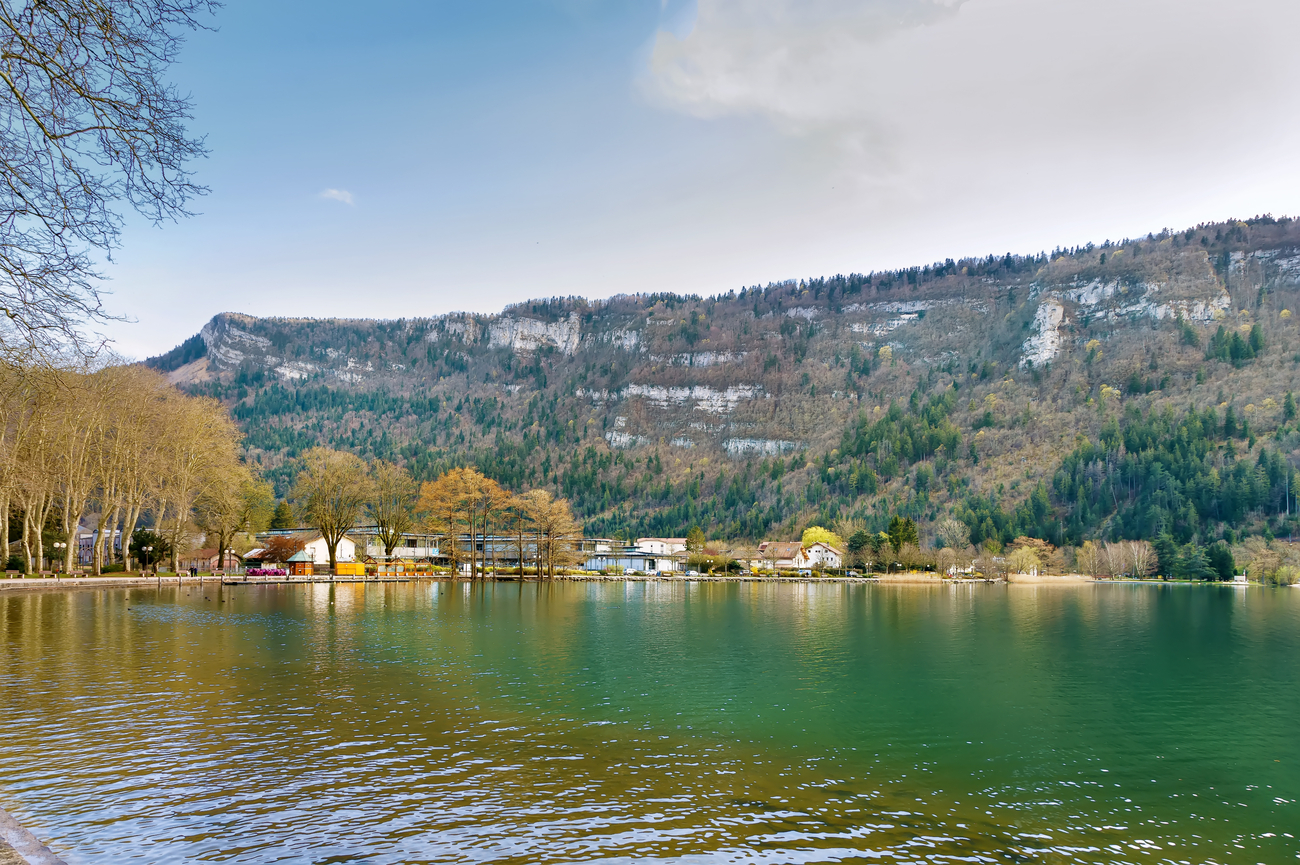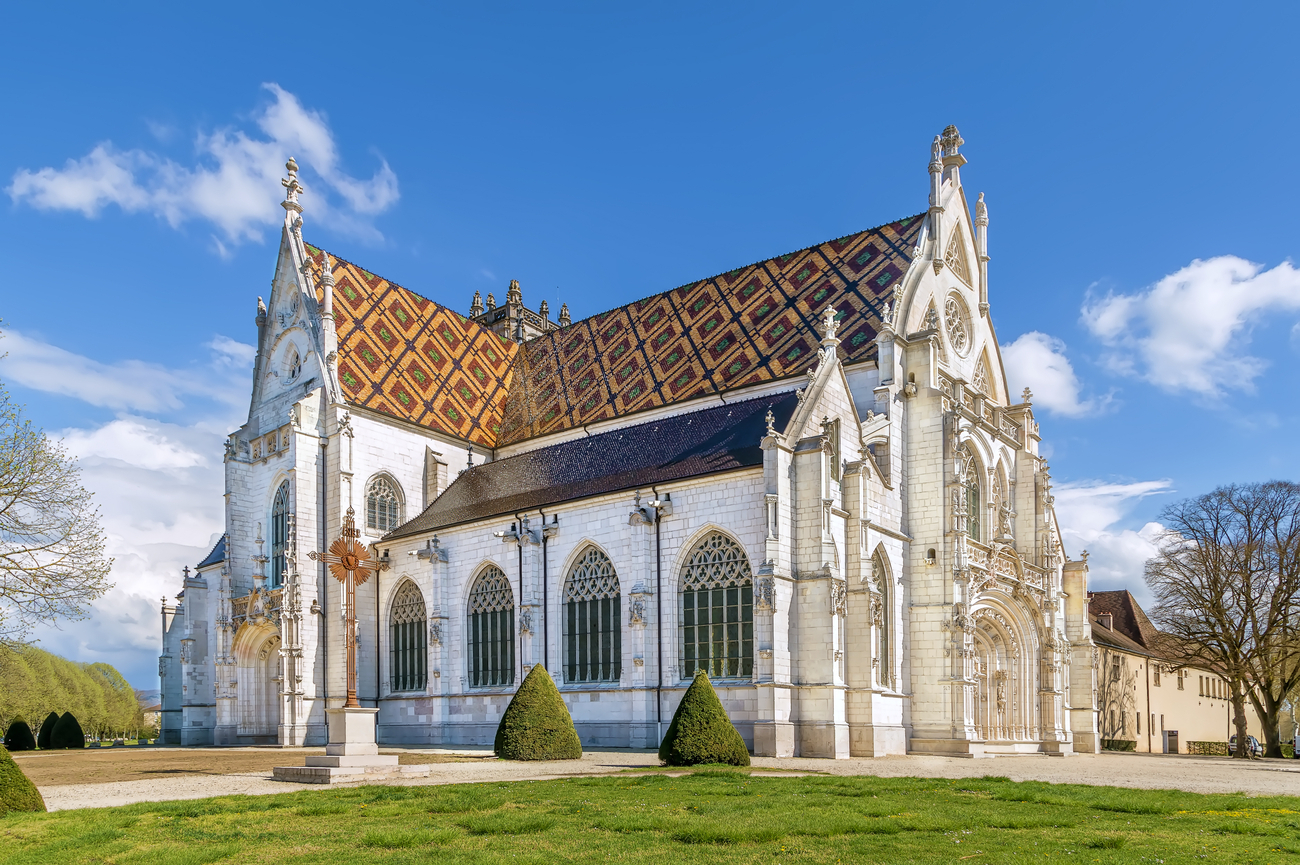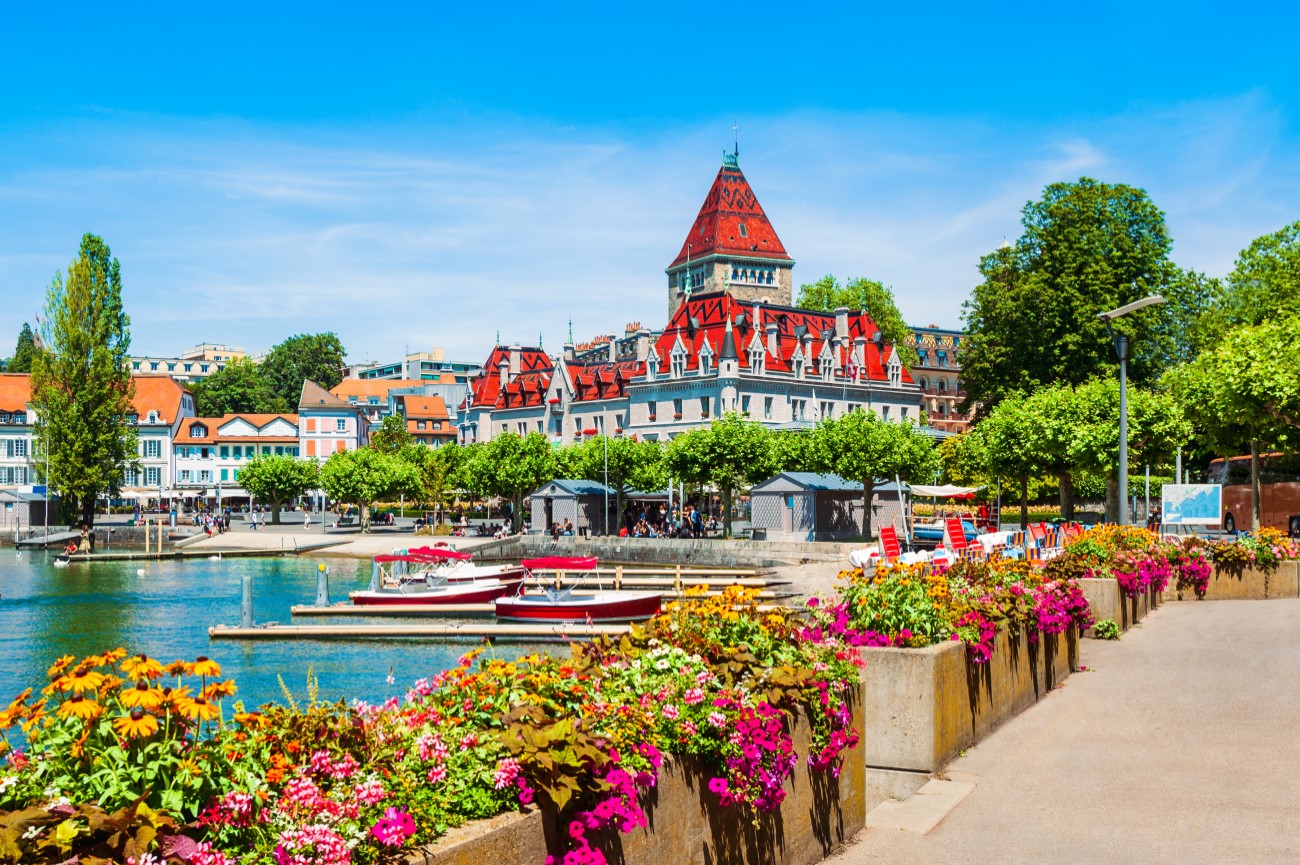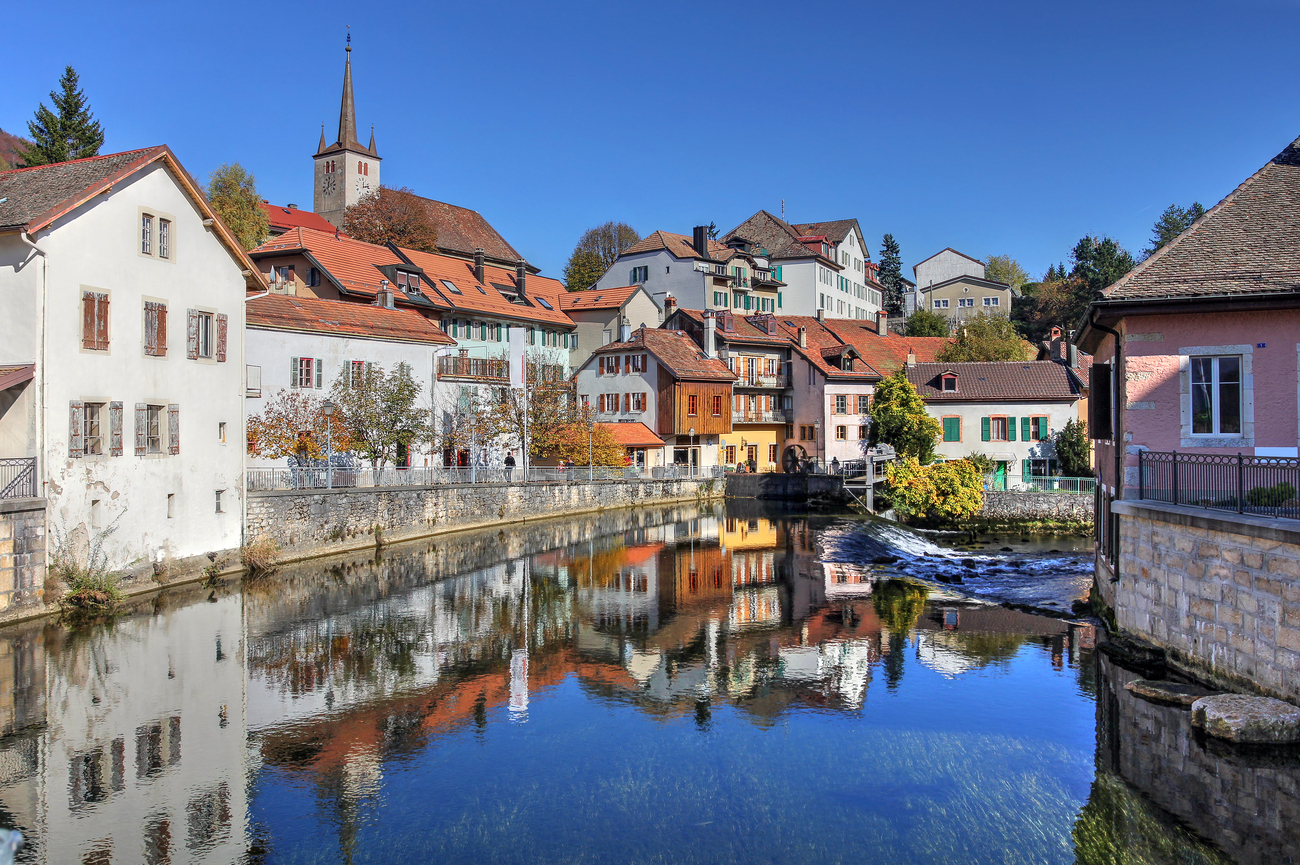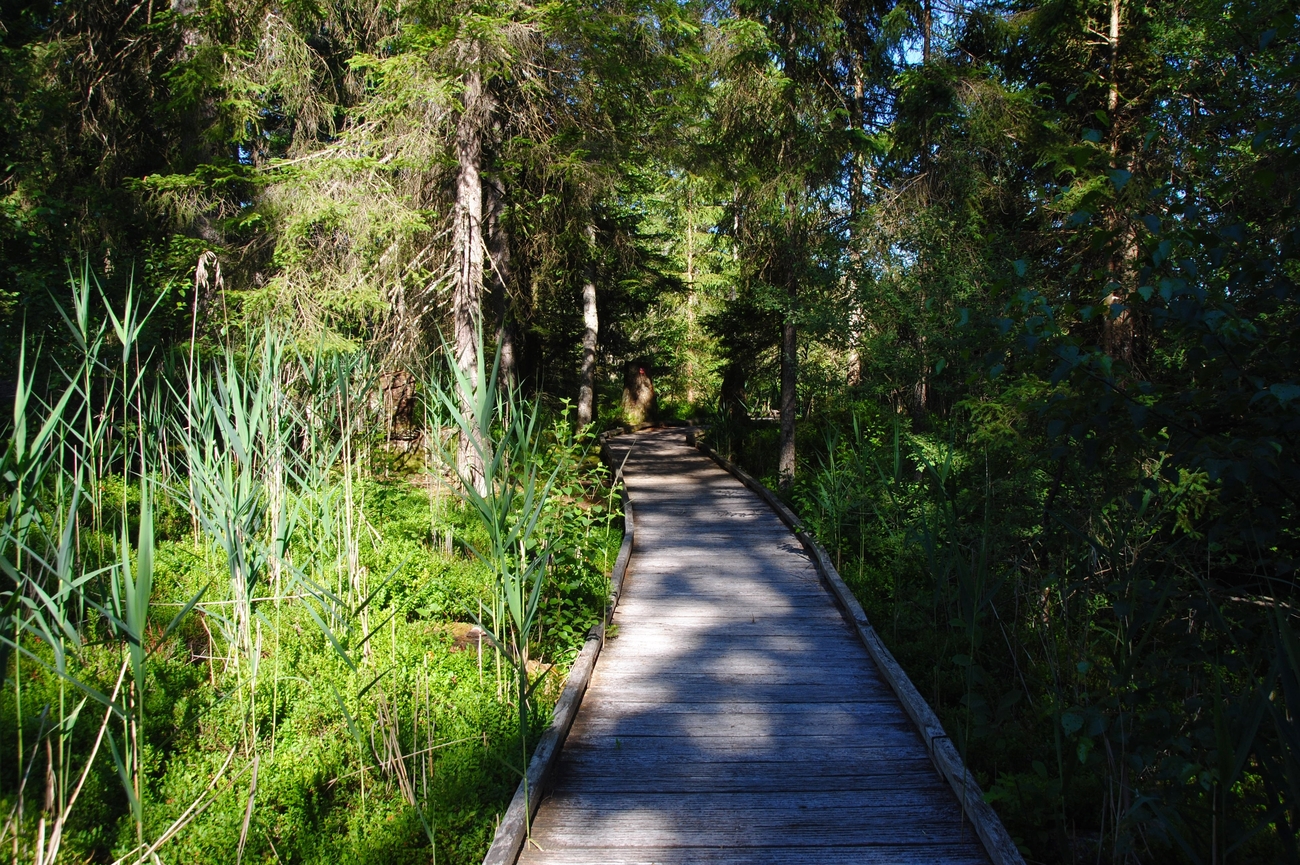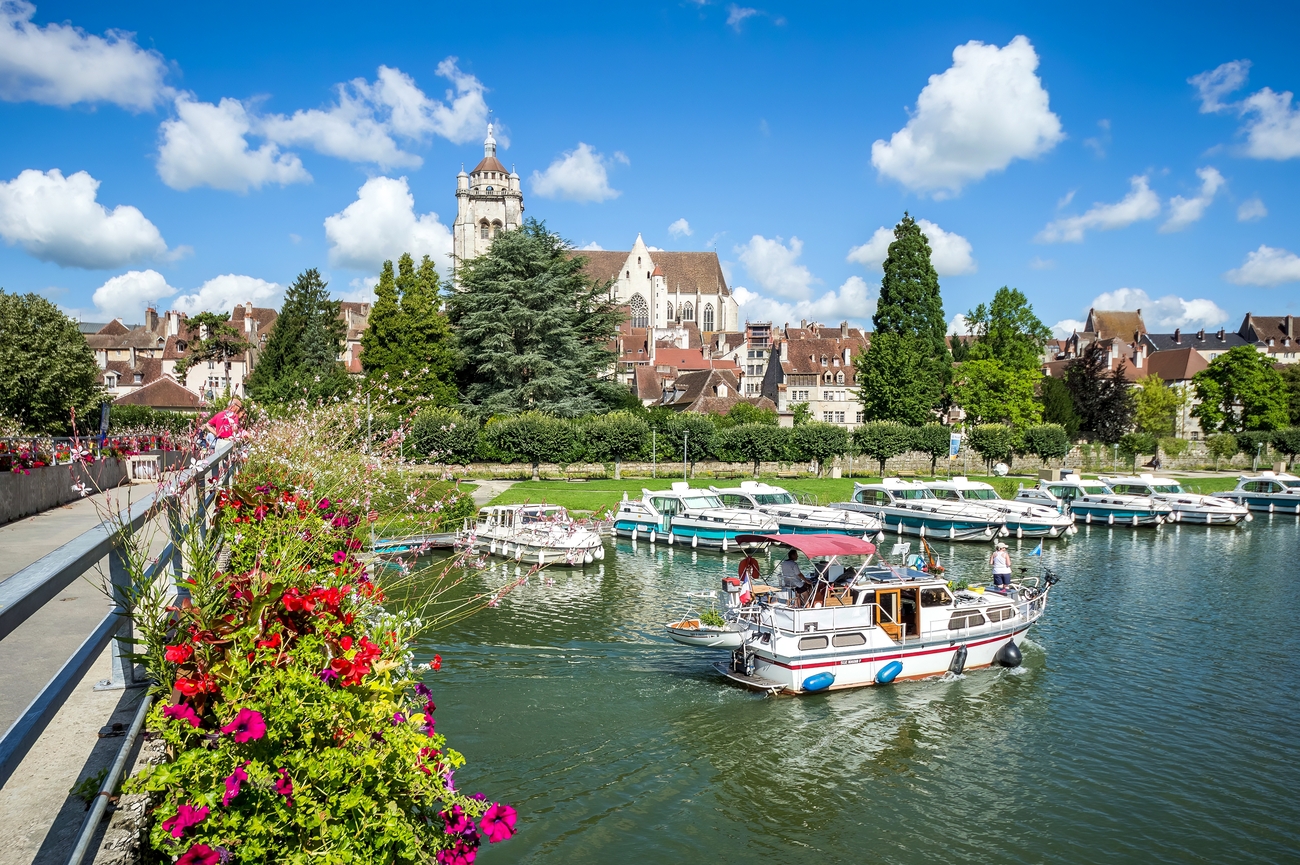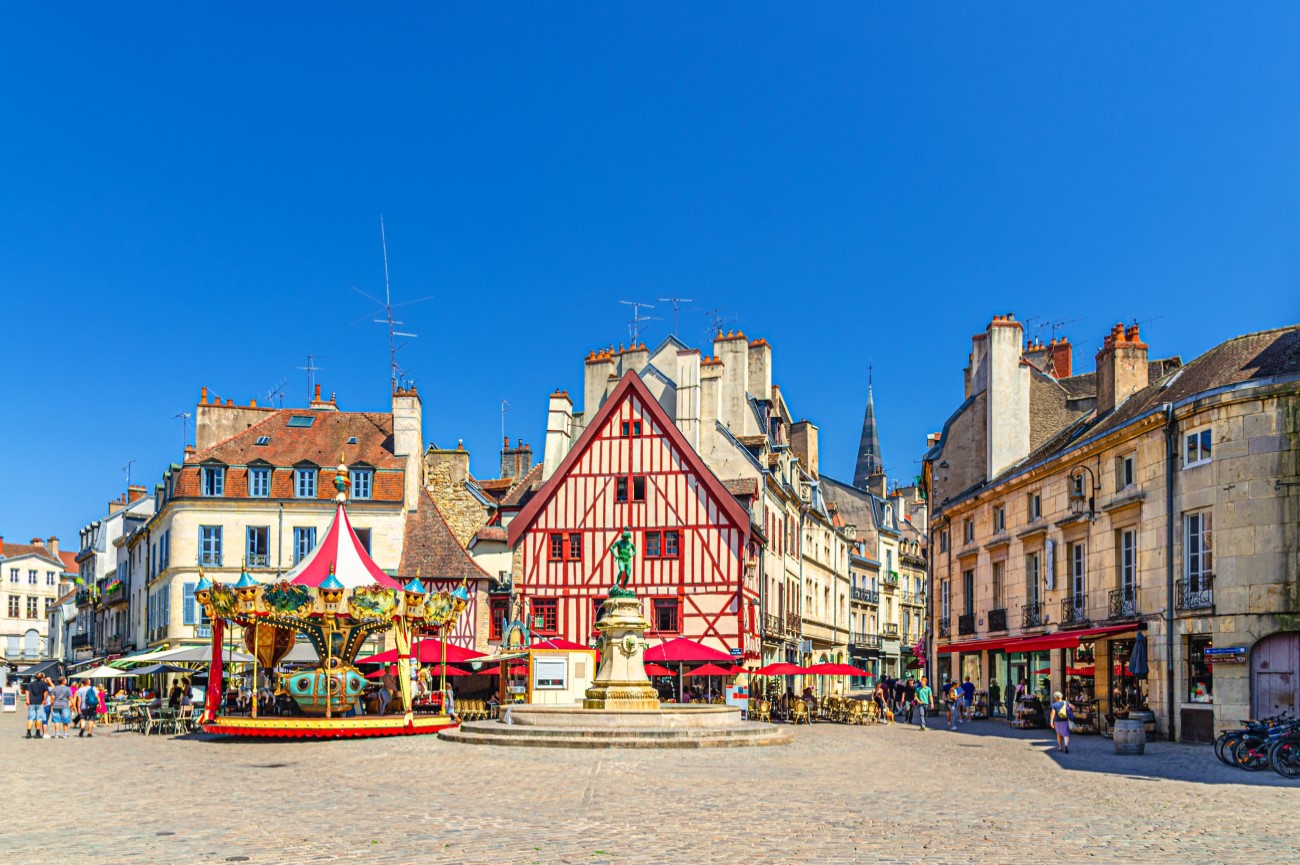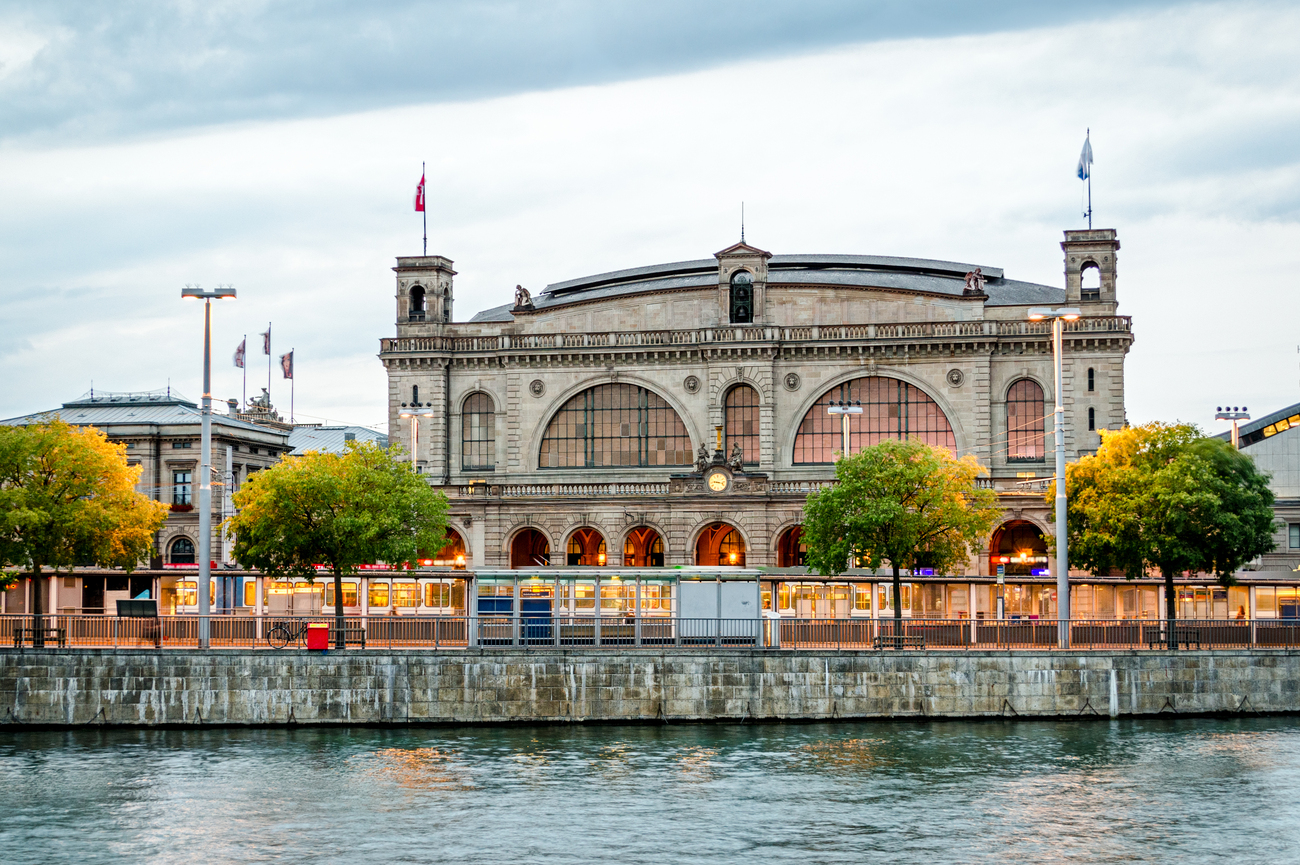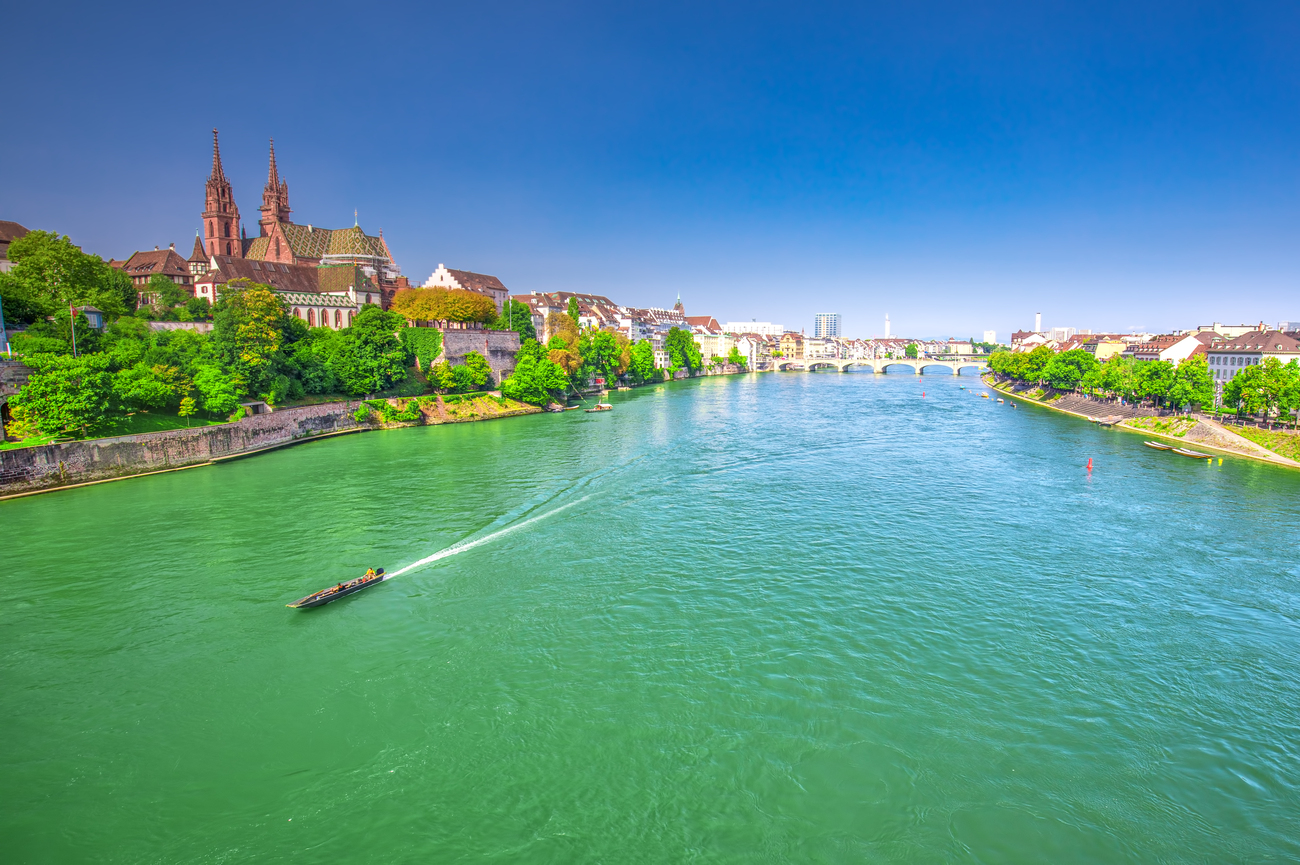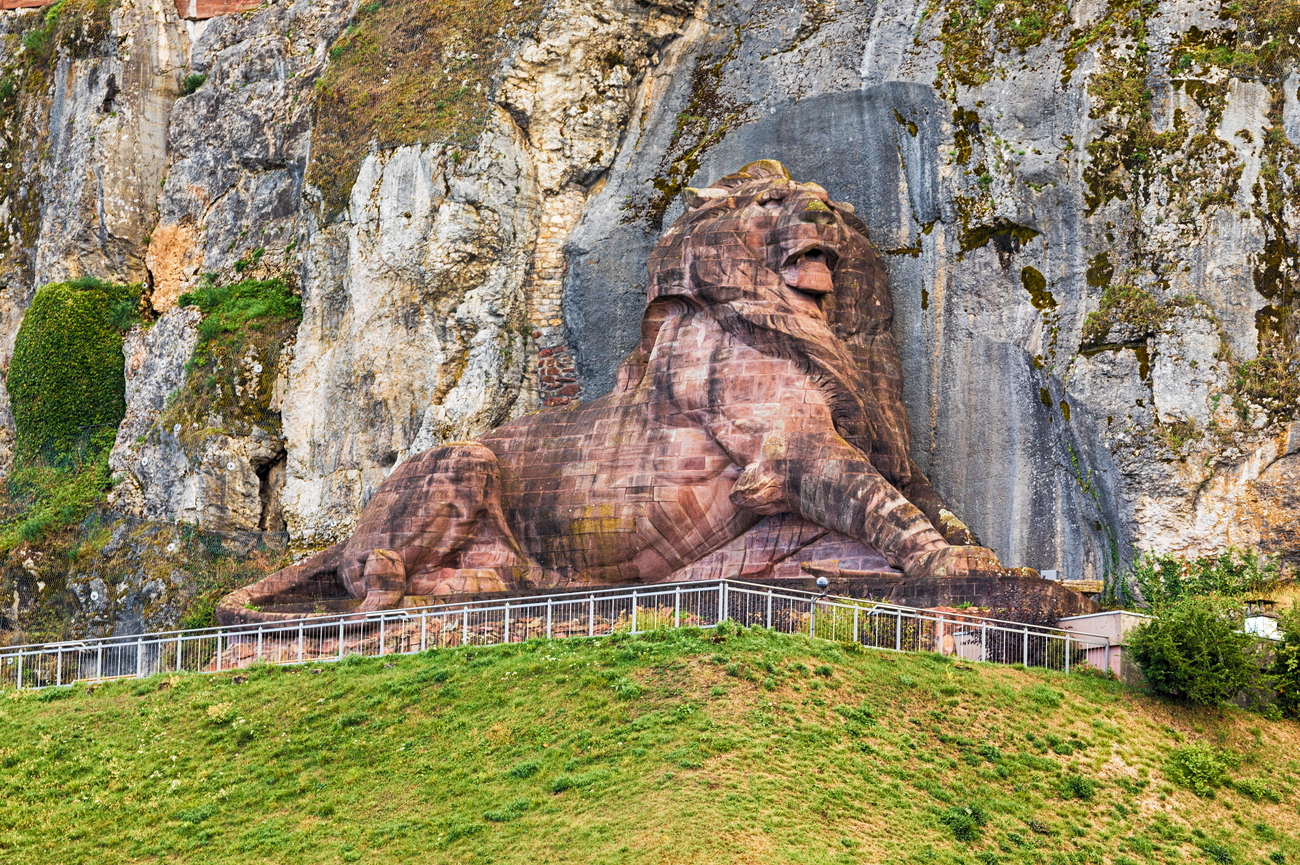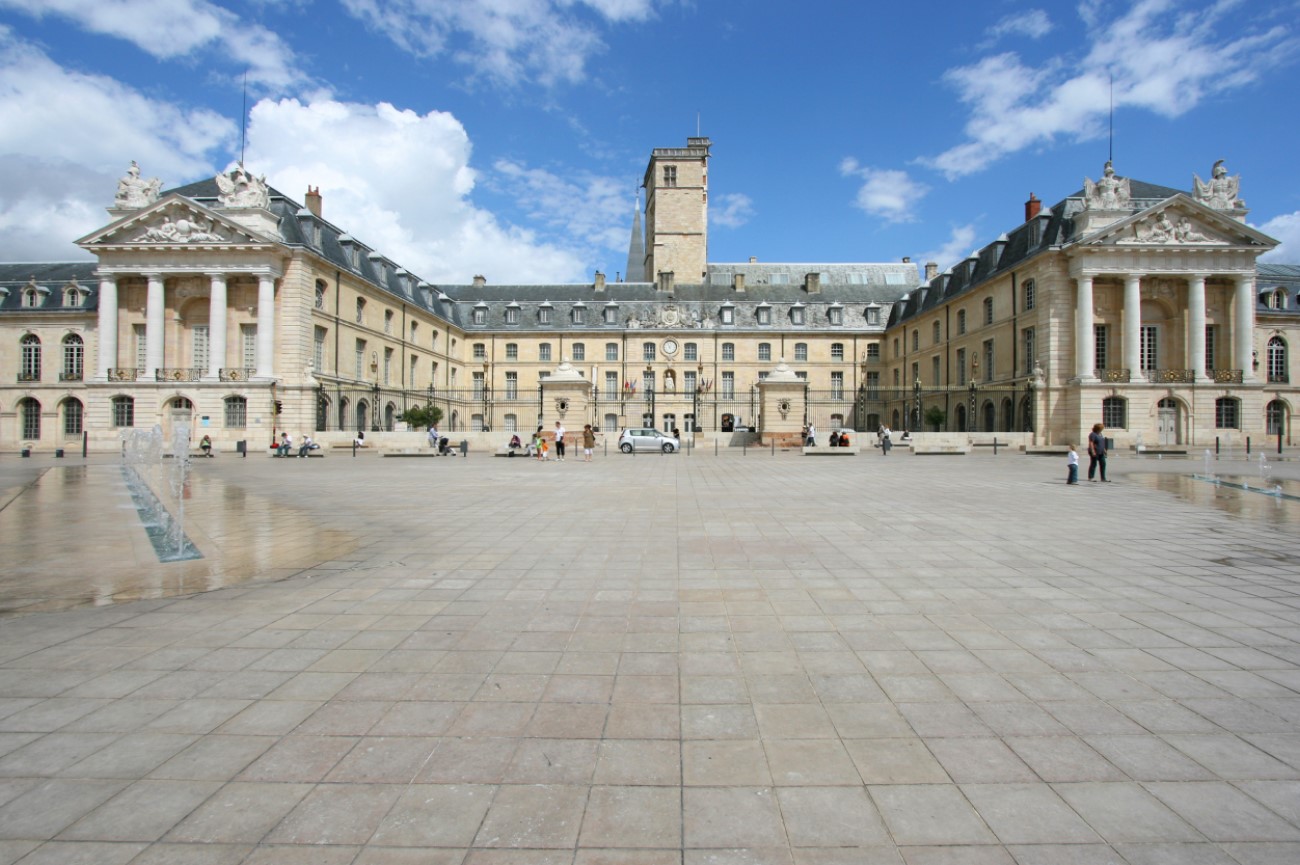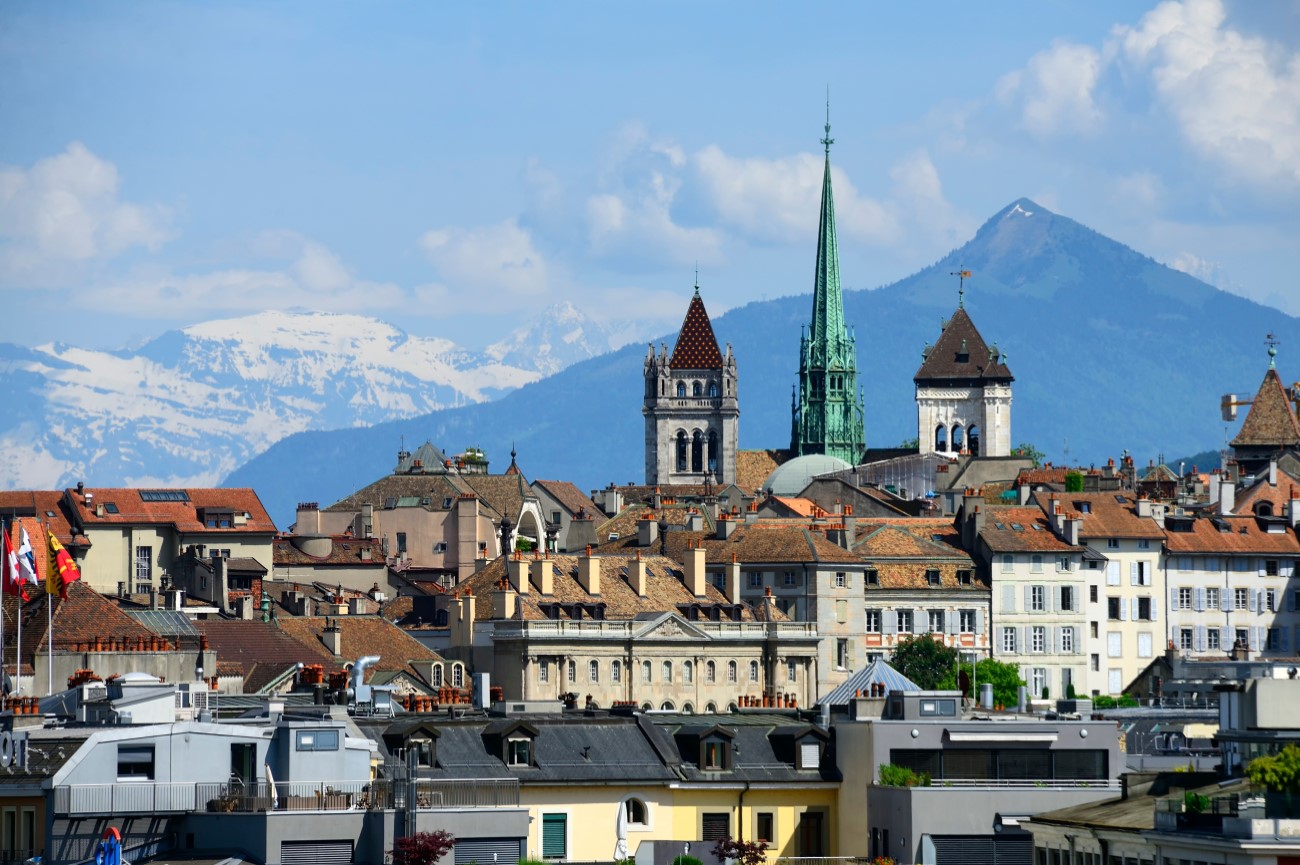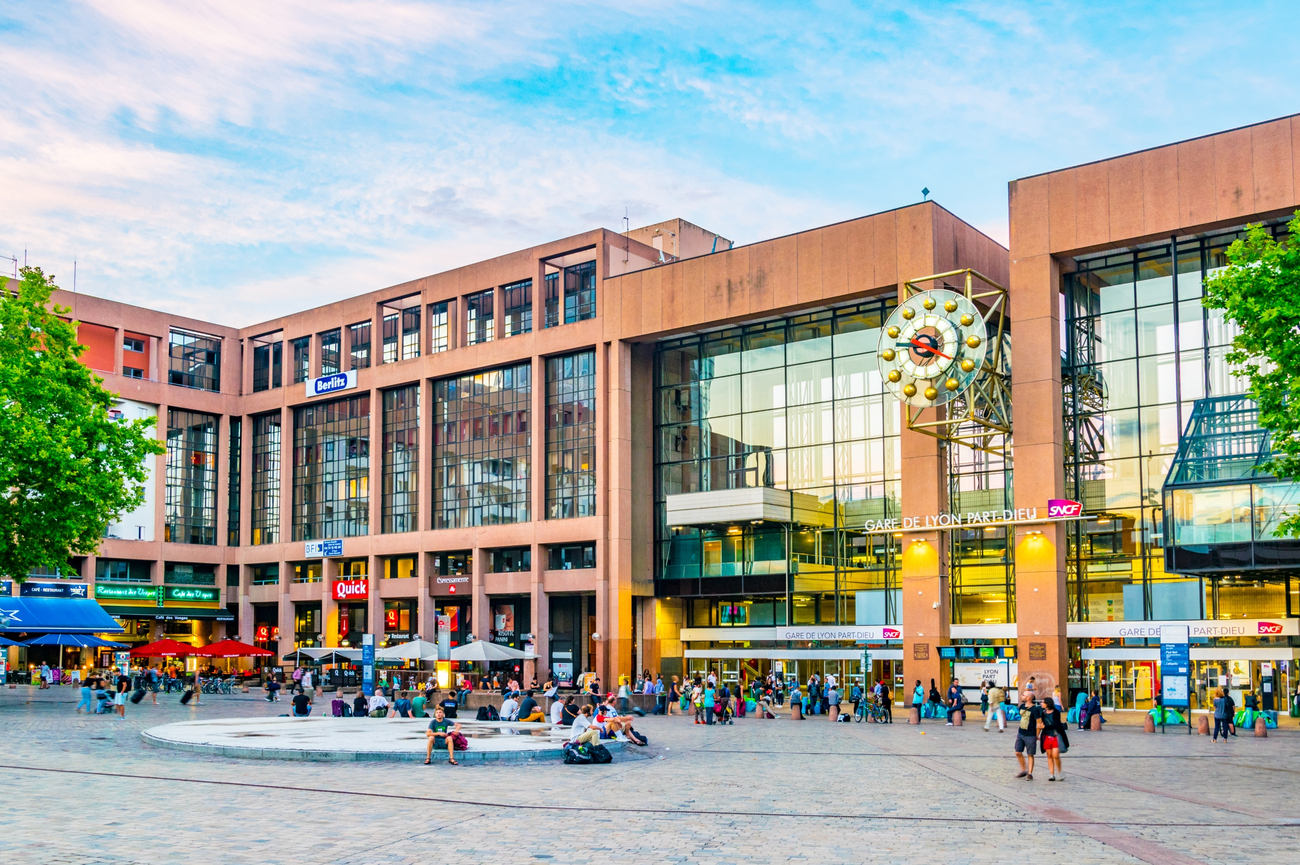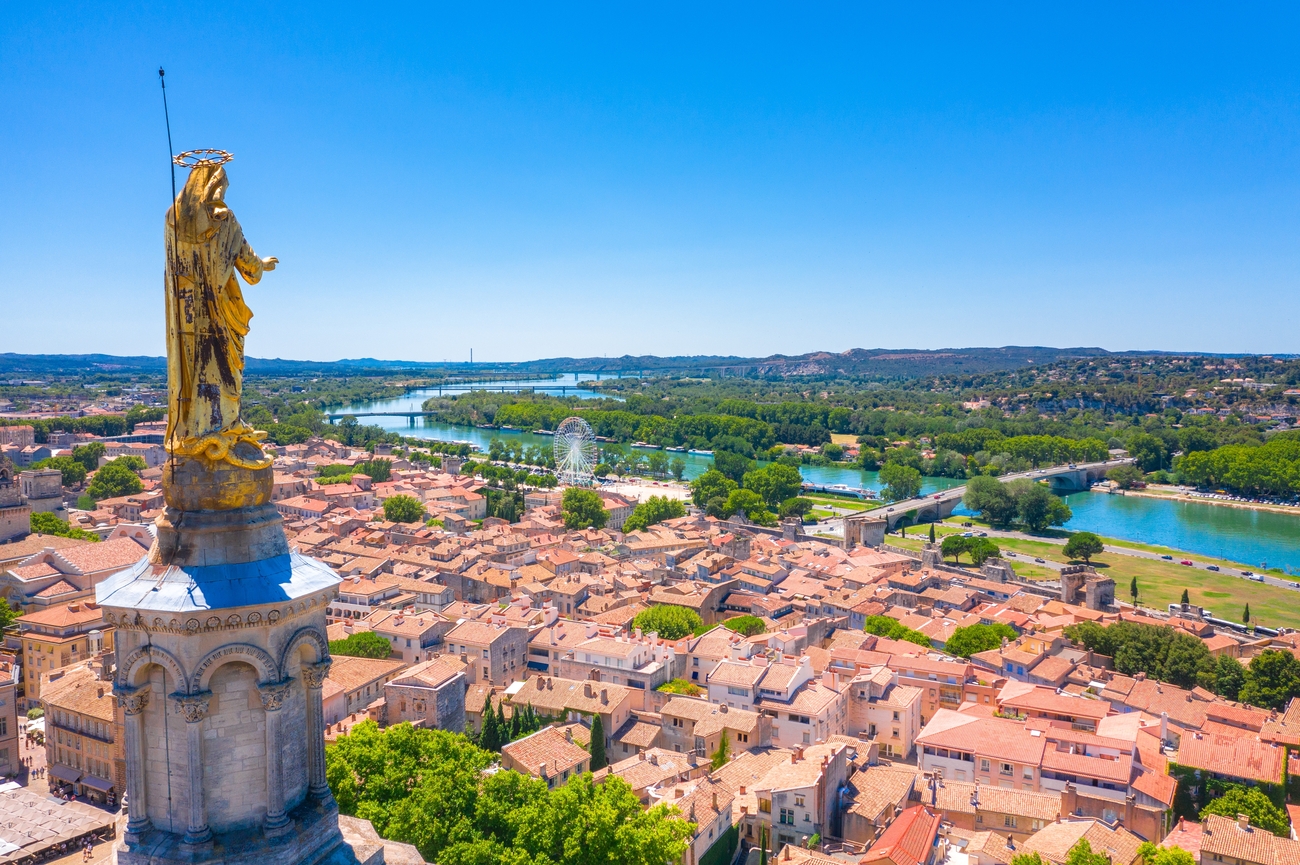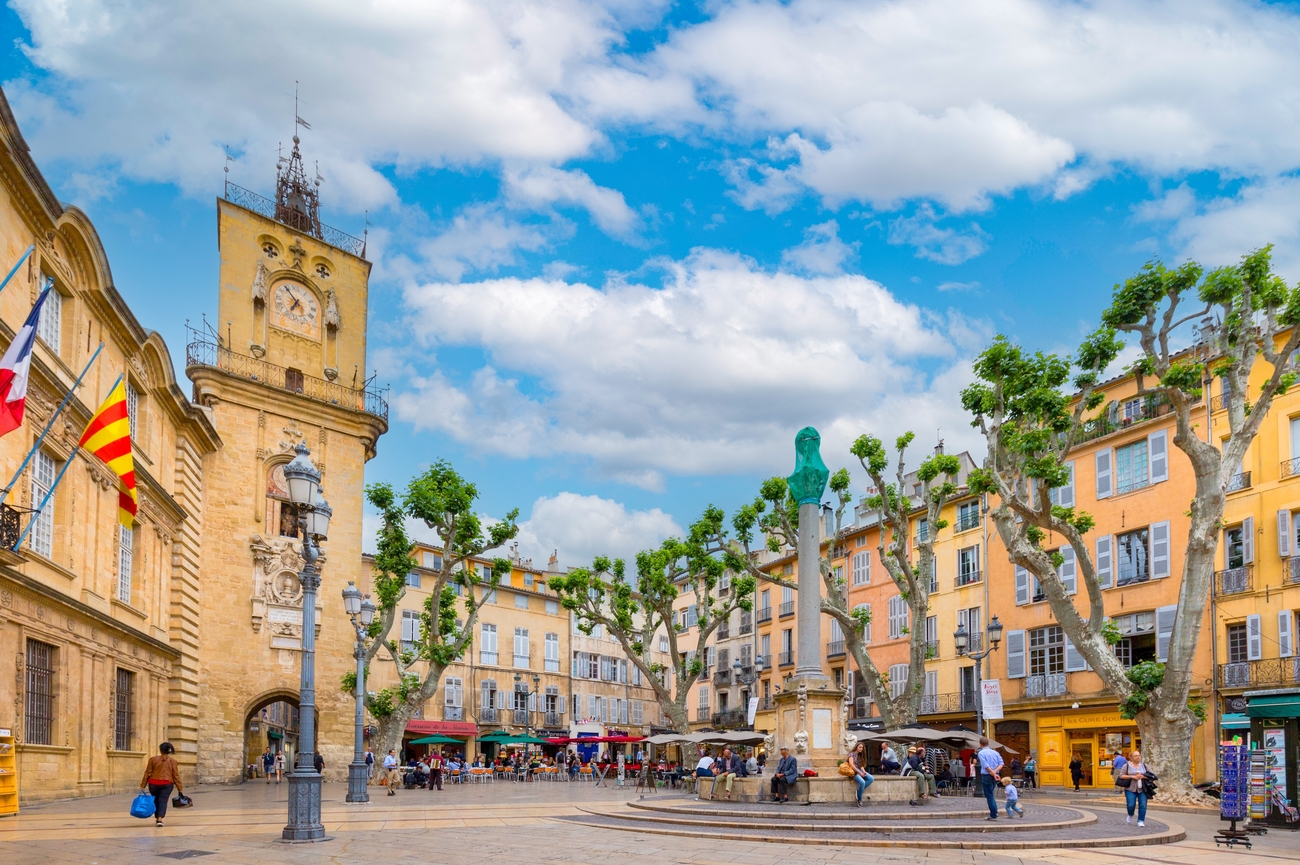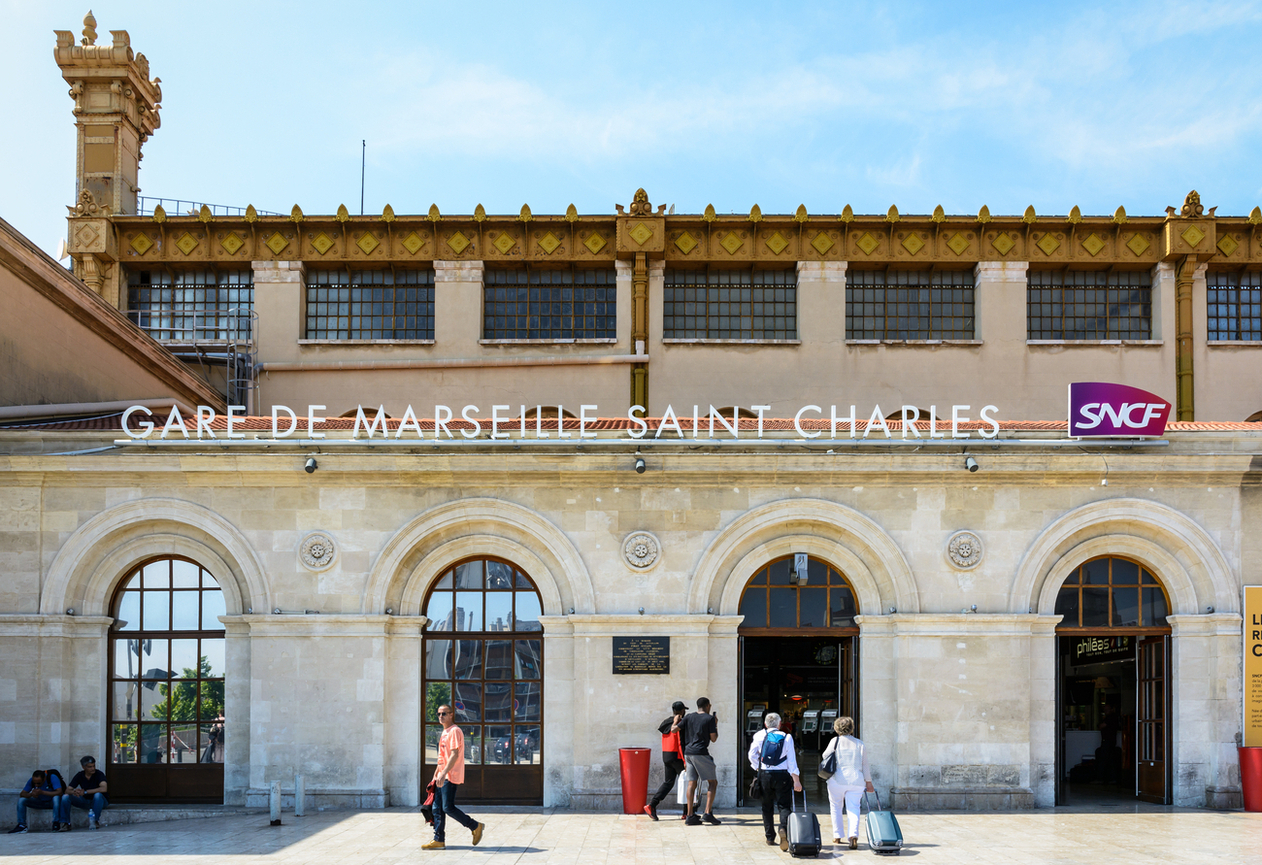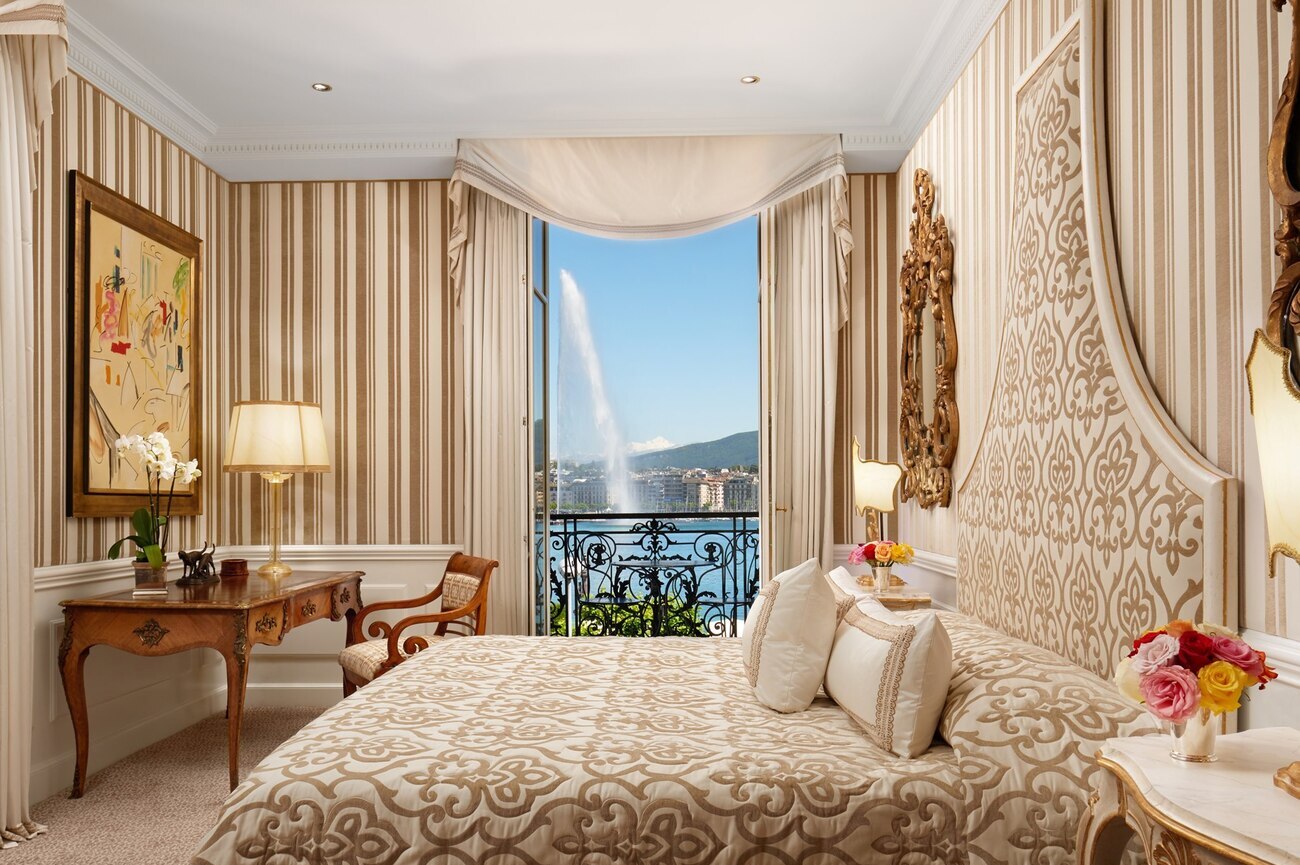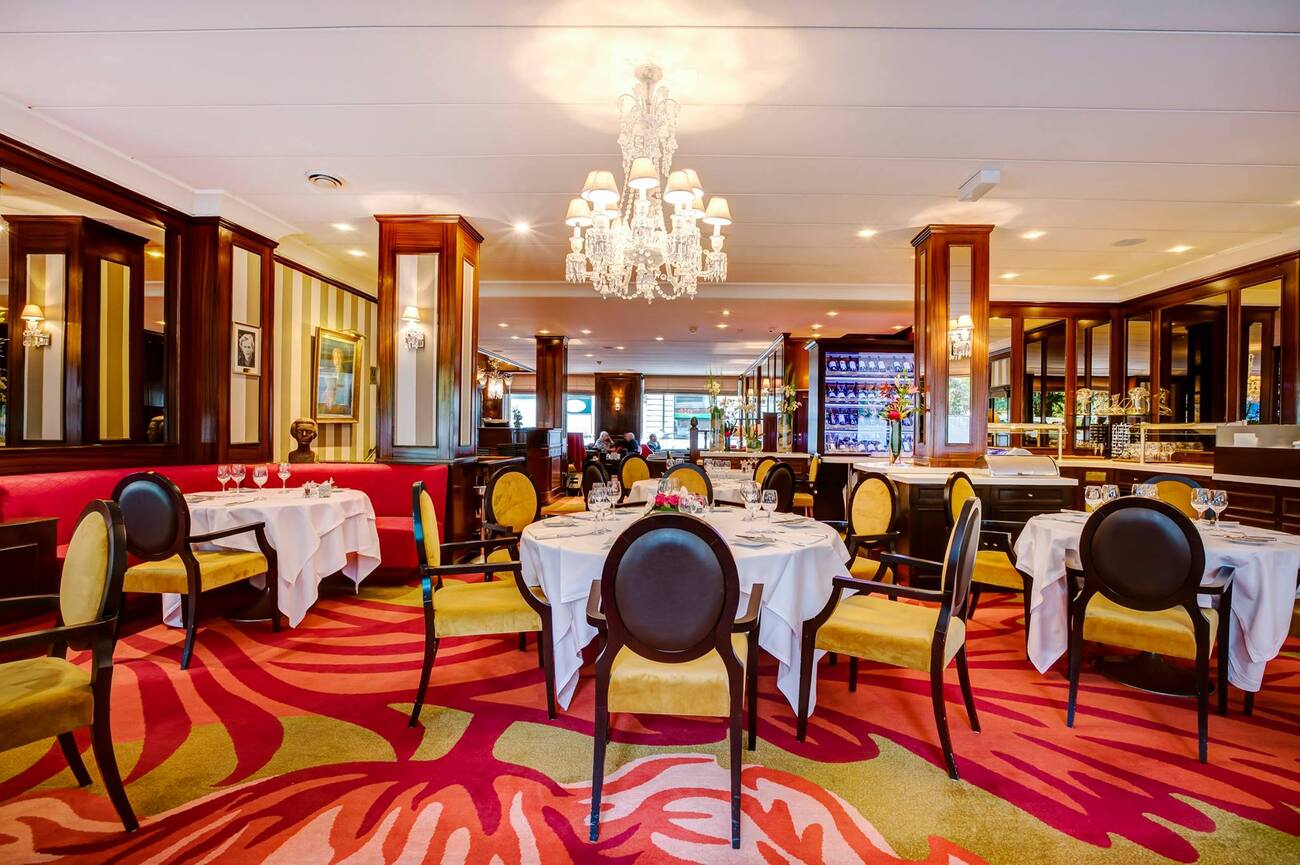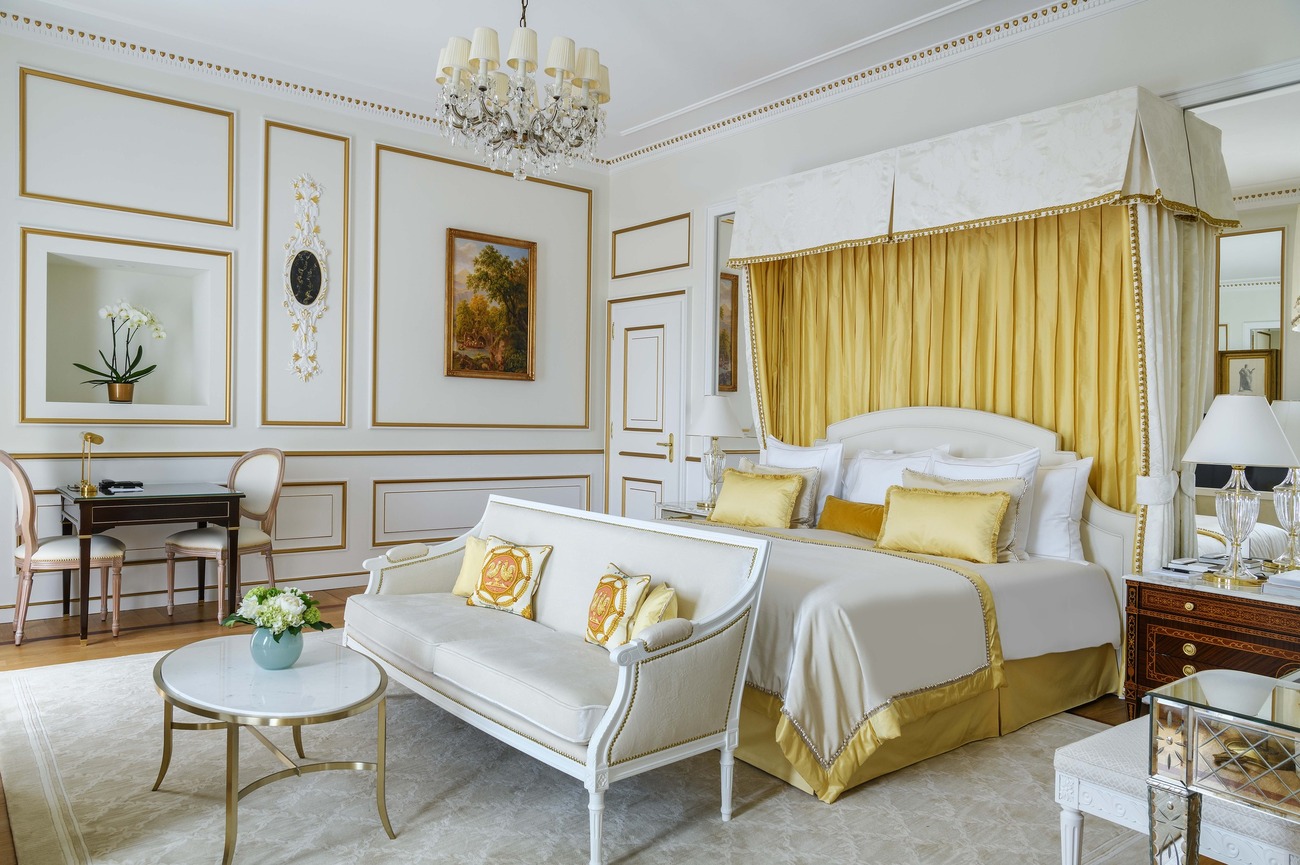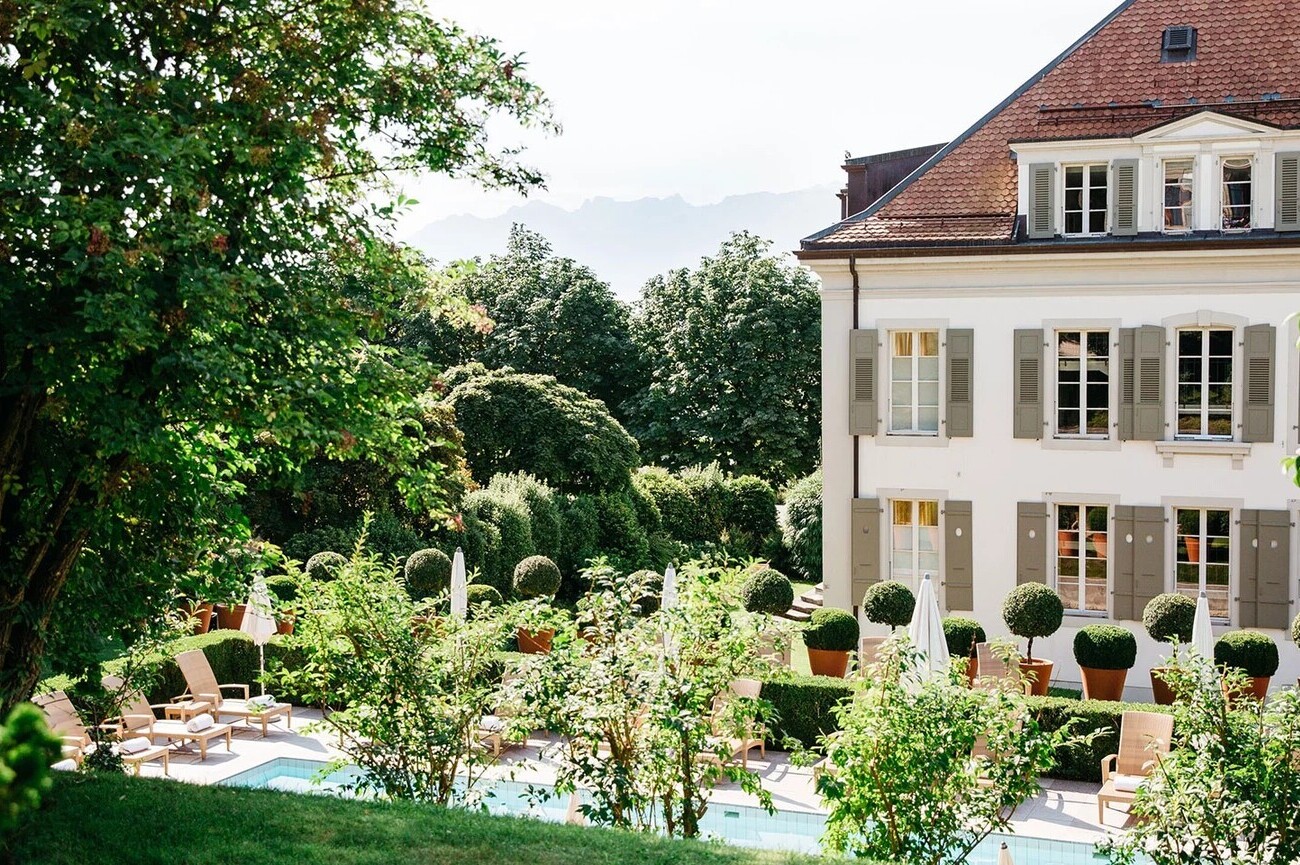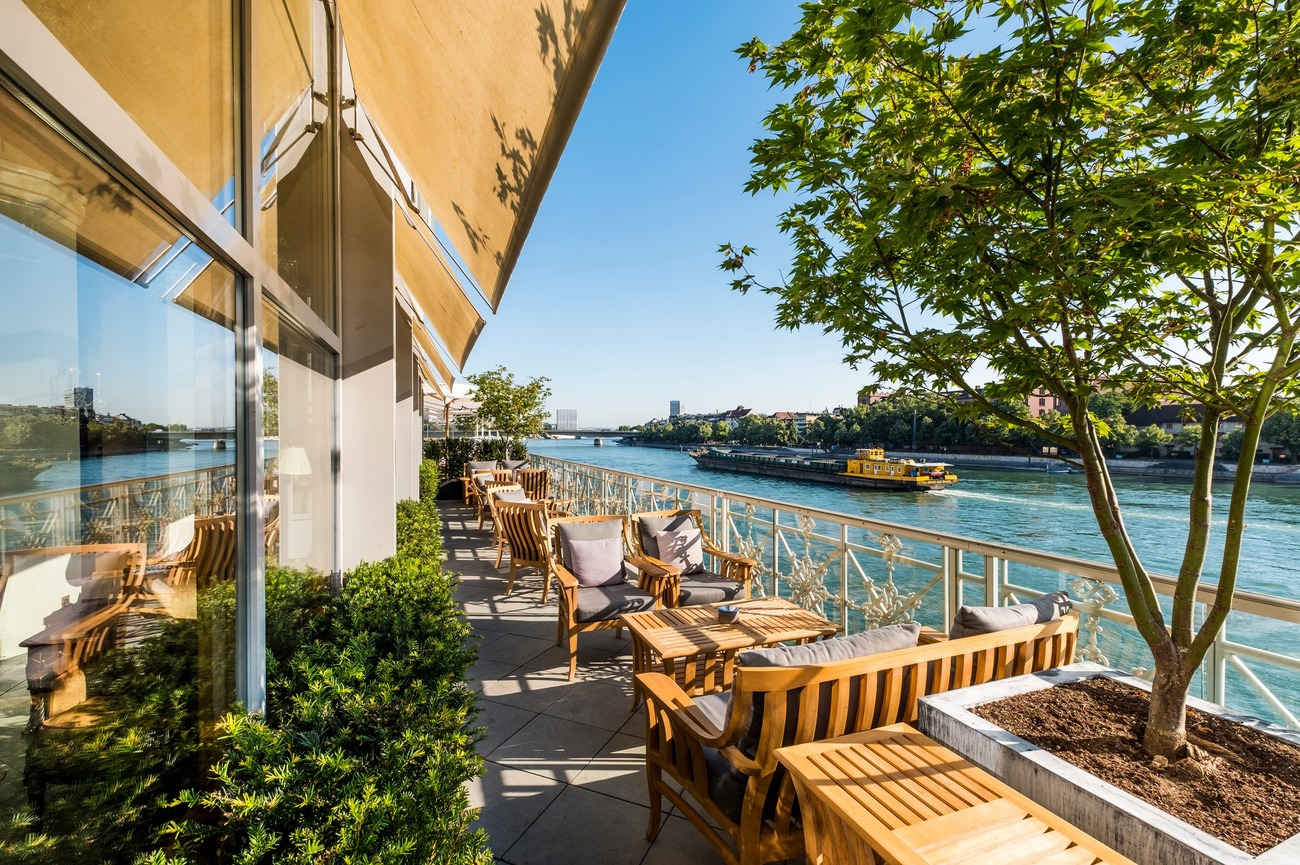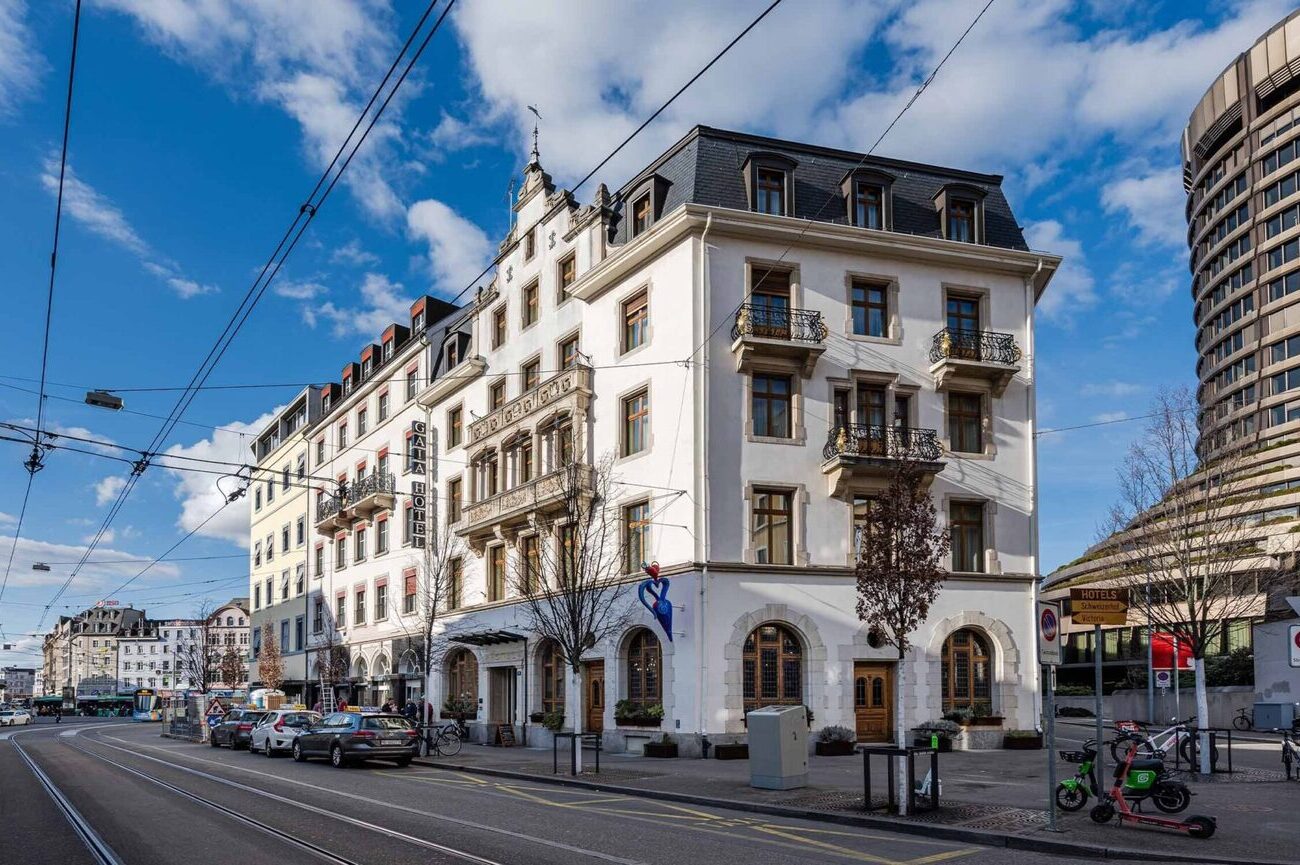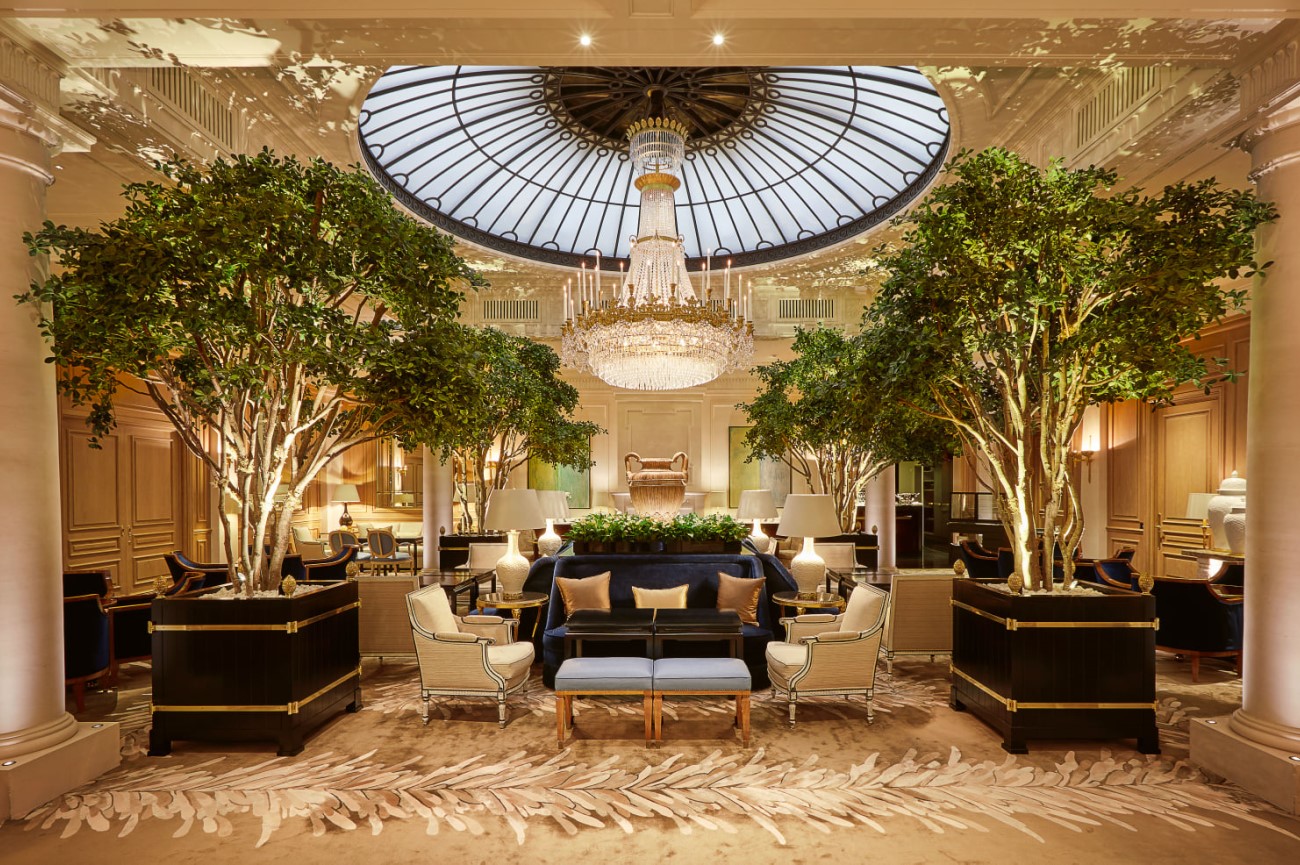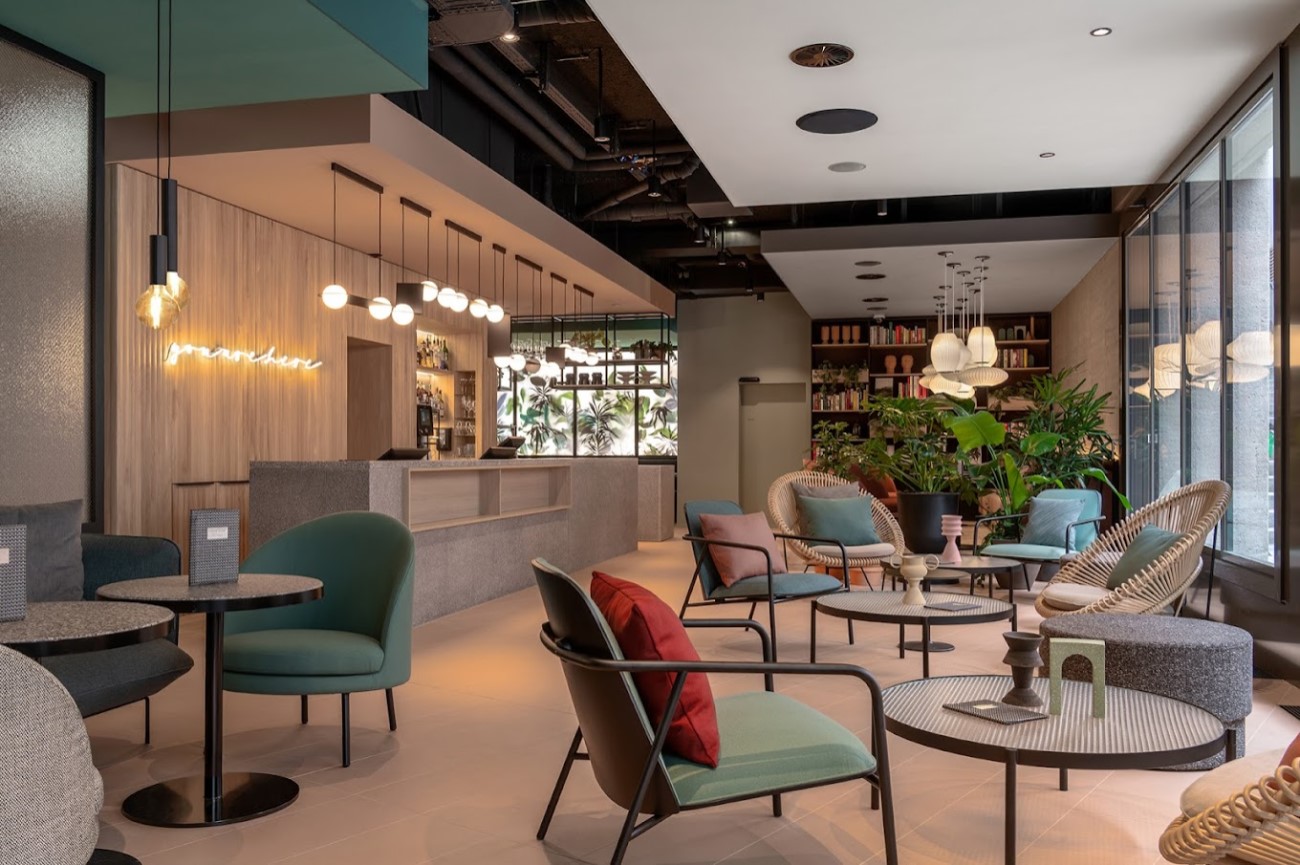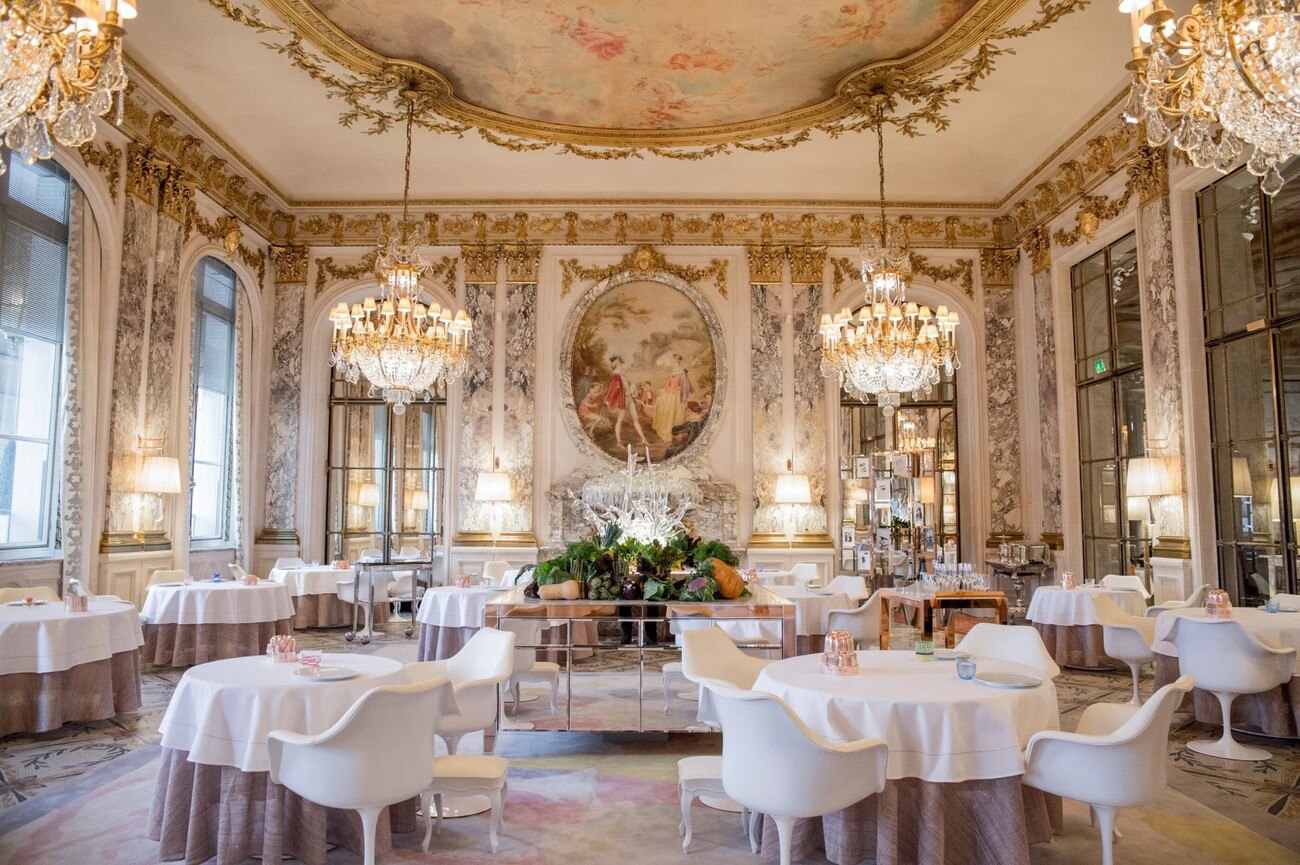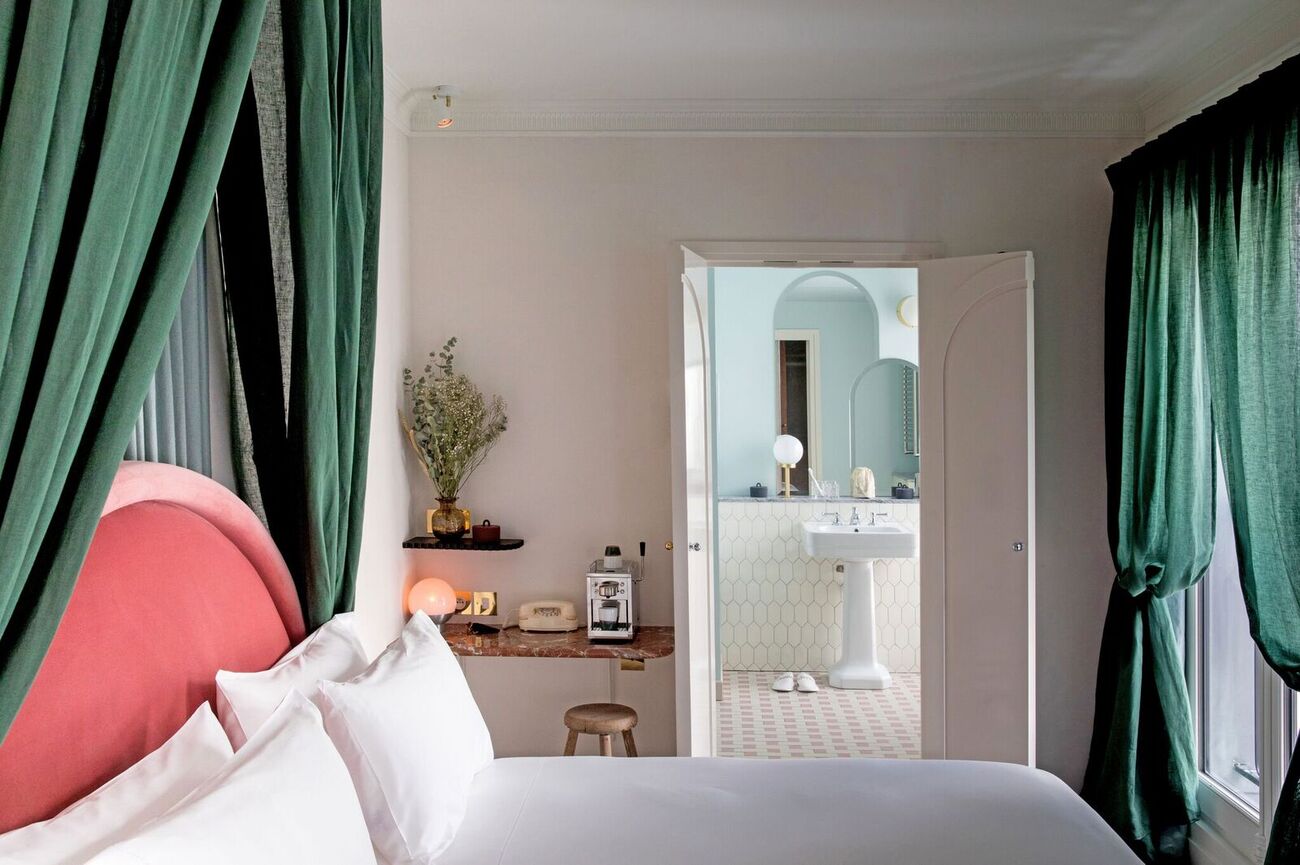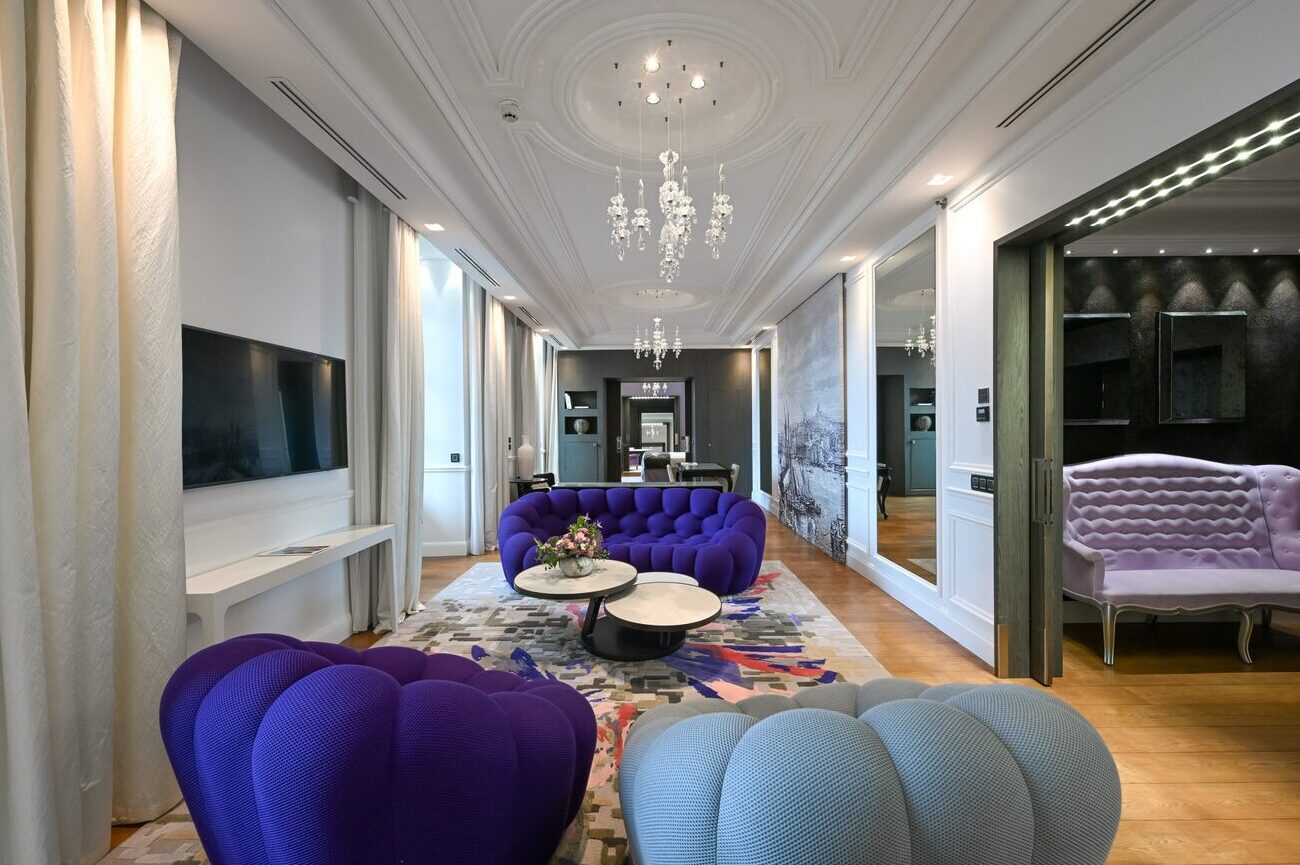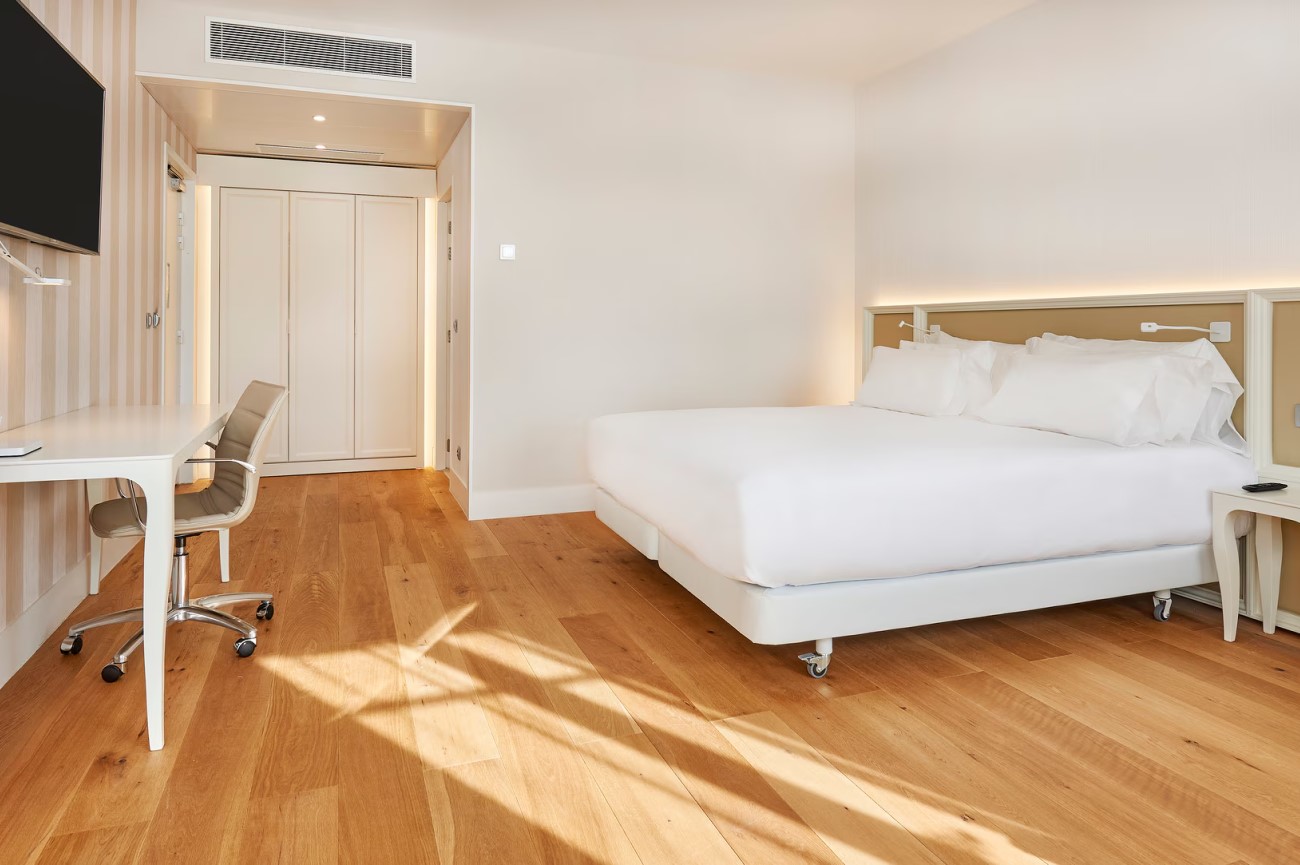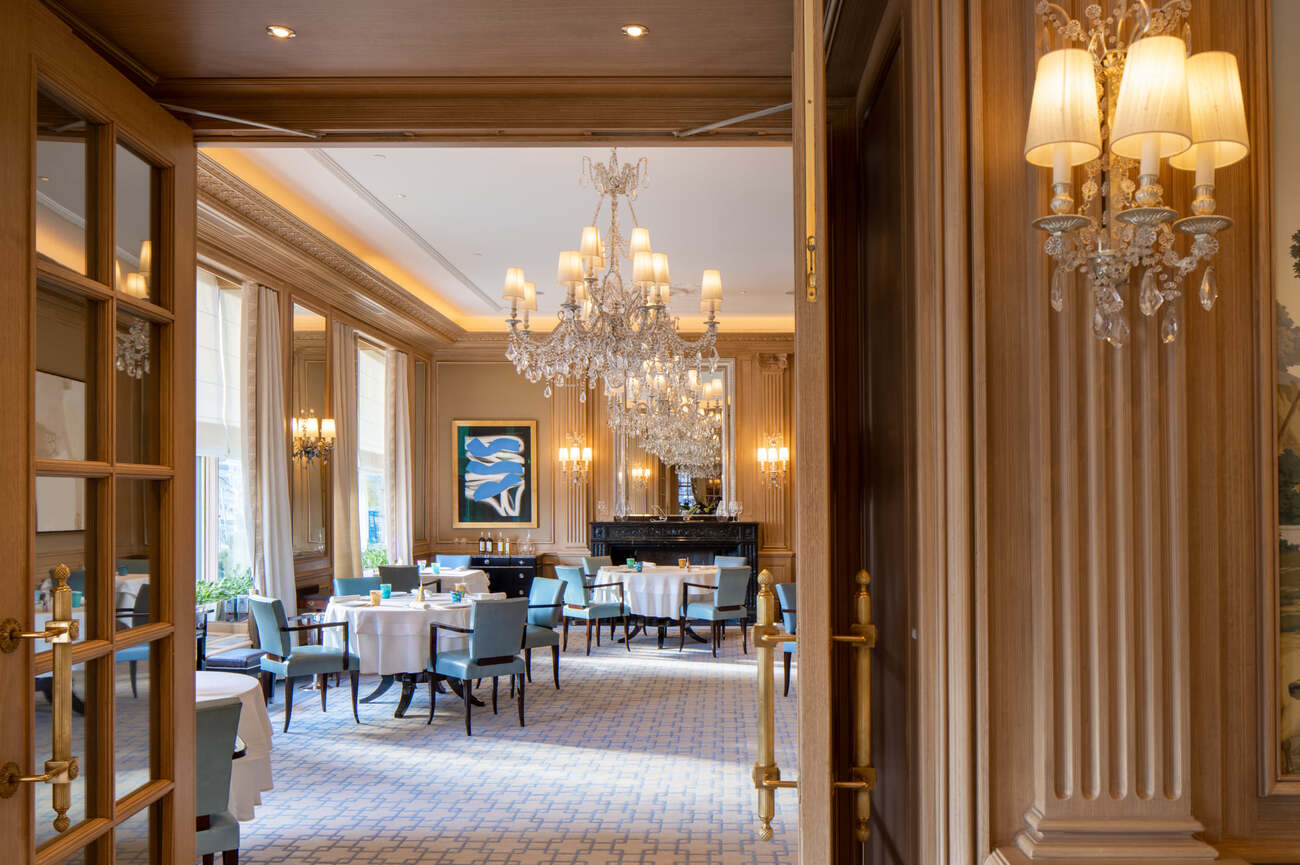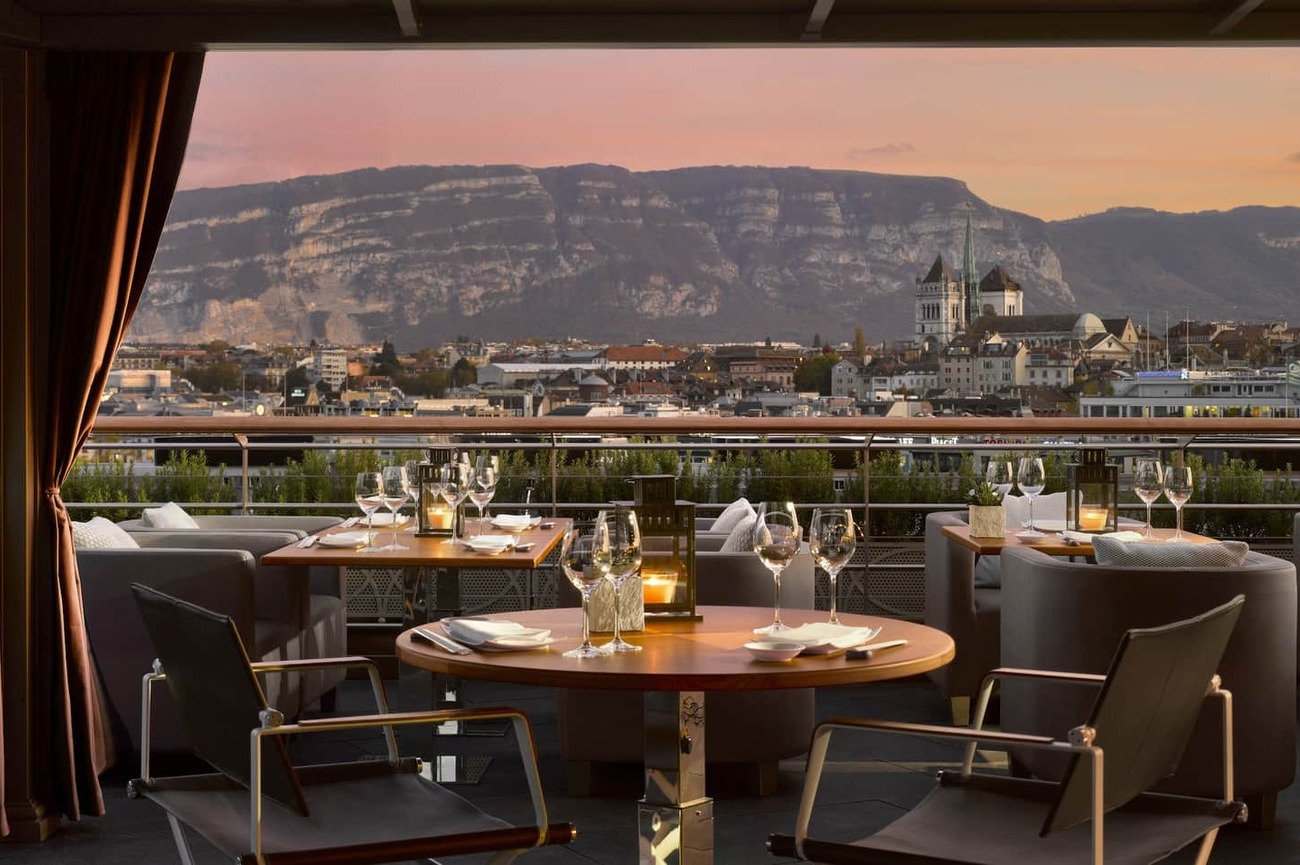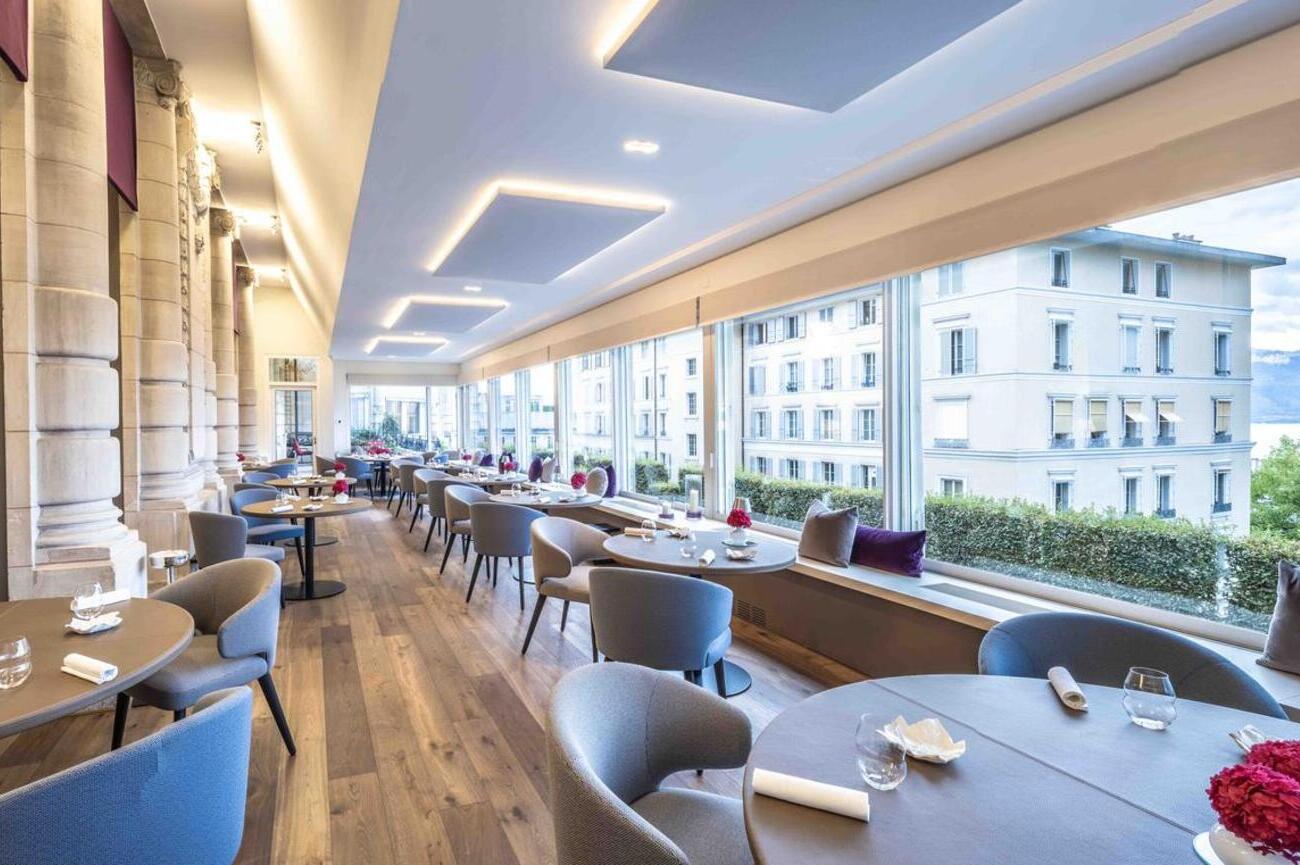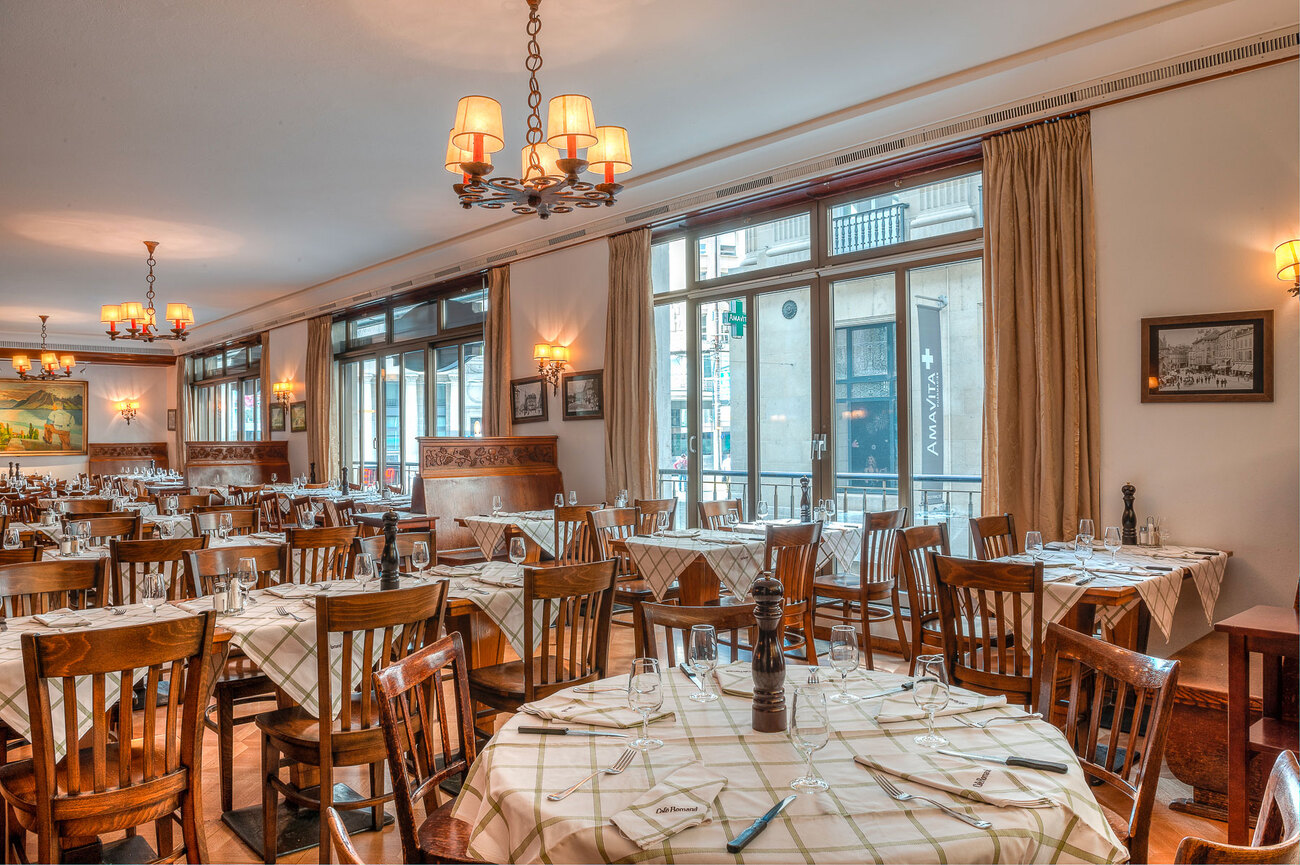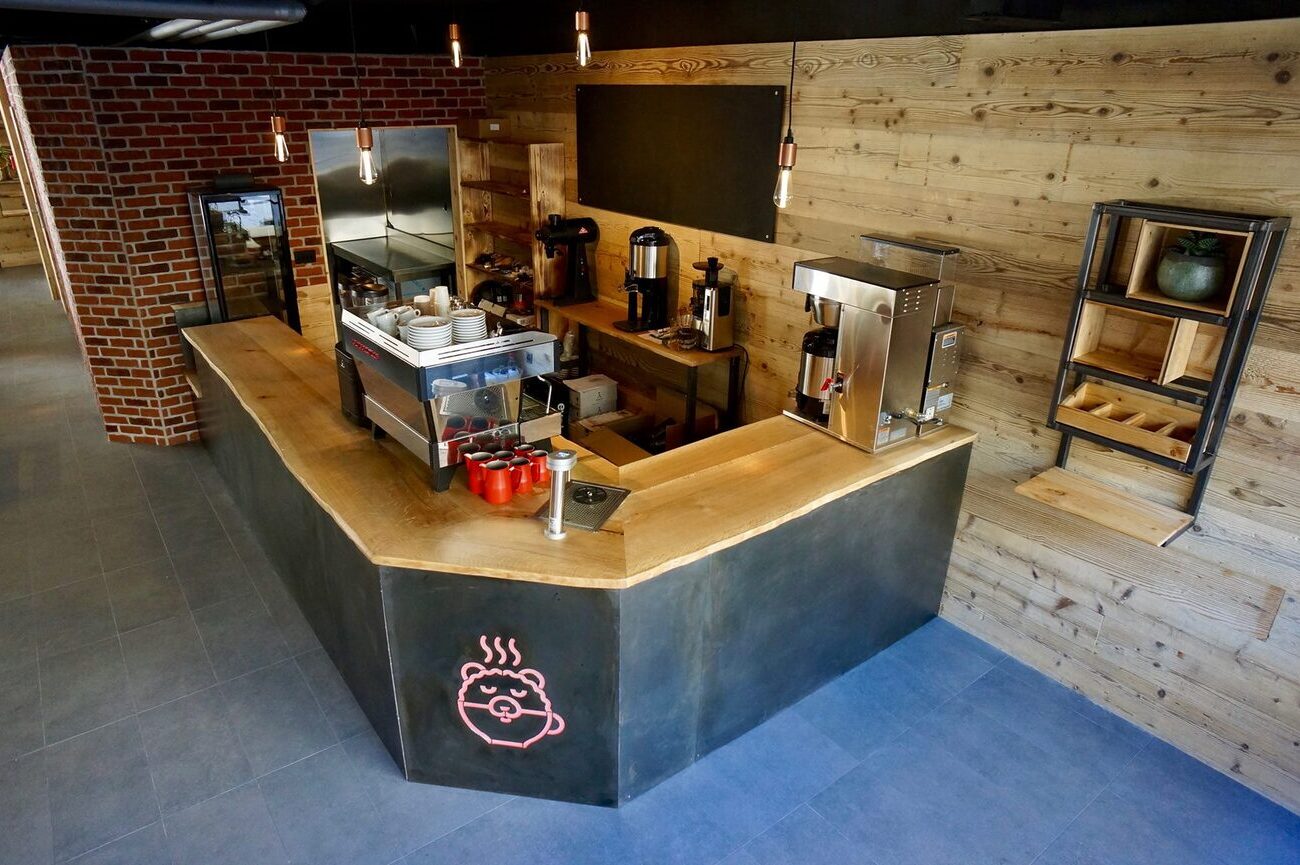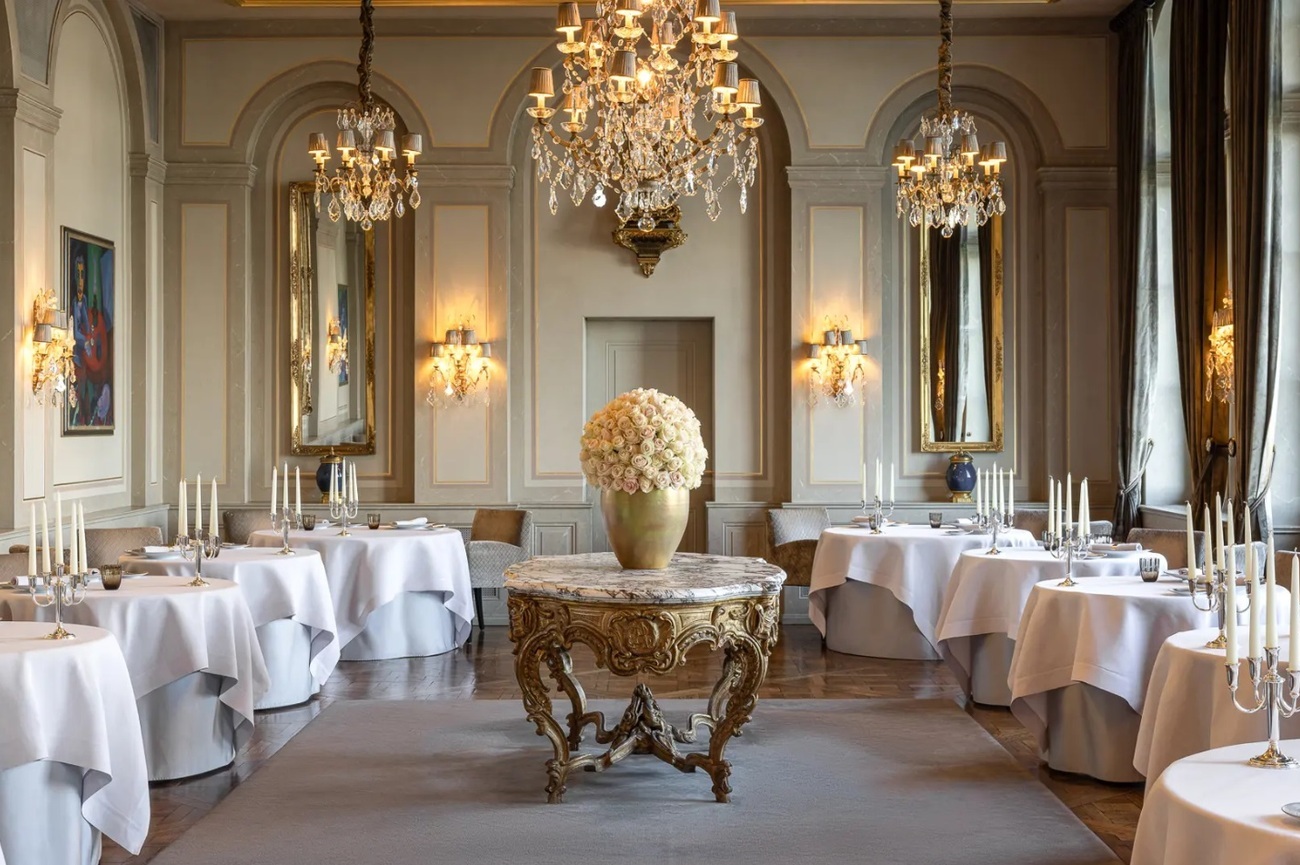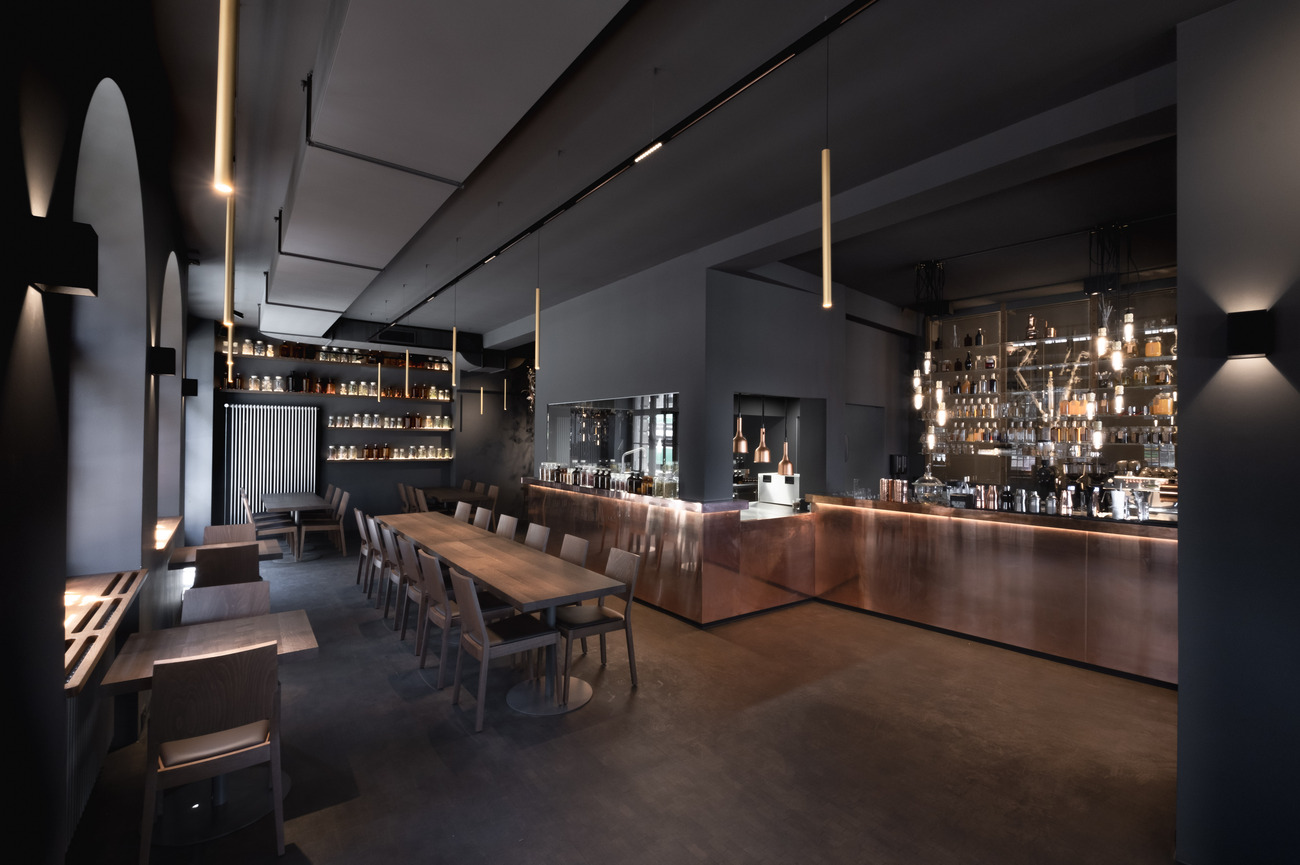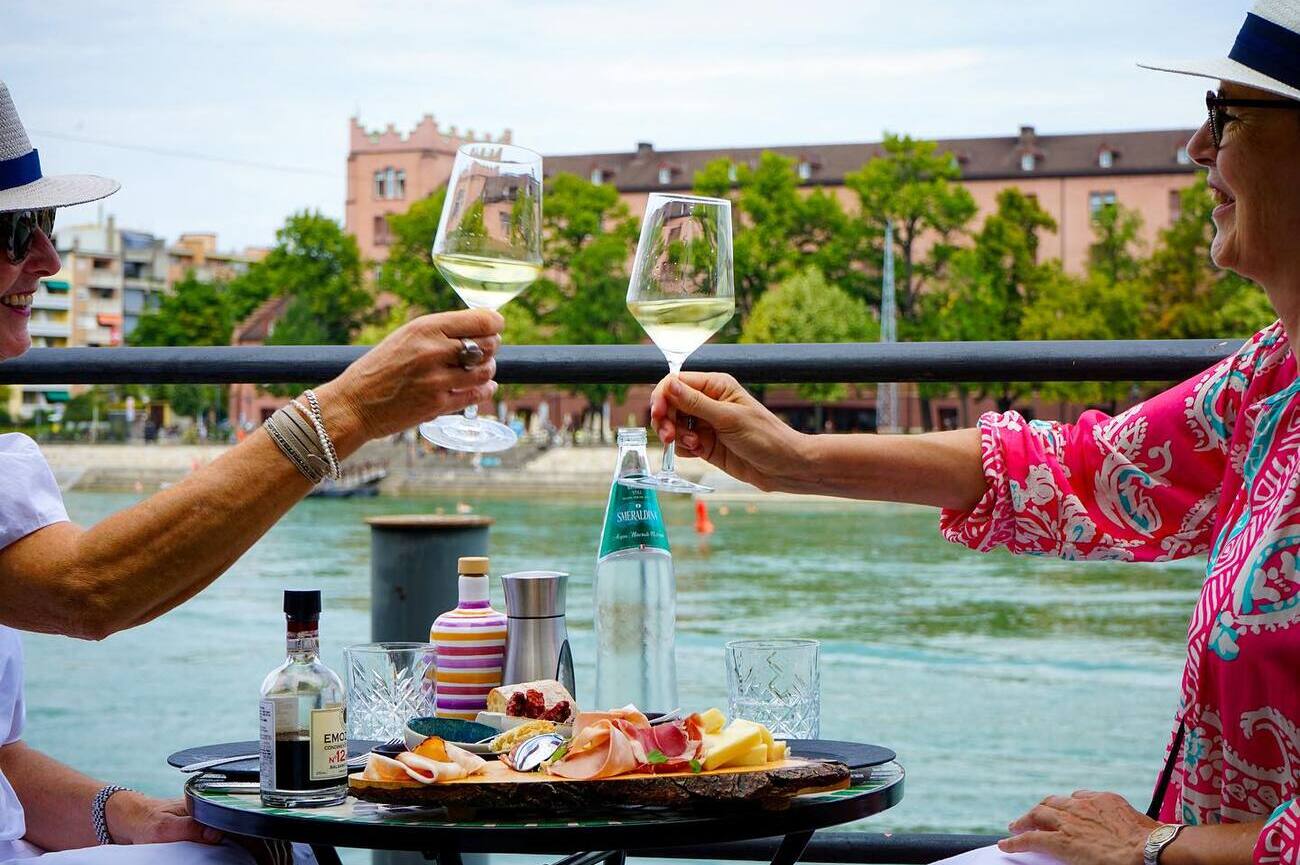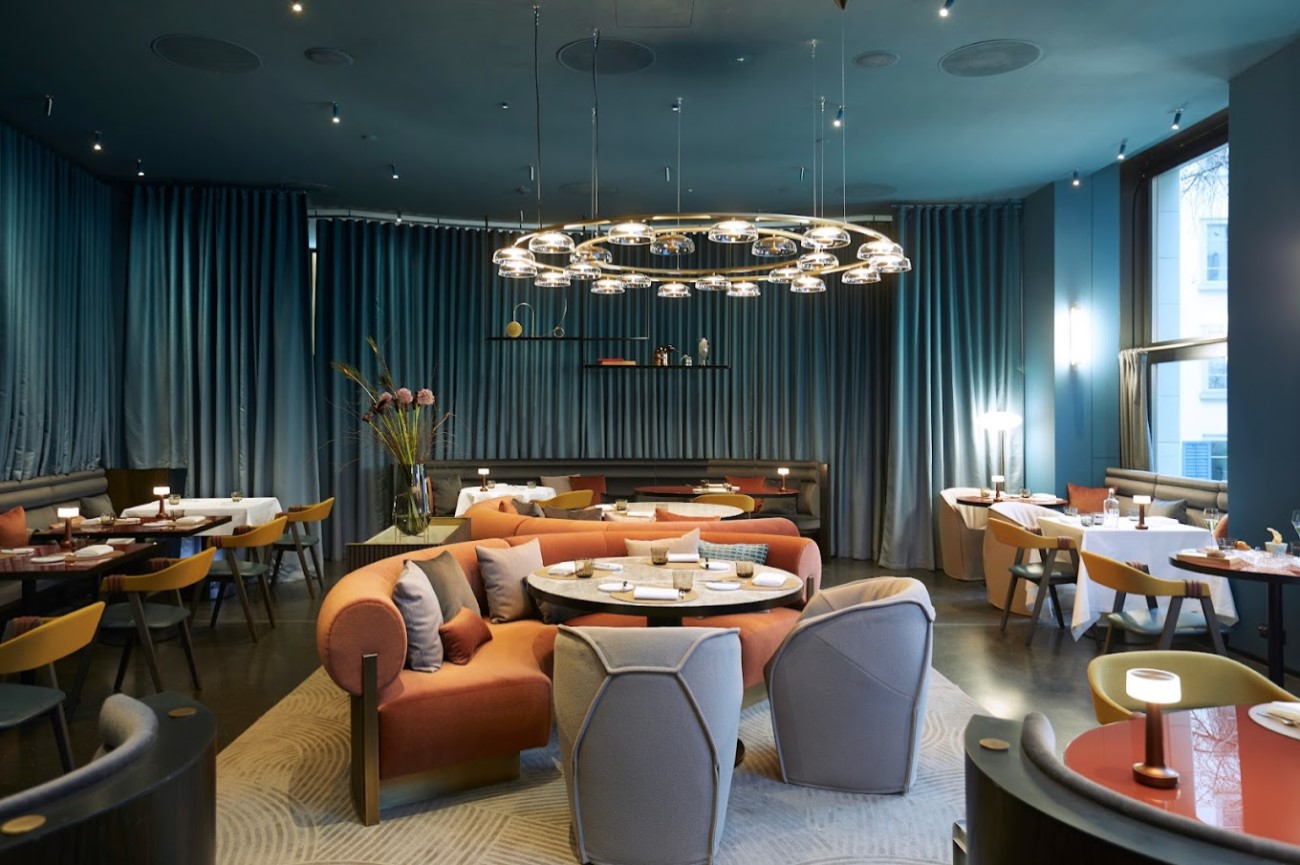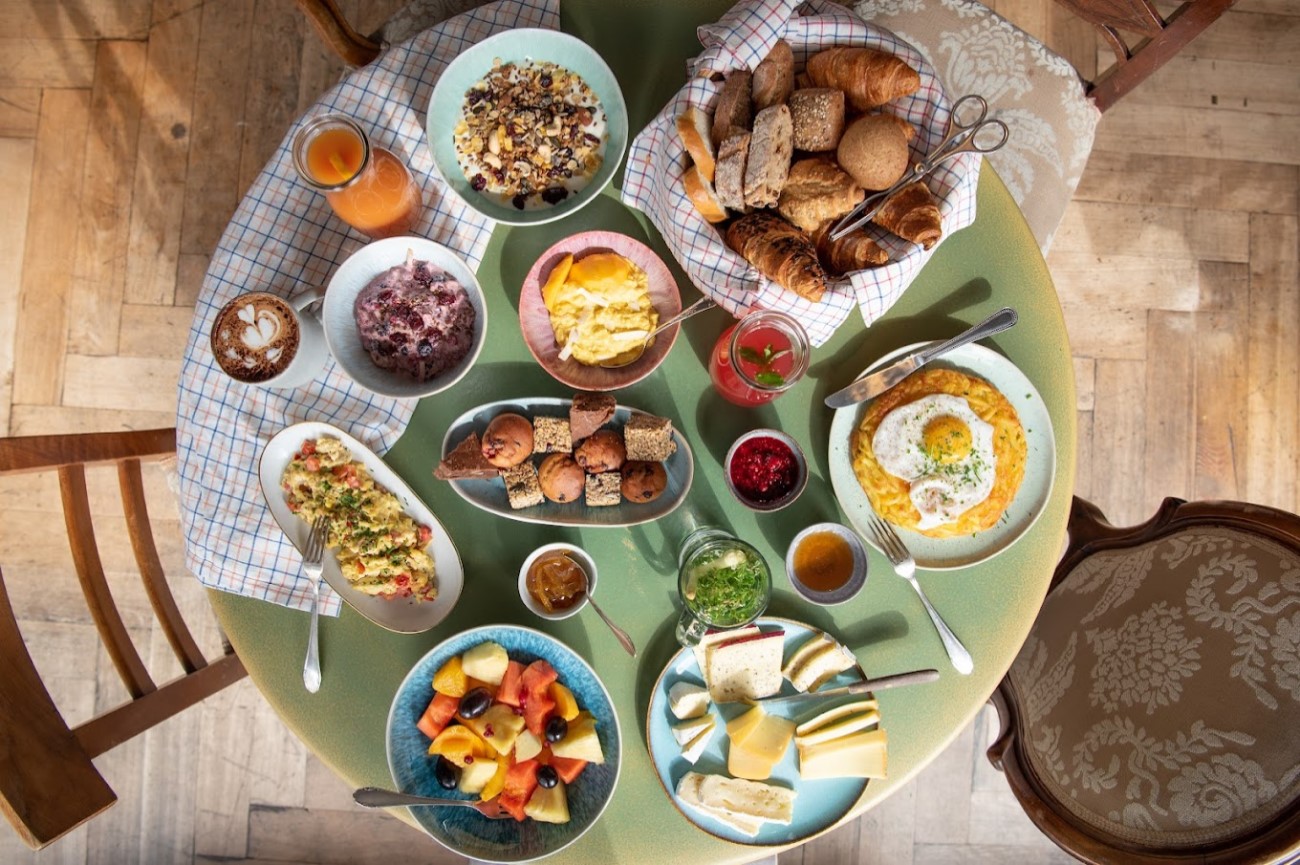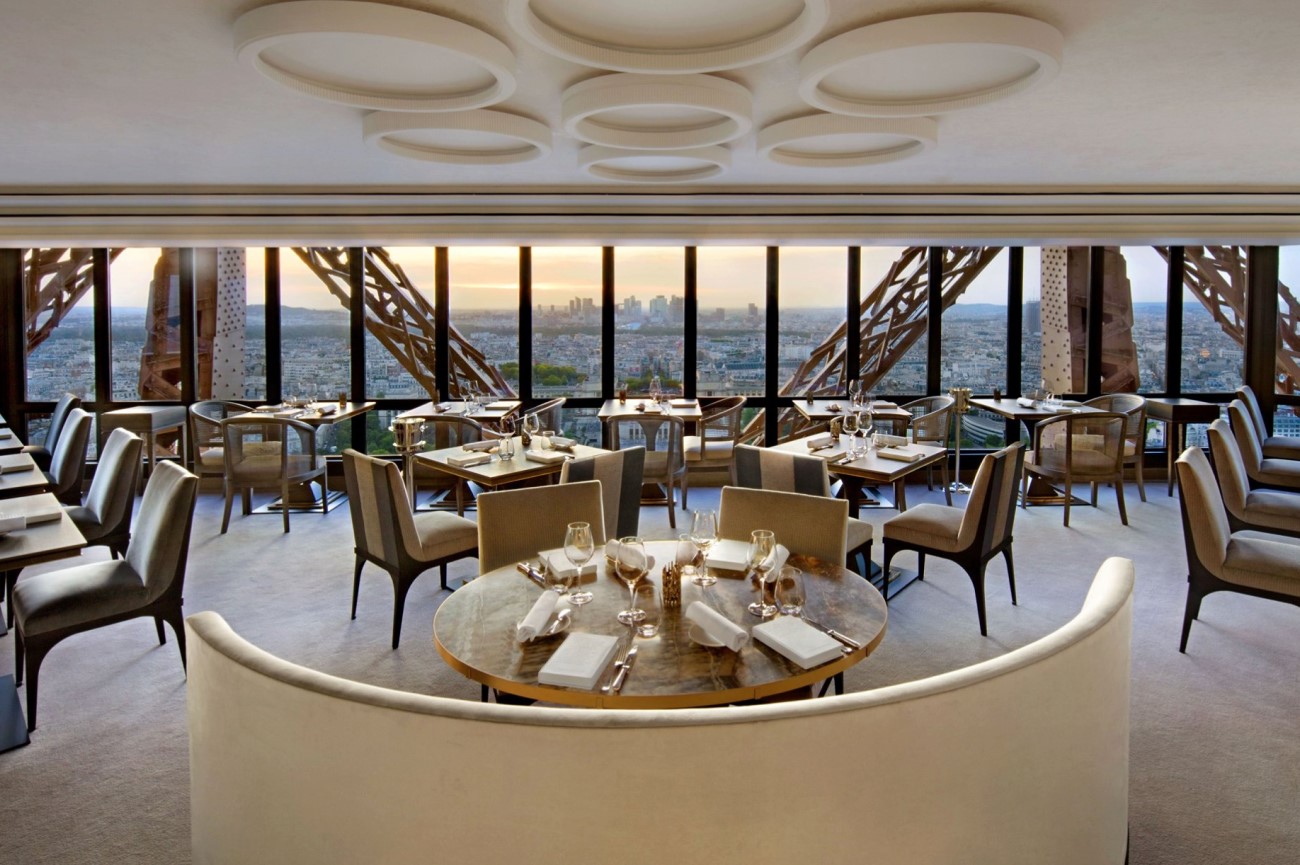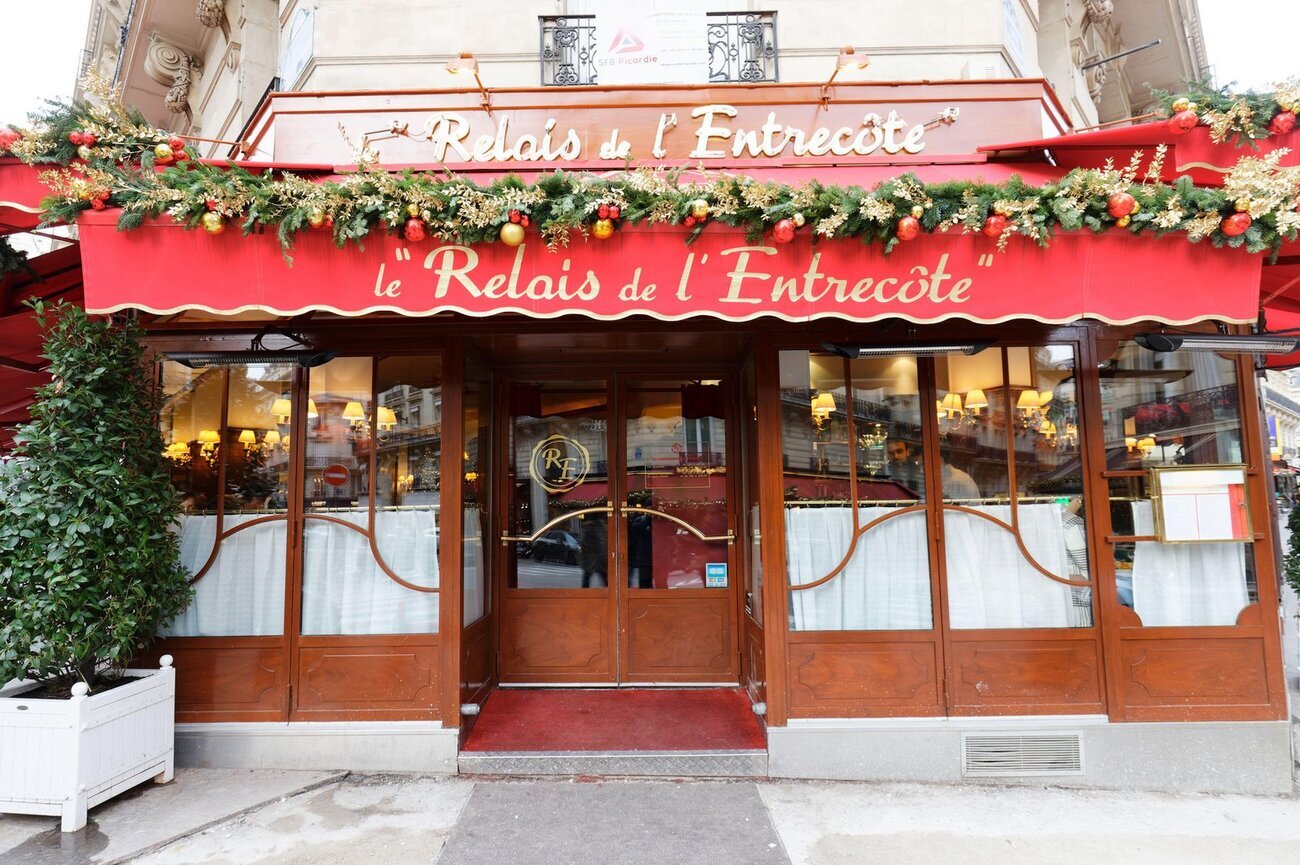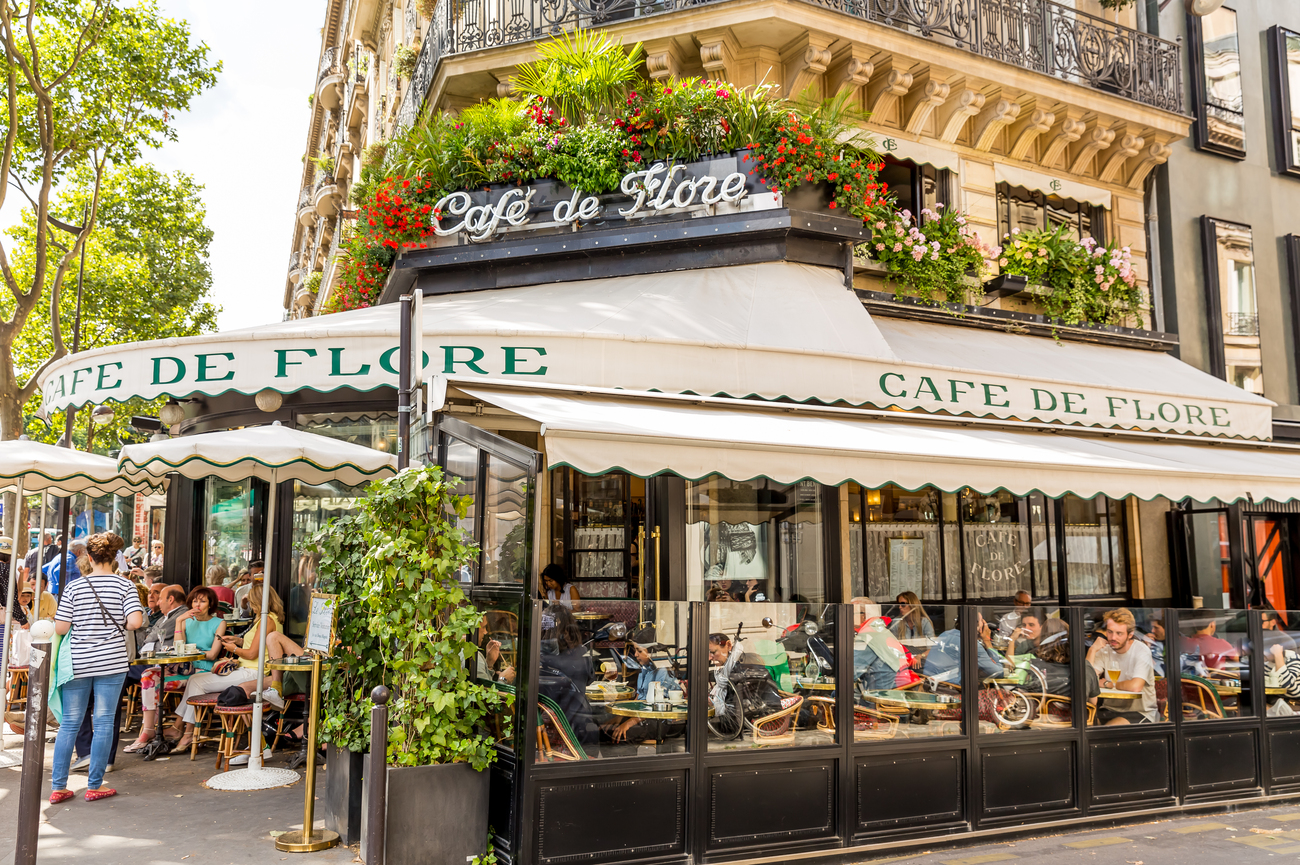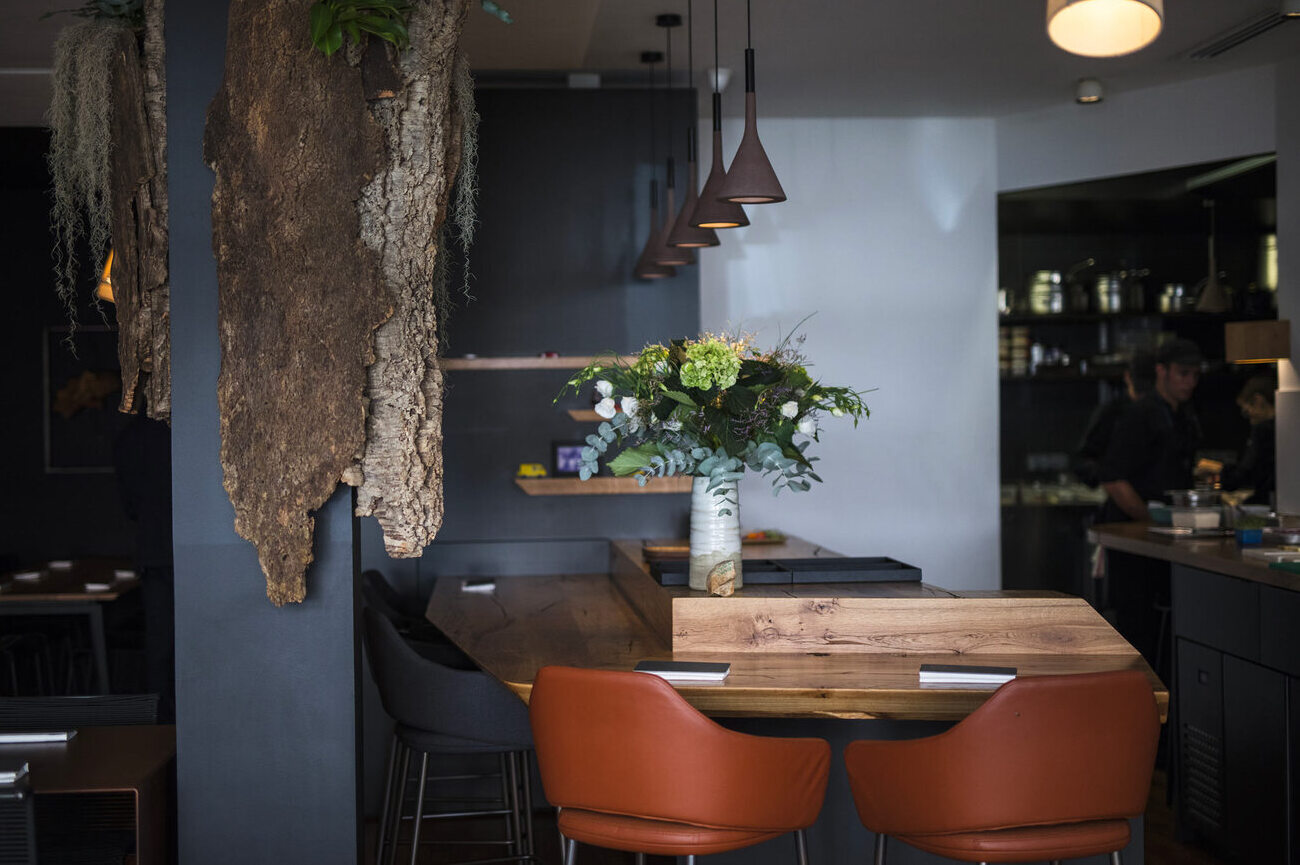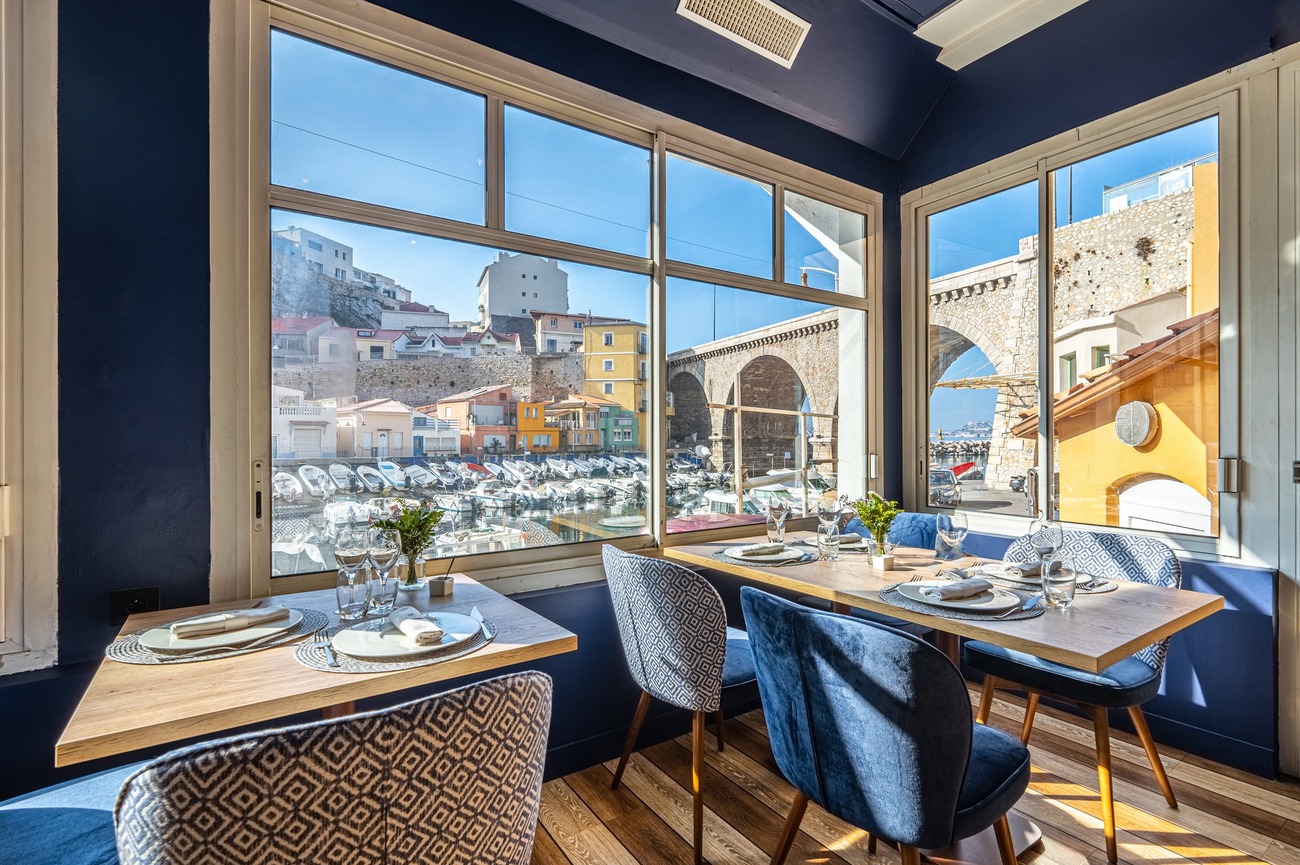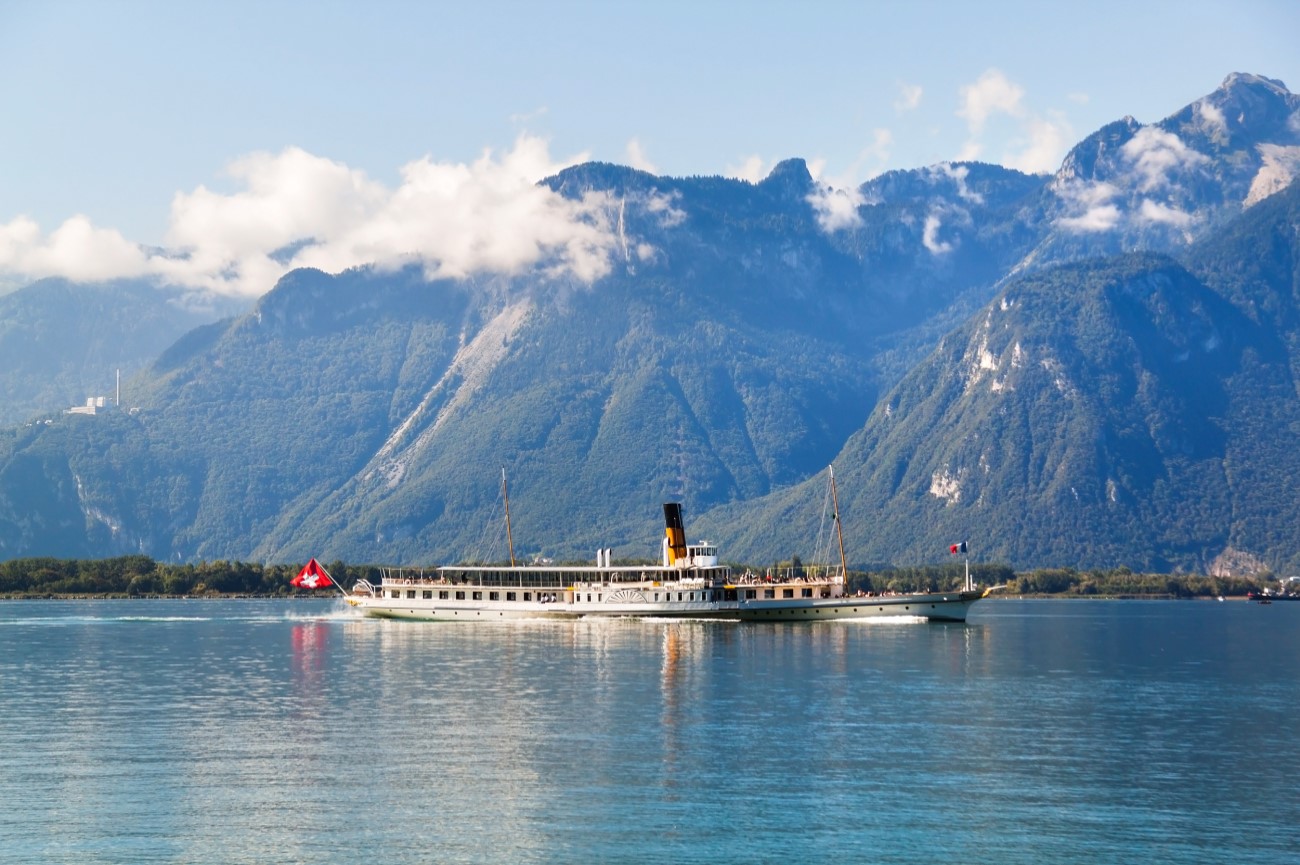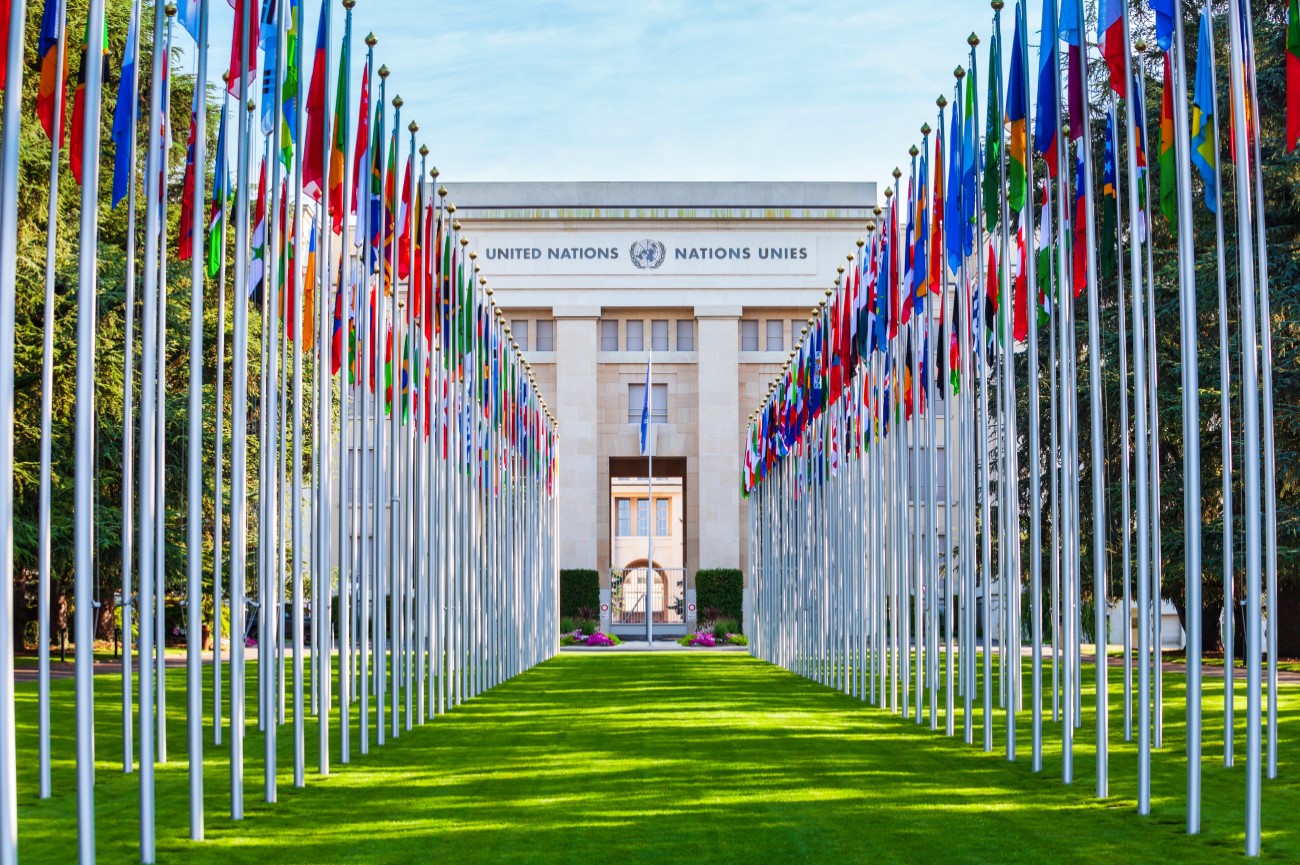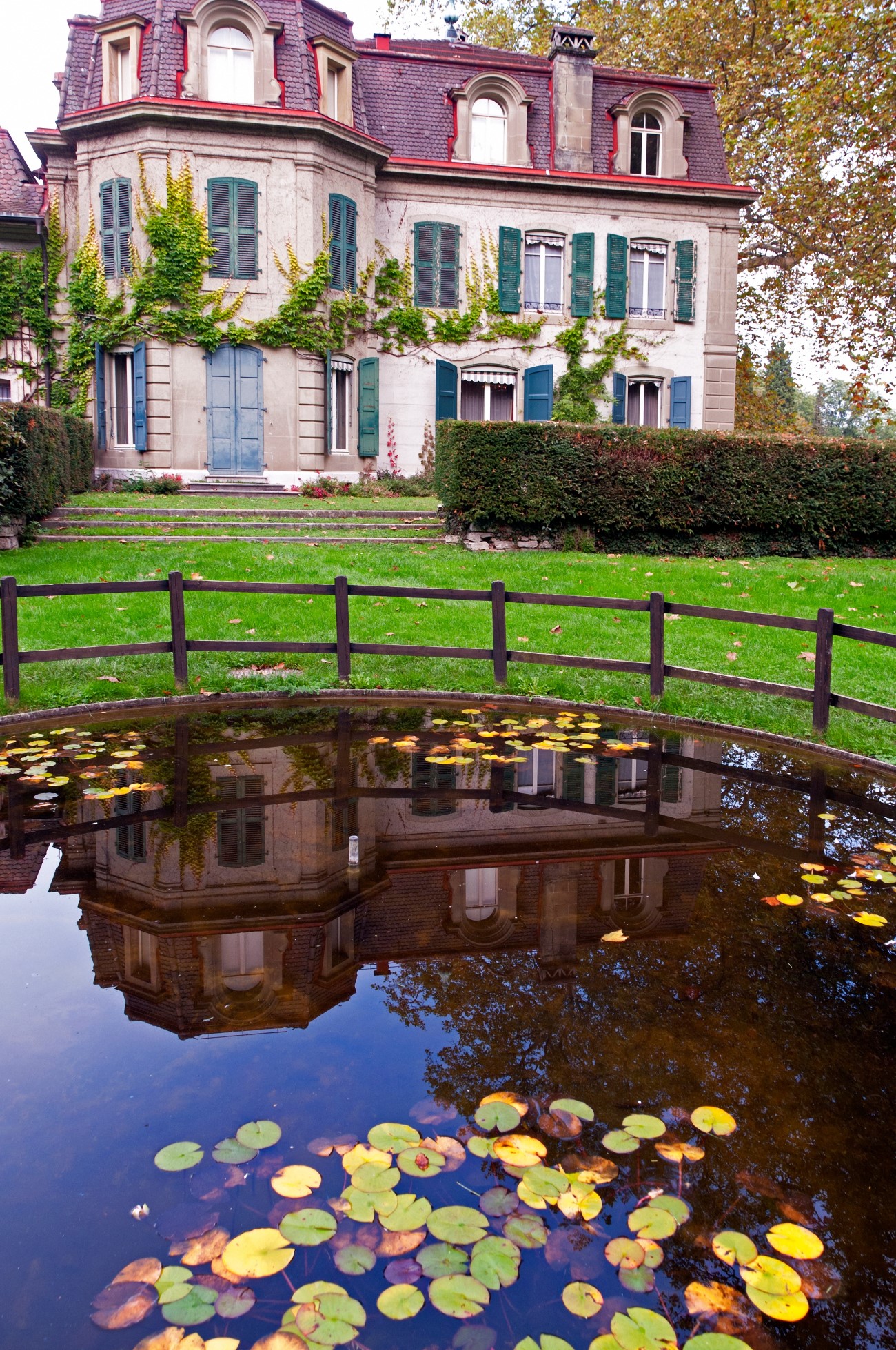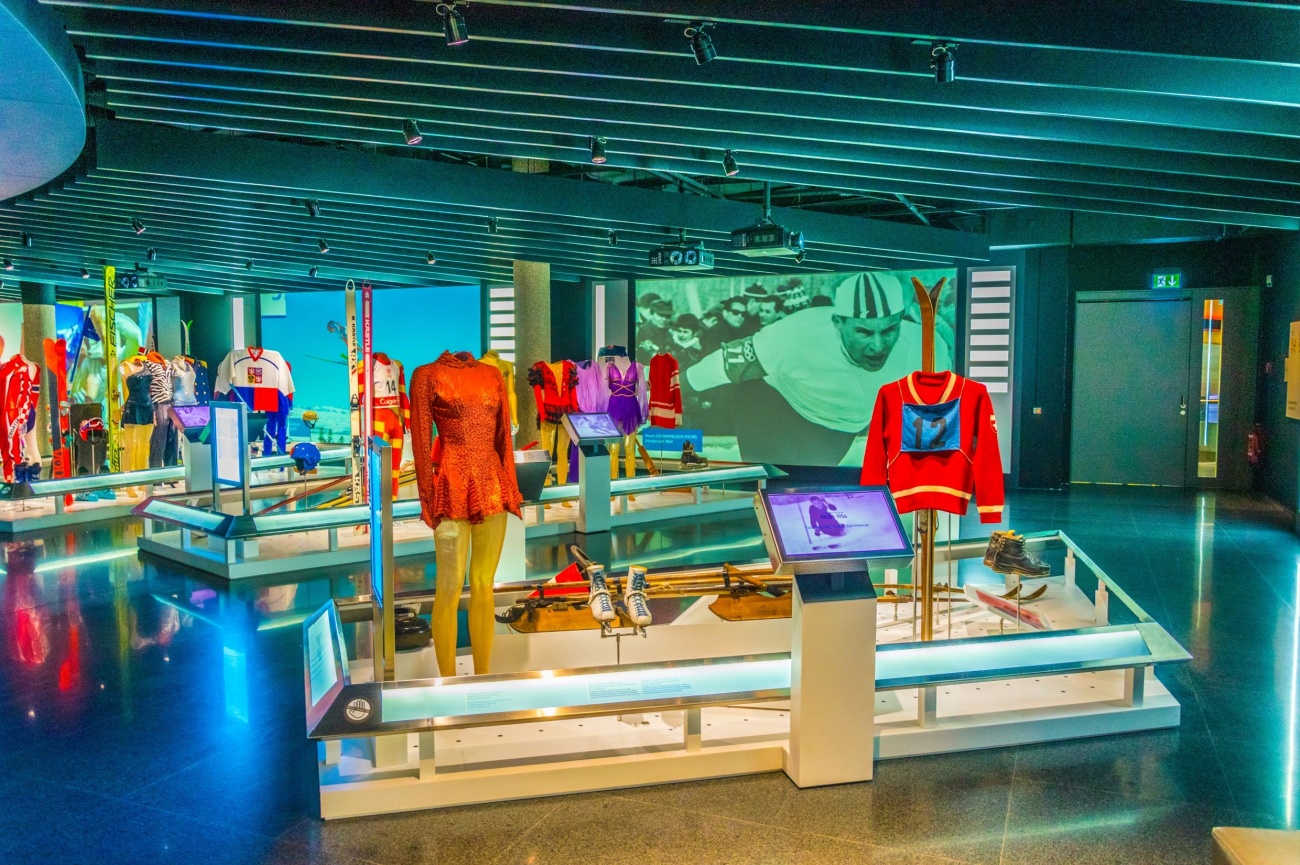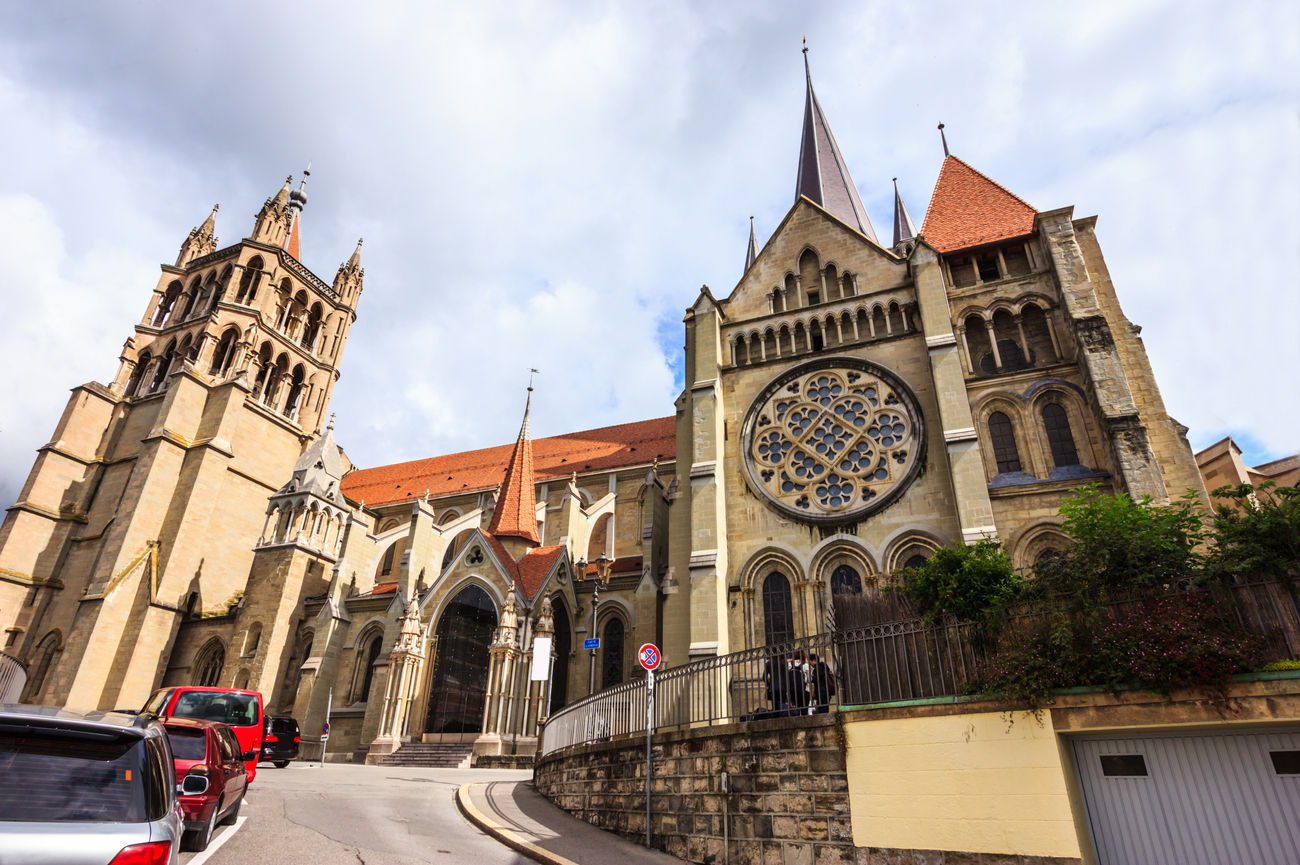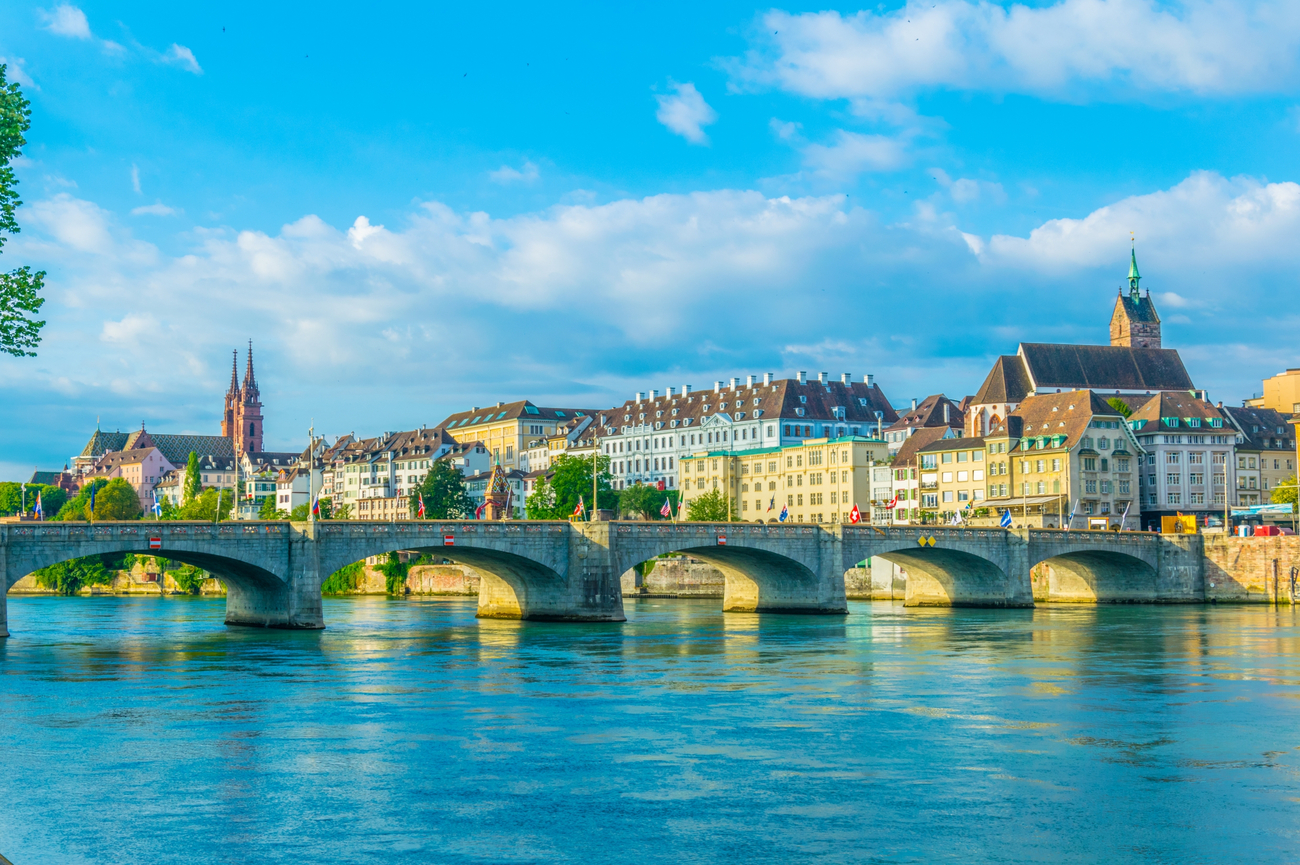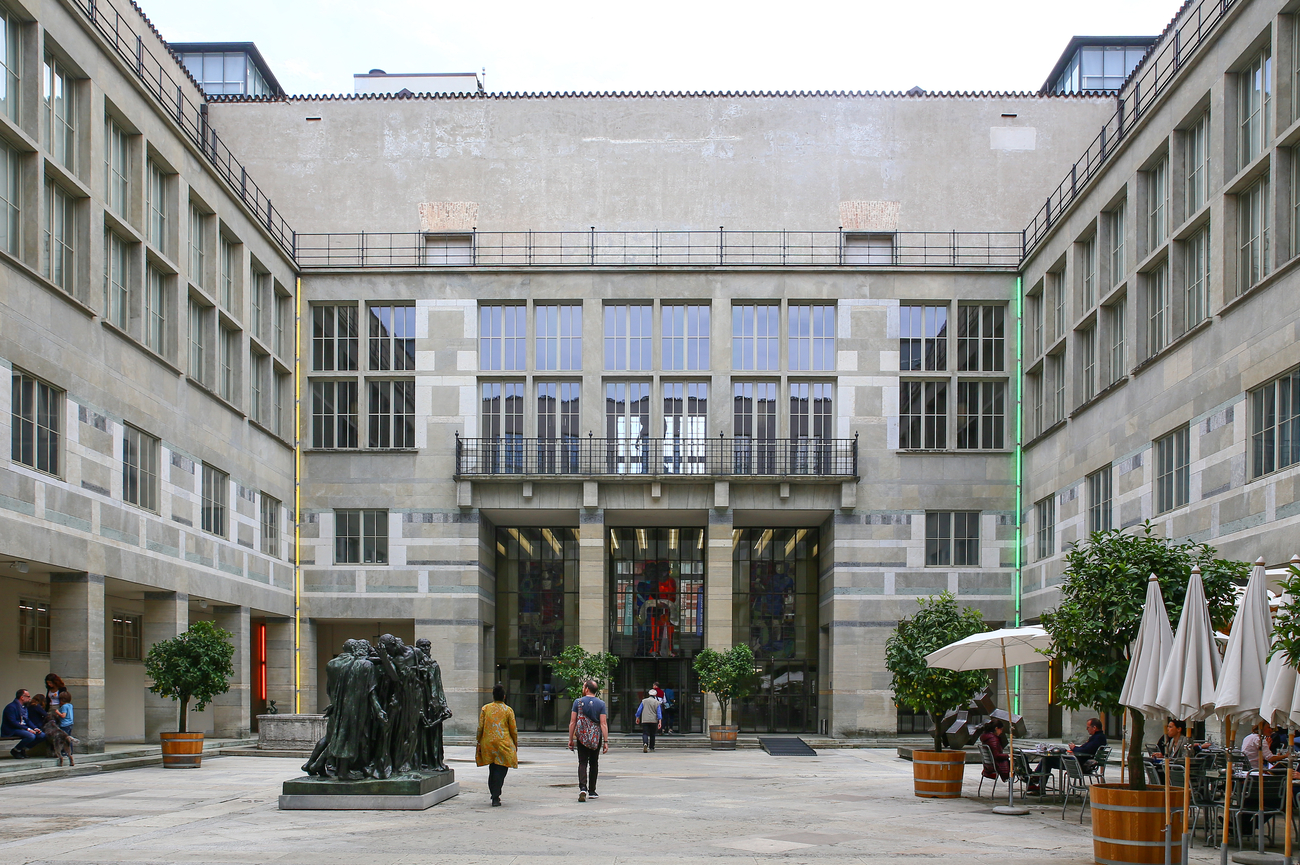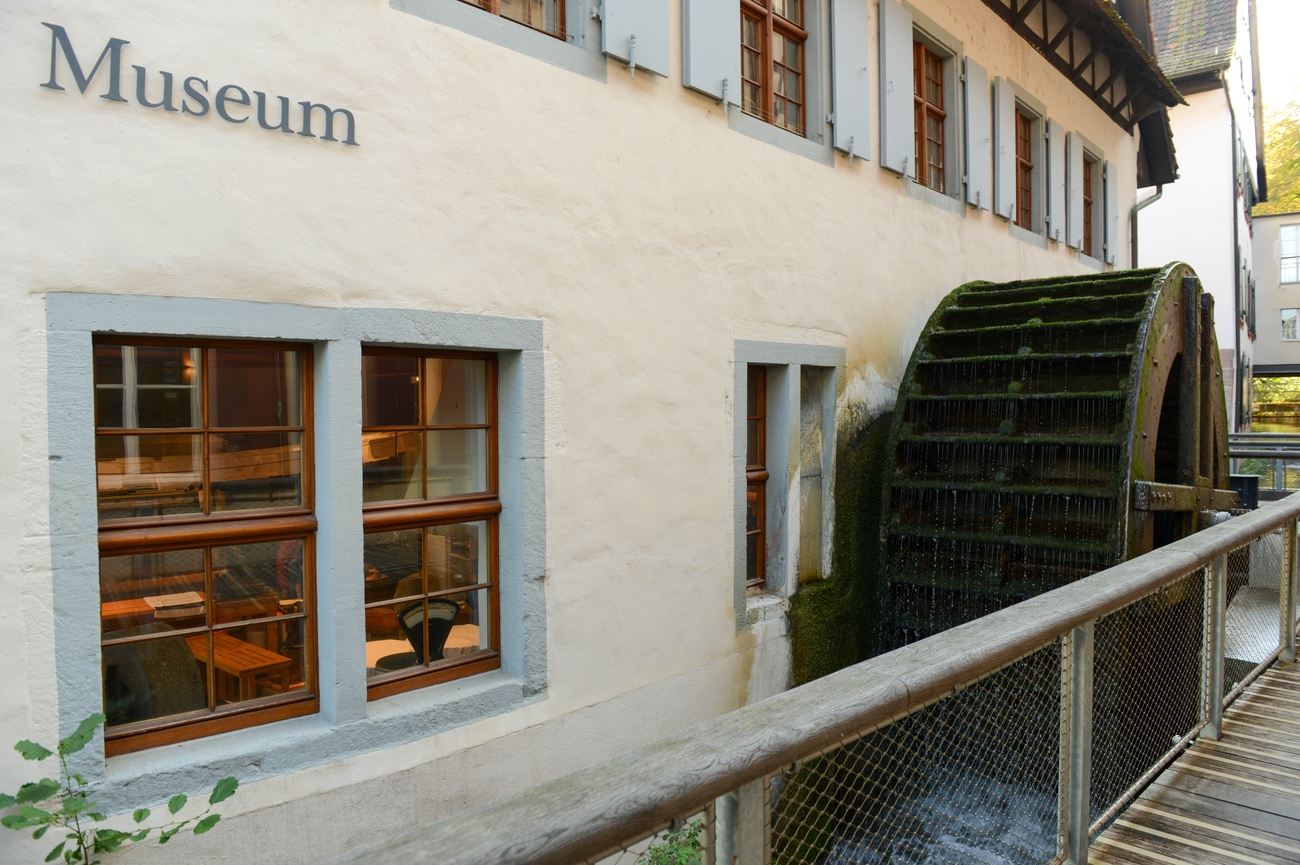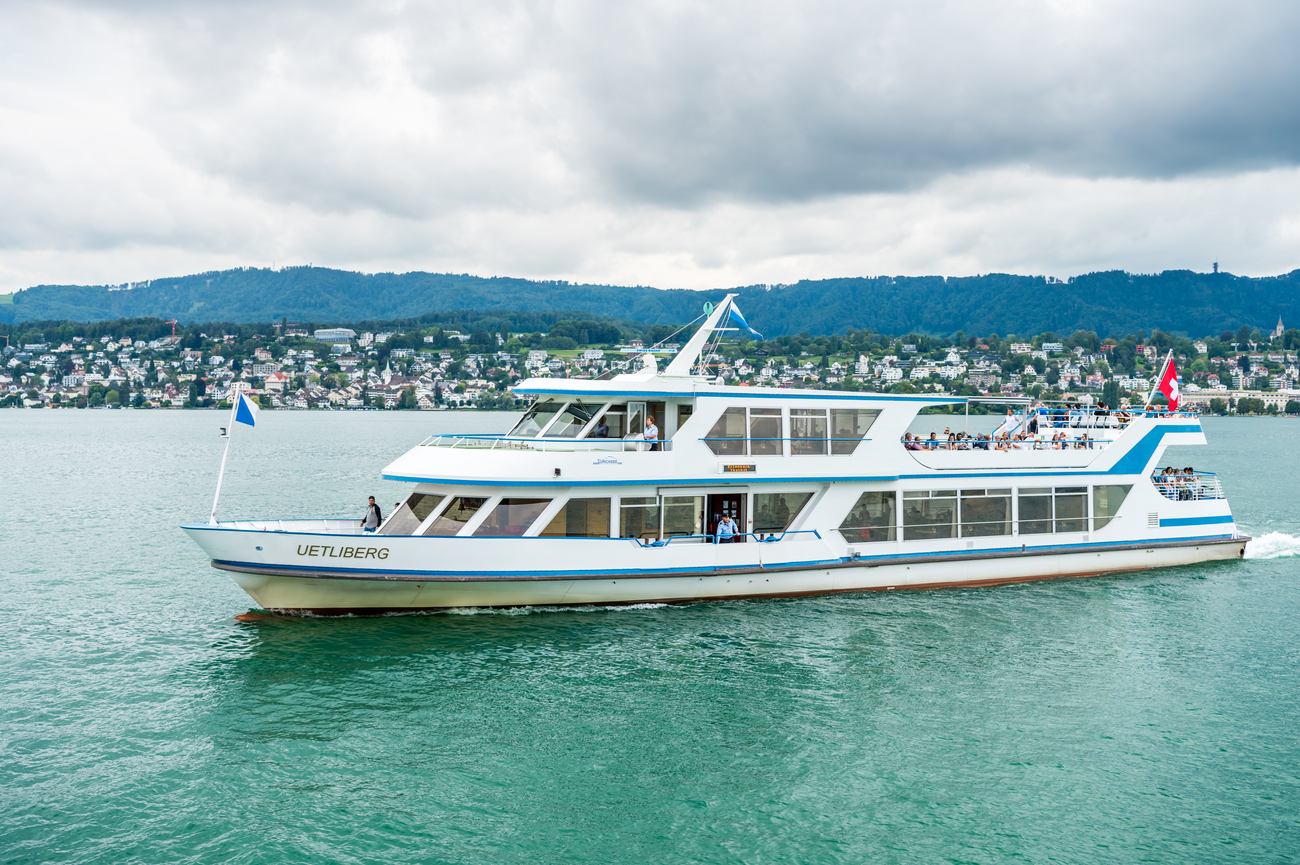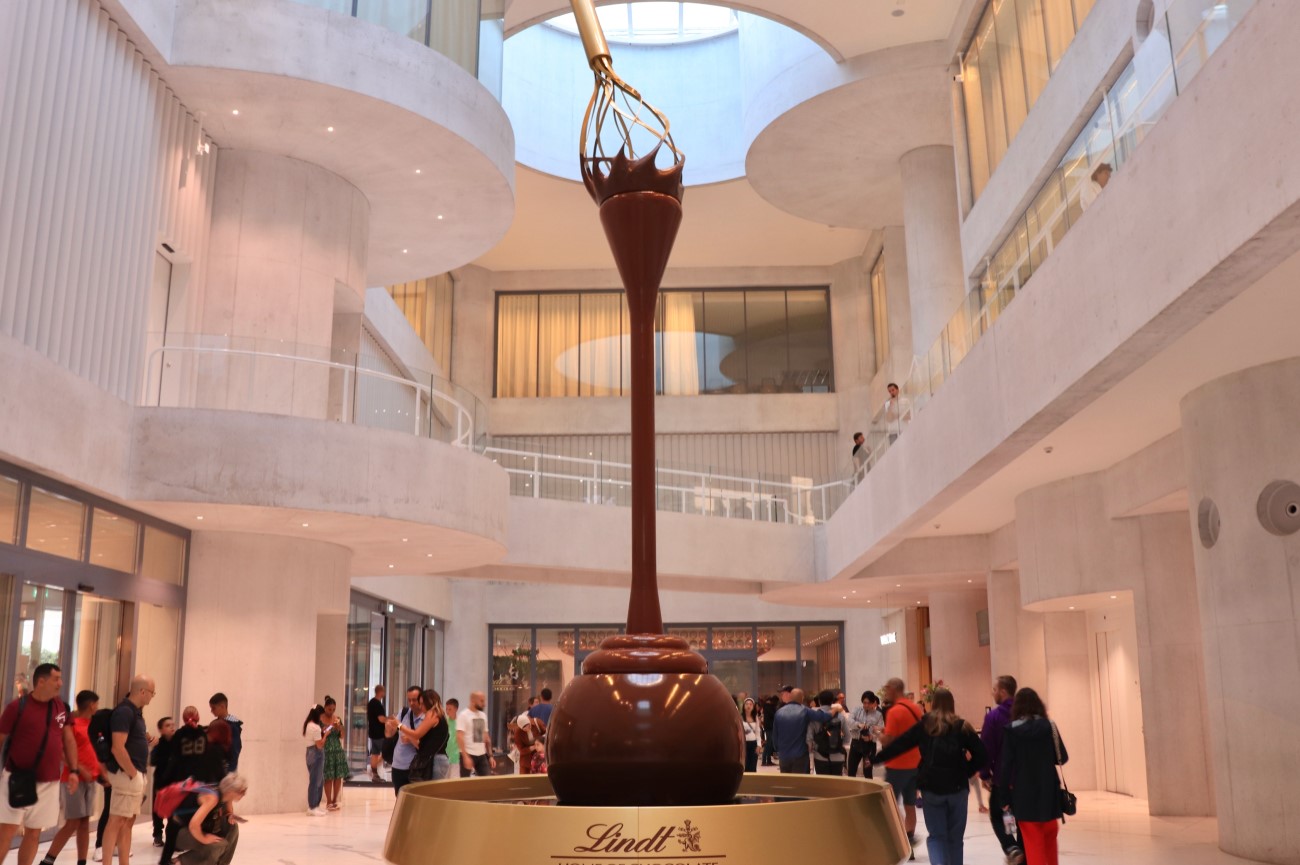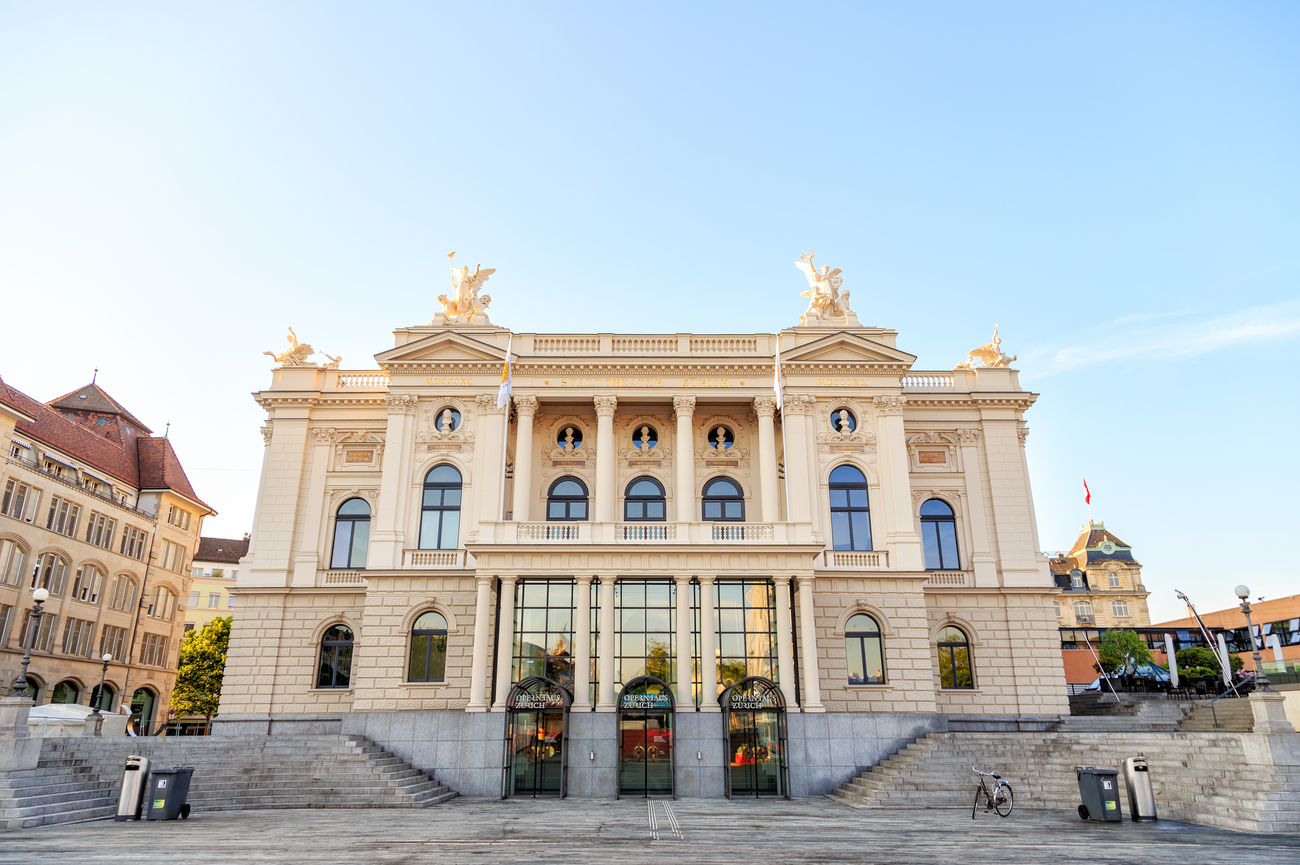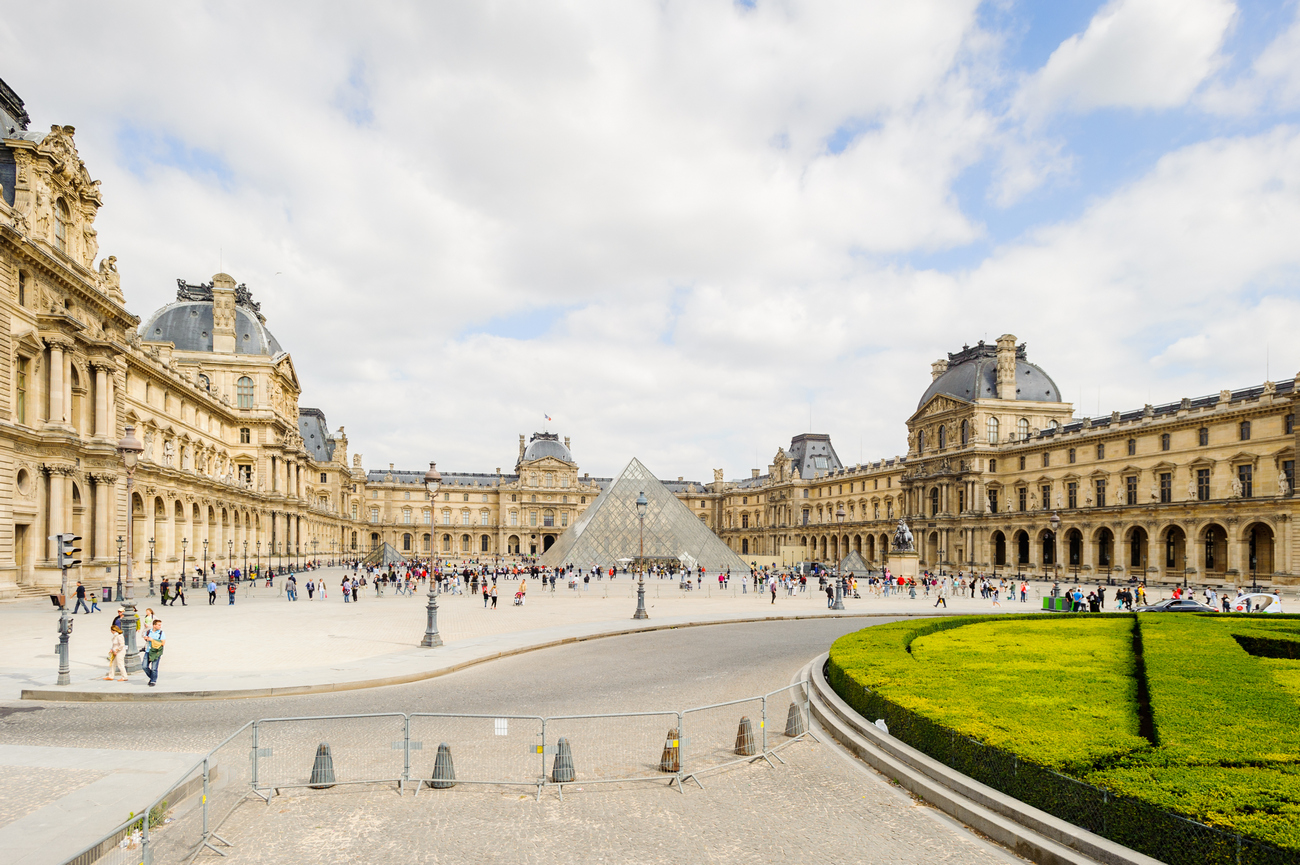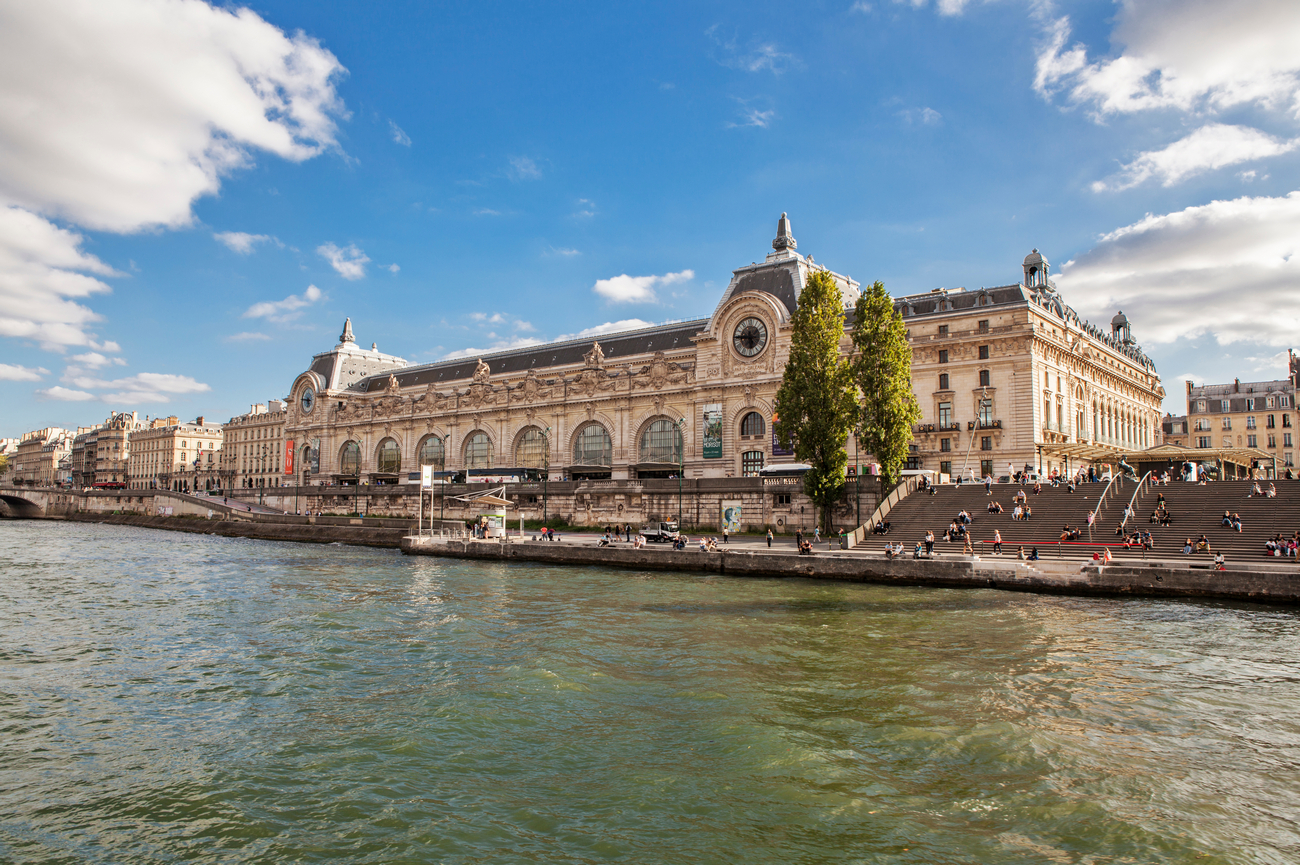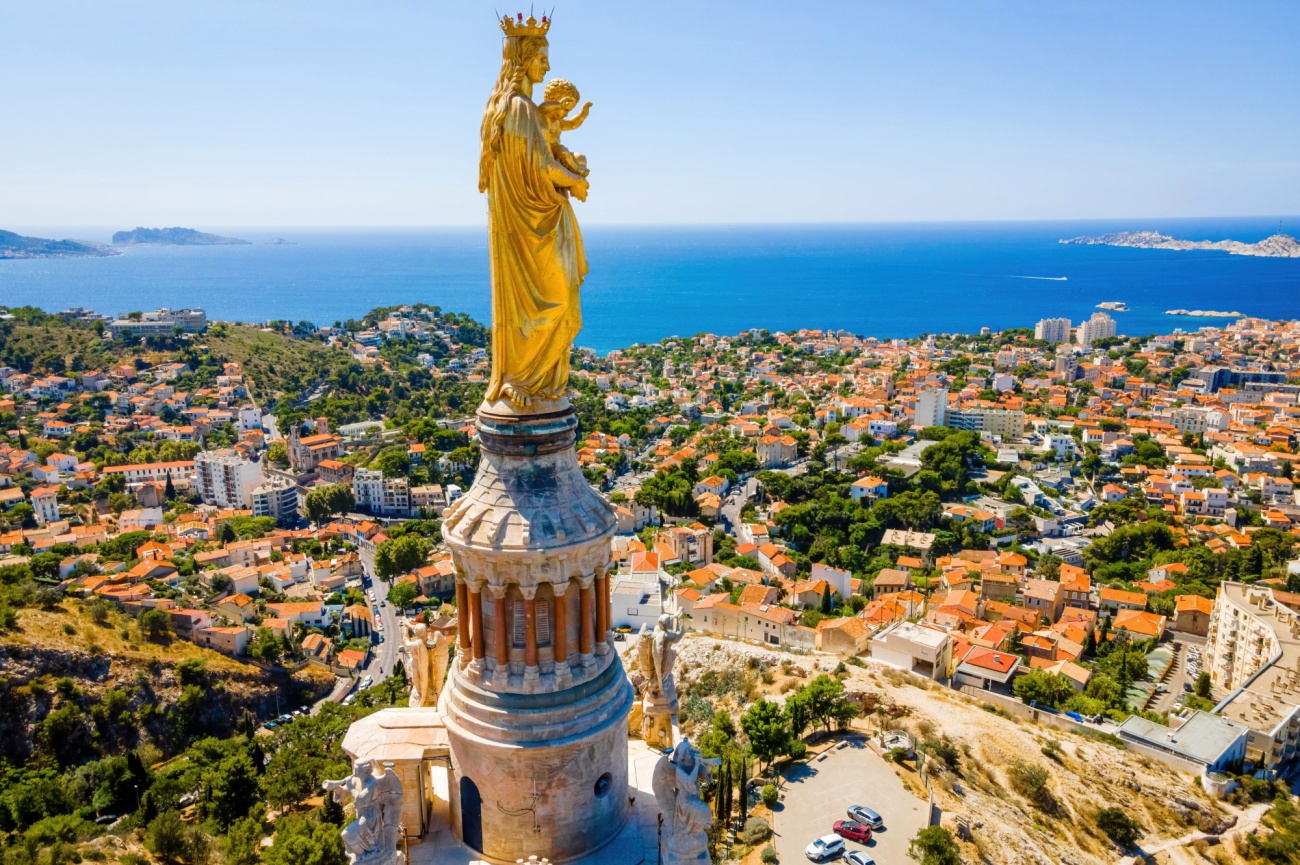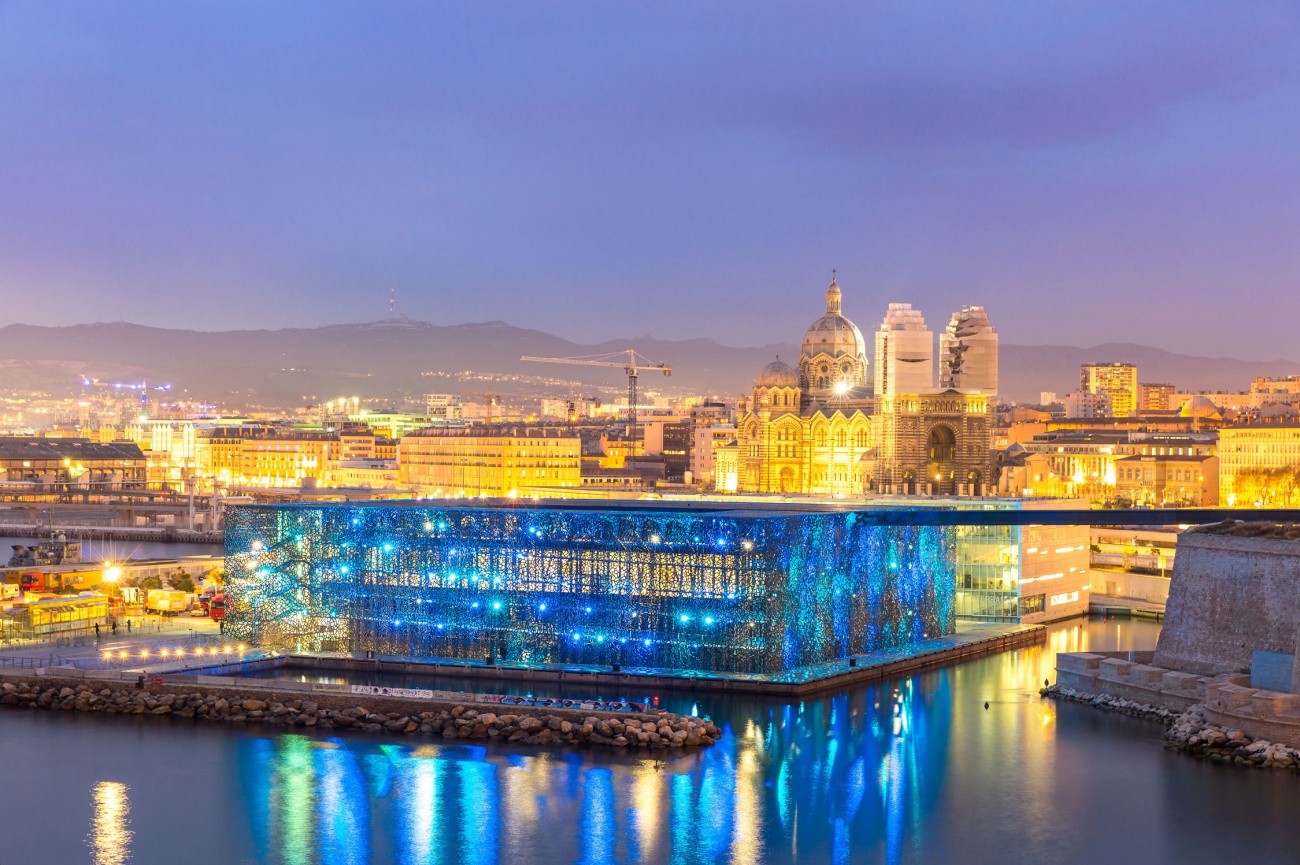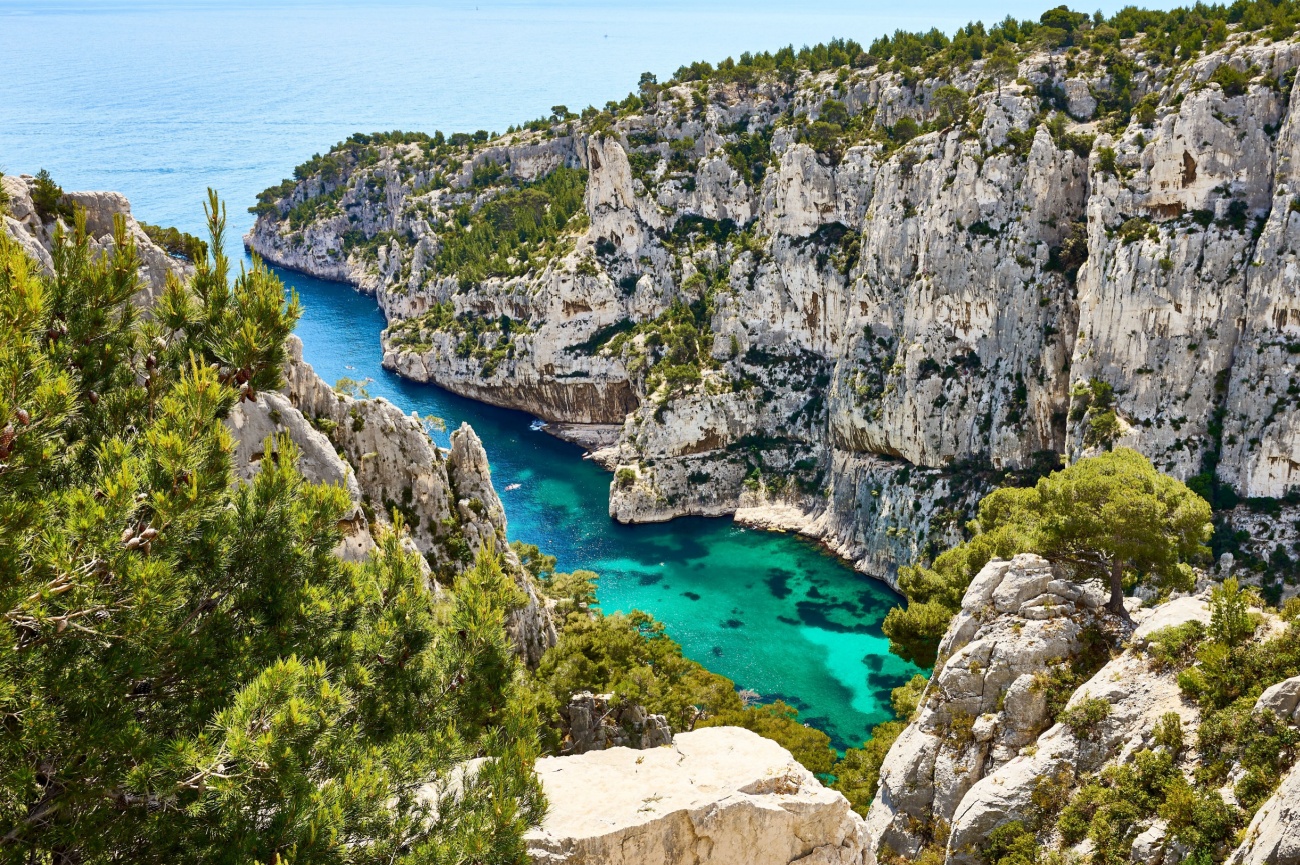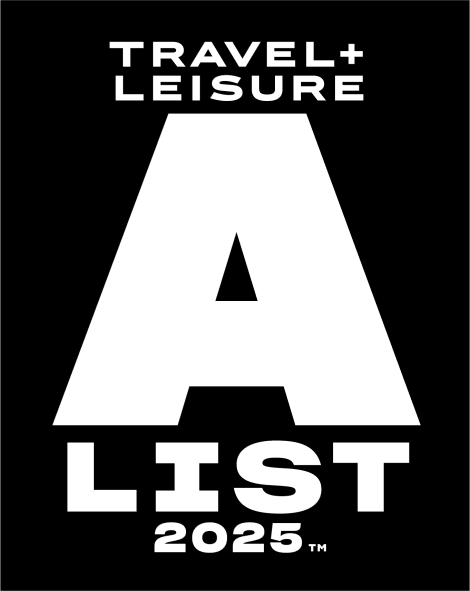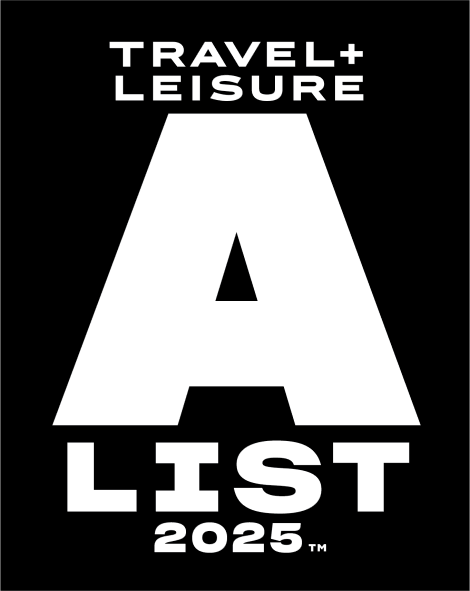TGV Lyria: Luxury Train Travel Between France and Switzerland
This train is born out of a beautiful Franco-Swiss friendship. TGV Lyria is the result of years of international collaboration, sharp engineering, and a mutual love for punctuality. It all started in 1981, when France’s TGV (Train à Grande Vitesse) made its debut and suddenly everyone realized that train travel could be thrilling and efficient. Switzerland, being the classy neighbor that it is, said: “Oui, we’d like in.”
Fast forward to 1993: TGV Lyria was officially launched under the name "Ligne de Cœur" (Line of the Heart). Cheesy? Absolutely. But we’re talking about a train that literally connects hearts across borders like Paris to Geneva, Lausanne to Dijon and Zurich to the City of Light. And it’s only gotten better with time. The brand we know today as “TGV Lyria” came to life in 2002 when SNCF (France’s national railway) and SBB (Swiss Federal Railways) joined forces in a joint venture so seamless. Today, it isn’t just a mode of transport. It’s a high-speed cultural handshake. At 320 km/h, it turns hours into minutes, all while offering stunning views.
TGV Lyria Coaches

Whether you're a business traveler sprinting between meetings, a romantic soul chasing croissants in Paris or a wide-eyed wanderer bound for the Swiss Alps, the TGV Lyria coaches are built to match your mood and your needs. These trains are sleek, double-decker Euroduplex models and every coach plays a role. Each TGV Lyria train is made up of eight coaches: a finely tuned mix of comfort, function, and “ooh-la-la” efficiency. Here’s how it breaks down, coach by coach:
- 3 First-Class Coaches: Known as Première or Première Signature (depending on your destination and day of travel), these coaches are basically the VIP lounge on rails. Need to work? You've got peace, power outlets, and space to sprawl. Fancy a nap? Recline and relax. Want to eat without moving a muscle? A full meal service is delivered to your seat in Première Signature.
- 4 Second-Class Coaches (Standard): Don’t let the “second” fool you. Standard is anything but basic. It’s the best bang for your buck, with comfy seats, panoramic views and all the essentials for a smooth ride. Whether you're planning your itinerary, streaming a show or just snacking your way across the border, it’s the kind of laid-back comfort that makes hours melt away.
- 1 Buffet Coach: Ah, the MVP of mid-journey cravings. Located in the center of the train, the buffet coach is open to everyone, no matter where you're seated. Croissants? Check. Coffee? Obviously. That mysterious but oddly satisfying French snack you can’t pronounce? Go wild.
TGV Lyria Itineraries

Geneva to Paris
The TGV Lyria route from Geneva to Paris is more than a simple high-speed sprint. Depending on your departure, the trip takes between 3 hours 3 minutes and 3 hours 11 minutes. The journey covers 604 kilometers at lightning speeds of up to 320 km/h, which is barely enough time to finish a novel, but just long enough to completely forget what traffic feels like.
Geneva
Your journey begins in the land of peace talks and perfectly timed trams. Departing from Gare Cornavin, the city’s main station, you’re boarding in a place that knows a thing or two about precision. It is home to the United Nations' European HQ, the Red Cross, and more luxury watches than you can shake a gold-plated stick at.
Bellegarde-sur-Valserine
Welcome to the first French stop. Just about 30 minutes in, and already you're saying au revoir to Switzerland. Tucked into the heart of the Jura mountains, Bellegarde-sur-Valserine has long been an important transport hub. You won’t be getting off here, but trust us, it’s worth the window gawking.
Nurieux-Volognat
Now enter the slow-living section of your trip. Nestled in the Ain department of the Auvergne-Rhône-Alpes region, Nurieux-Volognat is what locals would call tranquille. It is French French for "quiet, cozy and probably surrounded by cows.” While the train stops only briefly, it’s a soft pause in your journey.
Bourg-en-Bresse
Bourg-en-Bresse is the culinary heavyweight of the region, famous for its Poulet de Bresse, the first (and only!) chicken in the world to receive Appellation d’Origine Contrôlée status. That’s right, this town has poultry with more legal protection than most designer handbags. But you will just be speeding past it on your way to the capital.
Paris Gare de Lyon
Your final stop is one of Europe’s most beautiful and busiest railway stations: Paris Gare de Lyon. With its grand clock tower and sweeping halls, it’s clear you’re not in Geneva anymore. From here, the entire City of Light is at your feet. The journey may be over, but this is where your Parisian adventure begins.
Lausanne to Paris
Lausanne to Paris really is just under four hours by train. One minute you’re sipping coffee by the calm blue shores of Lake Geneva and the next, you’re navigating Parisian boulevards with a baguette under your arm. No airport queues. No traffic jams. Just 700 km of effortless cross-border adventures. The train will be zipping through seven cities on this journey.
Lausanne
You board at Lausanne Gare, which is perched above Lake Geneva and backed by the Vaud Alps. This place isn’t just pretty, it’s brainy too. It is home to the Olympic Committee and some of Switzerland’s most prestigious universities. But don’t get too comfortable, you’re about to swap your lake views for city lights. Just grab your seat, settle in, and let the vineyards roll by.
Vallorbe
Located near the French border, Vallorbe is the final Swiss curtain call before entering France. Known for its underground caves and proximity to the Jura mountains, it’s a gem for hikers, geologists and anyone with a healthy respect for stalactites. Hold your breath (not literally, please) as you cross the border under the Jura in one of Switzerland’s longest railway tunnels.
Frasne
Now in France, Frasne is at a crossroads of scenic proportions. Located in the Doubs region, it’s small, green, and deeply connected. Frasne links up with local TER trains to Pontarlier and beyond, making it a sort of rural launchpad for mountain wanderers. The landscape here is all pine forests, rolling hills and the kind of quiet you can’t put a price on. Blink and you’ll miss it, but we recommend staying awake for this stretch.
Mouchard
If your train stops here, consider yourself lucky, it’s not on every schedule. Mouchard is a tiny town with a proud rail legacy, serving as a junction between the scenic Jura Line and routes deeper into Burgundy.
Dole
Dole is a city that punches way above its weight. Once the capital of Franche-Comté, it boasts Renaissance architecture, canal-side strolls, and a historic core that looks like a movie set. The town is known for its quiet charm, pink rooftops and strong culinary roots.
Dijon
One of the TGV Lyria’s most celebrated stops, and not just because it gives sandwiches an extra kick. It’s a city where art, history and gastronomy hold hands and dance through cobbled streets. The train won’t pause for long, but if you ever come back, pack an appetite and an empty suitcase. Those wine bottles won’t carry themselves.
Paris Gare de Lyon
And in less than 4 hours, you’ve arrived at Paris Gare de Lyon, the city’s 12th arrondissement gateway to magic, mayhem and Michelin stars. The station itself is a looker, with its Belle Époque charm and the iconic Le Train Bleu restaurant upstairs (if you're into chandeliers and steak tartare, that is). Step outside and you're moments from the Seine and enough pastry shops to ruin your willpower.
Basel-Zurich to Paris
When you board the TGV Lyria from Basel or Zurich to Paris, you're signing up for a very different kind of travel. Whether you’re boarding in Switzerland’s financial capital or its tri-national gateway city, you’re in for a high-speed transformation. In under 4 hours from Zurich, you’ll go from “Swiss neutral” to “Paris chic” without even realizing your seat was reclining.
Zurich Hauptbahnhof
If you’re starting in Zurich, you’re launching from the biggest, busiest station in Switzerland and one of the oldest in Europe. Zurich Hauptbahnhof is a marvel of punctuality, cleanliness and people moving with purpose. Outside, Zurich offers lakeside serenity and banking sophistication; inside, the station’s got more shops than a small mall. It’s efficient. It’s elegant. It’s unmistakably Swiss.
Basel SBB
If Zurich is the brain, Basel is the border-hopping heart. Located at the intersection of Switzerland, France, and Germany, Basel SBB is the only station in Europe jointly operated by two countries (France and Switzerland). But you’re not staying. You’re gliding straight into the French countryside like a true train jet-setter.
Mulhouse
Tucked in the Alsace region, Mulhouse is a city that doesn’t get nearly enough credit. Known for its technical museums, cars, trains and electricity, this place is a goldmine for industrial design nerds and history lovers. But it also surprises with beautifully preserved 19th-century architecture, colorful facades and a dash of Franco-German culture.
Belfort–Montbéliard TGV
While it’s not on every schedule, if your train does swing by, know that you're passing through the engineering and innovation hub of France. Belfort is famous for its lion sculpture (crafted by the same guy who built the Statue of Liberty, no big deal) and its deep roots in the mechanical industry.
Dijon
Ah, Dijon, the final stop before the train enters the gravitational pull of Paris. This is where local mustard has its own museum. The city is steeped in medieval charm and Renaissance beauty, with timber-framed houses and cobbled lanes galore. You might not have time for a tasting flight or tartare here, but the air alone is probably 30% Pinot Noir.
Paris Gare de Lyon
And just like that, the City of Light welcomes you. Paris Gare de Lyon is a showstopper of a station. Whether you’re here for a gallery opening, a fashion fix or just a damn good baguette, Paris delivers.
Geneva-Lausanne to Marseille
If summer had a train, this would be it. Running seasonally between June 28 and August 24, the TGV Lyria from Geneva or Lausanne to Marseille is the ultimate warm-weather flex. One train. Two countries. Six stylish stops. Zero jet lag. And yes, it is real: Geneva to Marseille in just 3 hours 43 minutes, Lausanne to Marseille in 4 hours 25 minutes.
Geneva Cornavin
Your trip begins in Geneva, a city where peace talks and paddle boats go hand in hand. Departing from Gare Cornavin, you’ll start in the beating heart of the city. As you roll out past the vineyards of the Geneva countryside, you can practically hear the Mediterranean calling your name.
Bellegarde-sur-Valserine
Just over the French border, Bellegarde is a compact alpine gem tucked between mountain passes. Historically a key junction between Switzerland and France, the town’s claim to fame includes hydroelectric power, dramatic rivers and fresh mountain air. You probably won’t step off, but if your phone starts bouncing between Swiss and French roaming, this is why.
Lyon Part-Dieu
Lyon: Land of bouchons, Renaissance alleyways, and food comas you never regret. A UNESCO World Heritage Site and the gastronomic capital of France, it’s where medieval charm meets modern flair. You’ll pass through Part-Dieu Station, the city’s main high-speed hub.
Avignon TGV
Next stop: Avignon, the once-upon-a-time home of popes and still-today home of one iconic, half-finished bridge. The TGV station is just outside the historic center, but even from the window, you’ll feel the warm Provençal light, see the wide Rhone valley stretching out and maybe catch a festival crowd mid-flamenco.
Aix-en-Provence TGV
There’s something undeniably poetic about Aix-en-Provence. It’s like the French countryside wrote itself a love letter. While you won’t be disembarking, you might catch a whiff of lavender or hear the distant call of a cicada as you pass.
Marseille Saint-Charles
Bienvenue à Marseille is France’s oldest city and one of its most charismatic. You’ll roll into Saint-Charles Station, located on a hill overlooking the terracotta rooftops and glistening Mediterranean Sea. Exit the train and you’re in the heart of it all: bustling markets, narrow alleyways, bouillabaisse joints and the kind of sunshine that makes you question your return ticket. From Lausanne or Geneva to here, it’s one seamless trip.
Where to Stay

Geneva
- Hotel d’Angleterre (5 stars): Hotel d’Angleterre delivers classic luxury with a personal touch. Expect five-star service where the staff remembers your name, your favorite drink and maybe even how you take your coffee. Inside, rooms are decked in rich fabrics and antiques, with windows that frame Lake Geneva like a painting.
- Hotel Bristol Geneve (4 stars): Sitting pretty between Lake Geneva and the Old Town, Hotel Bristol Genève is an urban gem with an elegant soul. Rooms strike the perfect balance between classic charm and modern comfort.
Lausanne
- Beau-Rivage Palace (5 stars): If you're after old-world glamour with Lake Geneva at your doorstep, Beau-Rivage Palace is your dream escape. Since 1861, this grand hotel has been the choice of royalty, celebrities, and anyone who appreciates chandeliers, sweeping lake views, and Michelin-starred dining.
- Hotel Angleterre (4 stars) brings together refined elegance and contemporary comfort in one of Lausanne’s most iconic addresses. Overlooking Lake Geneva and just steps from the Ouchy metro, this historic hotel offers serene rooms, polished service, and an understated charm that’s ideal for travellers who want lakeside luxury without the pomp.
Basel
- Grand Hotel Les Trois Rois (5 stars): The grand dame of Basel, Les Trois Rois is where elegance meets history on the banks of the Rhine. Stepping inside feels like entering a royal residence. Expect antique furnishings, chandeliers and rooms with river views that are made for postcards.
- Bio GAIA Hotel Basel (4 stars): Eco-conscious without compromising comfort, Bio GAIA is Basel’s stylish green stay. Bright and modern, the rooms are designed with sustainable materials and a minimalist touch that soothes both eye and soul.
Zurich
- Baur au Lac (5 stars): Tucked into its own private park and overlooking both Lake Zurich and the Swiss Alps, Baur au Lac is a timeless icon of Swiss luxury. Family-owned since 1844, this hotel is all about discreet elegance and world-class service.
- Sorell Hotel St. Peter (4 stars): Sorell Hotel St. Peter is a boutique retreat right in the heart of Zurich. The rooms are airy and minimalist with thoughtful touches. Yes, that’s a Nespresso machine in your room. It’s ideal for travelers who want a sleek design without giving up comfort.
Paris
- Le Meurice (5 stars): If Paris had a royal residence, it would be Le Meurice. Facing the Tuileries Garden and just steps from the Louvre, this legendary palace hotel is dripping in 18th-century opulence. The Michelin-starred Restaurant le Meurice Alain Ducasse makes dining here as magical as the view.
- Hotel des Grands Boulevards (4 stars): Tucked between the trendy Marais and the bustle of the Grands Boulevards, this boutique gem blends historic Parisian architecture with sleek and contemporary design. Hotel des Grands Boulevards is a hideaway with a secret rooftop bar, canopy beds and one of the chicest courtyards in town.
Marseille
- Hotel Dieu Intercontinental Marseille (5 stars): If you’re looking for a stay that feels straight out of a postcard, Hotel Dieu Intercontinental Marseille is your answer. Set inside an 18th-century building overlooking the Old Port, this five-star stunner is all about drama with sweeping staircases, soaring ceilings, and panoramic views of Notre Dame de la Garde.
- Hotel NH Collection Marseille (4 stars): Smack in the middle of the historic La Joliette district, Hotel NH Collection Marseille is where old-world charm meets crisp, modern style. Rooms are bright, stylish, and soundproof (a blessing in a busy port city).
Where to Eat

Geneva
- Il Lago: Located inside the iconic Four Seasons Hotel des Bergues, Il Lago is a one-Michelin-star restaurant that brings northern Italian elegance straight to your plate. The ambiance? Refined but never stuffy. Expect handmade pasta, delicate seafood dishes, and a wine list that reads like a love letter to Italy’s best vineyards.
- Izumi: High above Geneva, on the rooftop of the Four Seasons, Izumi is where Japanese-Peruvian fusion meets jaw-dropping lake views. Specializing in Nikkei cuisine, the menu takes sushi and sashimi to the next level.
Lausanne
- La Table du Lausanne Palace: With two Michelin stars and views over Lake Geneva, this restaurant turns every plate into poetry. Chef Franck Pelux crafts refined French dishes using local ingredients, Imagine Bresse chicken with seasonal vegetables.
- Cafe Romand: If you’re going to try Swiss classics in Lausanne, Café Romand is the place to do it. This local institution has been serving dishes like fondue, rösti, and papet vaudois (that’s sausage with leeks and potatoes, for the uninitiated) since forever.
- Sleepy Bear Coffee: Tucked into the cobbled streets of the Flon district, Sleepy Bear Coffee is where Lausanne’s creative crowd gets their caffeine fix. They take their brews seriously. Just think of single-origin beans, precision pours and latte art that’s almost too pretty to drink (almost).
Basel
- Cheval Blanc by Peter Knogl: Located inside the Grand Hotel Les Trois Rois, Cheval Blanc by Peter Knogl is Basel’s culinary crown jewel. With three Michelin stars and a dining room overlooking the Rhine, this is where haute cuisine meets high romance. Chef Peter Knogl combines classic French technique with Asian precision and Mediterranean soul.
- Alchemist: Welcome to Alchemist, where dinner feels like a science experiment with delicious results. This sleek, intimate spot turns molecular gastronomy into an art form, but never at the expense of flavor.
- Restaurant Portofino Basel: Craving pizza with a passport? Portofino is the kind of place where wood-fired crusts meet next-level toppings. Each slice is layered with rich, velvety tomato sauce and ingredients that whisper of Italy’s coastal charm.
Zurich
- IGNIV: IGNIV is not your average two-Michelin-star restaurant. Created by Swiss culinary legend Andreas Caminada, IGNIV flips the fine dining script with its innovative sharing concept. Instead of individual courses, beautifully plated dishes arrive at the table for everyone to enjoy together like a luxurious dinner party curated by a world-class chef.
- Widder Restaurant: Widder Restaurant is a two-Michelin-star sanctuary for those who appreciate the finer things, done with a twist. Chef Stefan Heilemann is known for fusing French haute cuisine with bold Asian influences, transforming classic European dishes into exciting, unexpected experiences.
- Hiltl: Opened in 1898, it holds the title of the world’s oldest vegetarian restaurant, but don’t let the age fool you, it’s still ahead of its time. The sprawling buffet features flavors from across the globe: Indian curries, Mediterranean mezze, Asian stir-fries and Swiss classics, all 100% plant-based.
Paris
- Le Jules Verne: Dining here is basically eating inside the Eiffel Tower. It is on the second floor of the Iron Lady herself, Le Jules Verne delivers fine French cuisine with breathtaking panoramic views. Under the direction of chef Frédéric Anton, the Michelin-starred tasting menus are a masterclass in French elegance.
- Le Relais L’entrecôte: When in Paris, do as the locals do and queue up for steak-frites at this no-reservations spot with cult-like status. There’s only one dish on the menu: tender steak with the restaurant’s legendary secret sauce, served alongside golden, crispy fries.
- Café de Flore: Possibly the most famous café in Paris, Café de Flore is where writers, artists and lovers have gathered for over a century. Sit outside, order an espresso or a hot chocolate and people-watch like a pro.
Marseille
- AM par Alexandre Mazzia: When we say culinary wizardry, we mean AM par Alexandre Mazzia. This three-Michelin-star restaurant is the definition of Marseille’s food scene. Chef Mazzia’s background in basketball might explain the precision and rhythm of his kitchen. The menu is a sensory journey through land and sea.
- Chez Fonfon: If you came to Marseille and didn’t try bouillabaisse, did you even really come to Marseille? Head straight to Chez Fonfon, a charming family-run spot tucked into the Vallon des Auffes fishing port. It’s famous for serving the most authentic bouillabaisse in town.
Other Things to Do

Geneva
- Take a private cruise on Lake Geneva: There’s no better way to soak in the beauty of Geneva than from the water. Set sail on a private Lake Geneva cruise and glide past storybook villages, elegant Belle Époque villas, and the iconic Jet d’Eau fountain. Most cruises depart from Geneva’s historic waterfront and last about 90 minutes.
- Tour the Palais des Nations: Get a behind-the-scenes look at diplomacy in action. The Palais des Nations, Europe’s UN headquarters, opens its doors to the public through guided tours. You'll walk through grand assembly halls and the striking Human Rights Room.
- Explore Château de Penthes & the Museum of Swiss Abroad: Tucked away in a leafy estate, Château de Penthes is where Swiss history gets a global twist. This former 14th-century manor now houses the Musée des Suisses Dans Le Monde (Museum of Swiss Abroad), showcasing the lives and legacies of Swiss pioneers around the world.
Lausanne
- Visit the Olympic Museum: In Lausanne, the Olympic spirit is sprinting through the streets. Inside the Olympic Museum, you’ll find over 1,500 exhibits, interactive zones and memorabilia from every era of the Games. Test your reaction time, walk a simulated track or marvel at torches and medals from past Olympiads.
- Climb the Sauvabelin Tower: Ready for views that make you say “wow” out loud? Head to Sauvabelin Tower, a 35-meter-high wooden spiral that looks straight out of a fantasy novel. The reward at the top is a panoramic view of Lausanne, Lake Geneva and even Mont Blanc on a clear day.
- Explore the Lausanne Cathedral: If you’re only going to visit one Gothic cathedral in Switzerland, make it this one. Built in the 12th century and consecrated in 1275 (yes, it’s been around longer than most countries), this towering landmark is a testament to craftsmanship, faith and seriously good stonework.
Basel
- Cross the Timeless Mittlere Brucke: More than just a bridge, Mittlere Brücke is Basel’s unofficial red carpet. Originally built in 1226, it’s one of the oldest crossings over the Rhine and easily one of the most storied. Today, the bridge serves as a picture-perfect link between Basel’s Old Town and the modern buzz of Kleinbasel.
- Wander the halls of Kunstmuseum Basel: This is Switzerland’s oldest public art museum and arguably one of the most beautiful museums in Europe. Its collection is a roll call of the greats: Van Gogh, Cézanne, Holbein and Picasso.
- Make Paper (and Memories) at the Basler Papiermühle: This 15th-century watermill brings Basel’s papermaking and printing history to life. Try your hand at making your own sheet of paper, set your name in type, or dip a quill into ink like a 16th-century scribe.
Zurich
- Join a private cruise on Lake Zurich: Why not start your day like a true Zürcher with the wind in your hair and wine in hand? You’ll find scheduled rides ranging from breezy 90-minute jaunts to four-hour floating getaways. Some boats even offer gourmet dining on board.
- Visit Lindt Home of Chocolate: It’s time to indulge in Switzerland’s sweetest pride and joy, chocolate. The Lindt Home of Chocolate is more than a museum, it’s a shrine to cocoa. As you step inside, you’ll be greeted by the world’s tallest chocolate fountain (1,500 liters of flowing bliss) and a scent that could convert any non-believer.
- Watch a Zurich Opera House performance: Opened in 1891, this Neo-Baroque jewel may be one of Europe’s smallest major opera houses. With just over 1,100 seats, every note of Verdi or Mozart feels like it’s being sung just for you. The repertoire swings from timeless classics to bold contemporary productions, making it a must for both purists and the opera-curious.
Paris
- Take a Seine River Cruise at sunset: Paris isn’t called the City of Light for nothing and there’s no better way to see it glow than from the water. Hop on a Bateaux Mouches cruise as the sun dips below the skyline and watch iconic landmarks like Notre-Dame, the Louvre and the Eiffel Tower light up one by one.
- Get lost in the Louvre: Yes, it’s massive. Yes, it’s crowded. And yes, you absolutely should go. Even if you breeze past the Mona Lisa in under 30 seconds, the Louvre is packed with jaw-dropping art, hidden courtyards and galleries that make you feel like you’ve stumbled into a Dan Brown novel.
- Visit the Musée d’Orsay: Housed in a Beaux-Arts train station (because Paris), the Musée d’Orsay is a love letter to 19th-century art. Think Monet, Degas, Van Gogh and more. This is where you’ll fall in love with art.
Marseille
- Climb to Notre-Dame de la Garde: Every Marseillais will tell you: “She watches over us.” That “she” is Notre-Dame de la Garde, the city’s iconic basilica. The climb is a workout (or take the petit train if you’re feeling lazy), but the reward is a panoramic view of Marseille that’ll make you forget your calves are on fire. Inside, look up to see boats hanging from the ceiling.
- Visit MUCEM (Museum of European and Mediterranean Civilisations): This museum is part history, part architecture flex. Sitting right on the harbor, MUCEM is a modern cube of lace-like concrete with a footbridge to the historic Fort Saint-Jean. Inside, you’ll find exhibitions that explore the cultures of the Mediterranean.
- Sail into the Calanques: The best parts of Marseille might actually be outside the city. Book a boat tour to the Calanques National Park, where towering limestone cliffs plunge into turquoise waters that look photoshopped.
Our offices:
